

www.oup.com.au/ib
Oxford Resources for IB
Are you truly embedding wellbeing into your classroom?
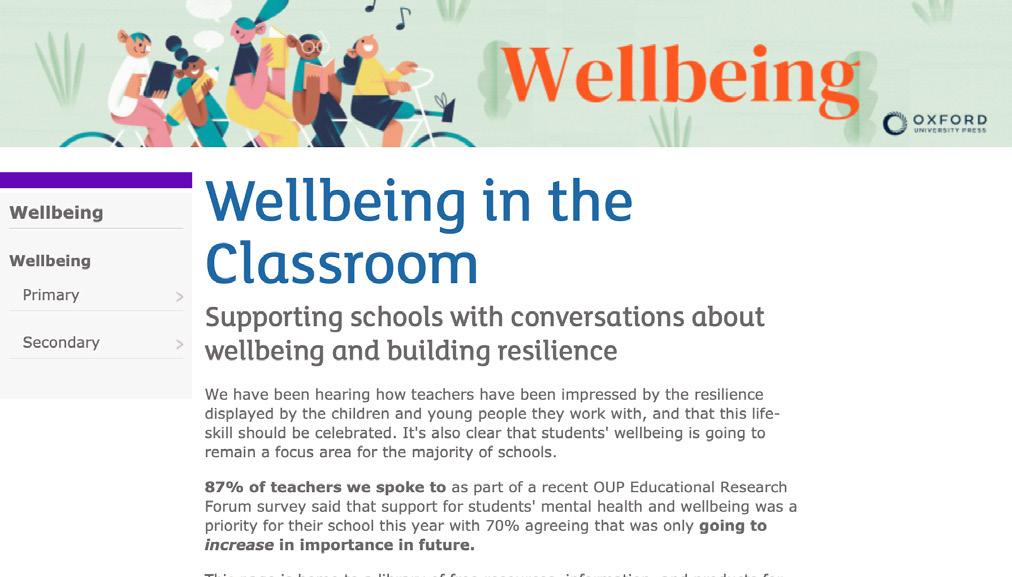
OUP is proud to put both teacher and student wellbeing at the heart of our educational offering. From professional development courses to grab-and-go resources created with experts, OUP strives to make wellbeing simple in a busy work climate.
87% of teachers
87% of teachers in a recent OUP Educational Research Forum survey said that support for students’ mental health and wellbeing was a priority for their school.
Explore our easy-to-navigate hub and integrate wellbeing into everyday learning with free resources, information, and products for teachers all around the world.
Scan the QR code to browse our hub and see how Oxford’s wellbeing offering can transform your school today.
www.oup.com/wellbeing




Table of contents
Your IB Diploma Journey with Oxford Resources for IB
Course Preparation
Developed in cooperation with the IB to provide the most comprehensive support, fully aligned to the latest subject guides.*
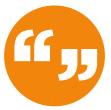

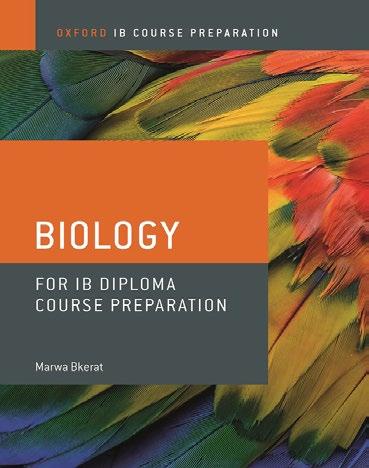
Suitable for: Diploma students at SL and HL
Course Books
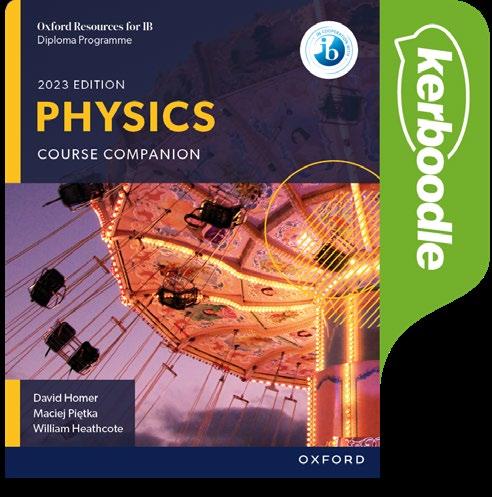
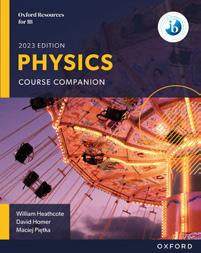
Study Guides
Directly linked to Oxford’s DP Course Books, and designed to thoroughly prepare your students to meet the demands of the IB Diploma Programme.
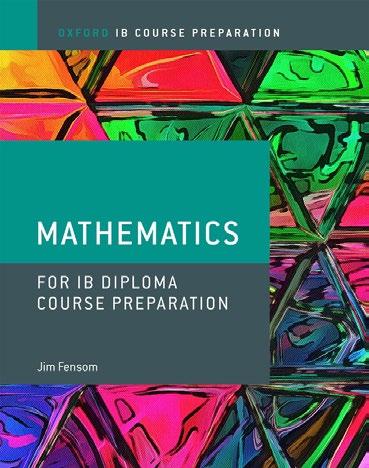
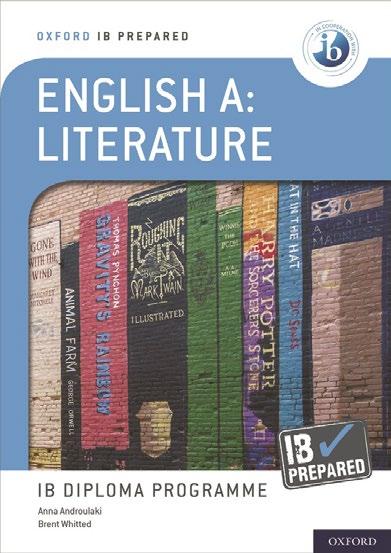
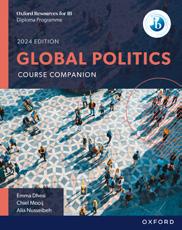
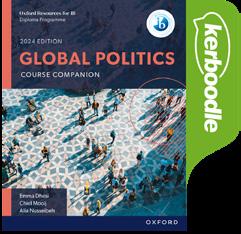
Suitable for: Students preparing to study IB Diploma (aged 15-16)
Reinforce essential theory and cement understanding of all key topics in an easy-to-digest bitesize format, perfect for use alongside our Course Books.
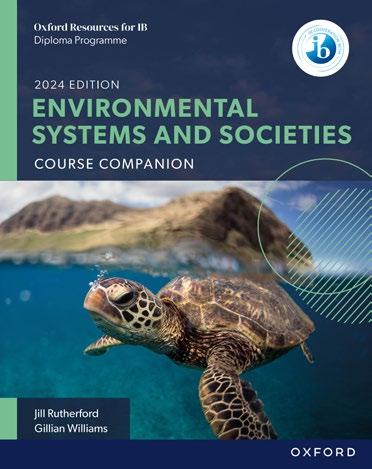
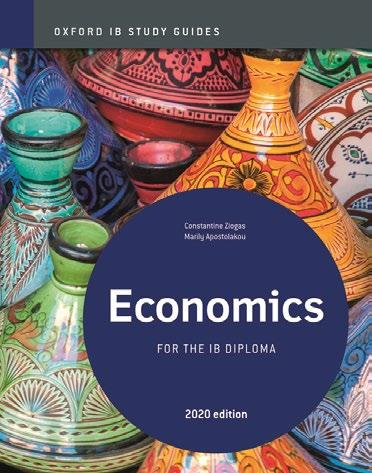
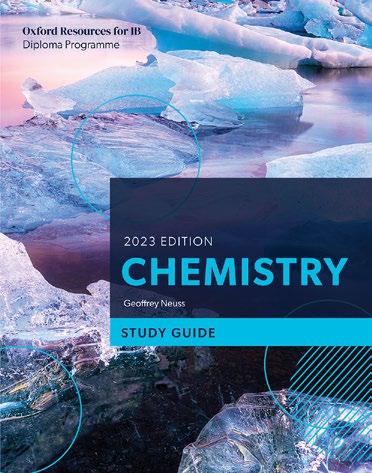
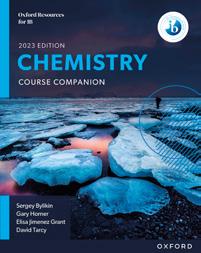
Suitable for: Diploma students at SL and HL
Provide the most up-to-date, authentic and authoritative guidance on DP assessment, developed in cooperation with the IB.

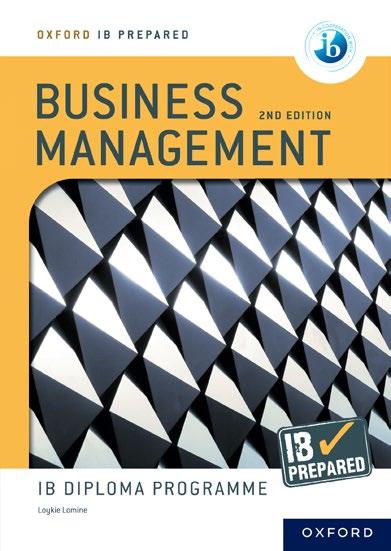
Suitable for: Diploma students preparing for assessment
*Available in a variety of print, online, and blended formats
Diploma Programme The Core 2 Studies in Language and Literature 3–4 Language Acquisition 5 Individuals and Societies 6–11 Sciences 12–15 Mathematics 16–17 The Arts 18 IB Prepared 20–22 IB Middle Years Programme Science 23 Mathematics 24–25 Language Acquisition 26–29 IB Primary Years Programme Oxford Mathematics 30 Primary MyiMaths and Numicon 31
IB
See page 10
pages 12–13
See
IB Prepared
Ooh, what’s this? Use this key to unlock more content than ever before in our new and enhanced digital catalogues! Take a closer look Evalute Watch the video See what others think Additional resources ENHANCED ONLINE
Diploma Programme
Theory of Knowledge
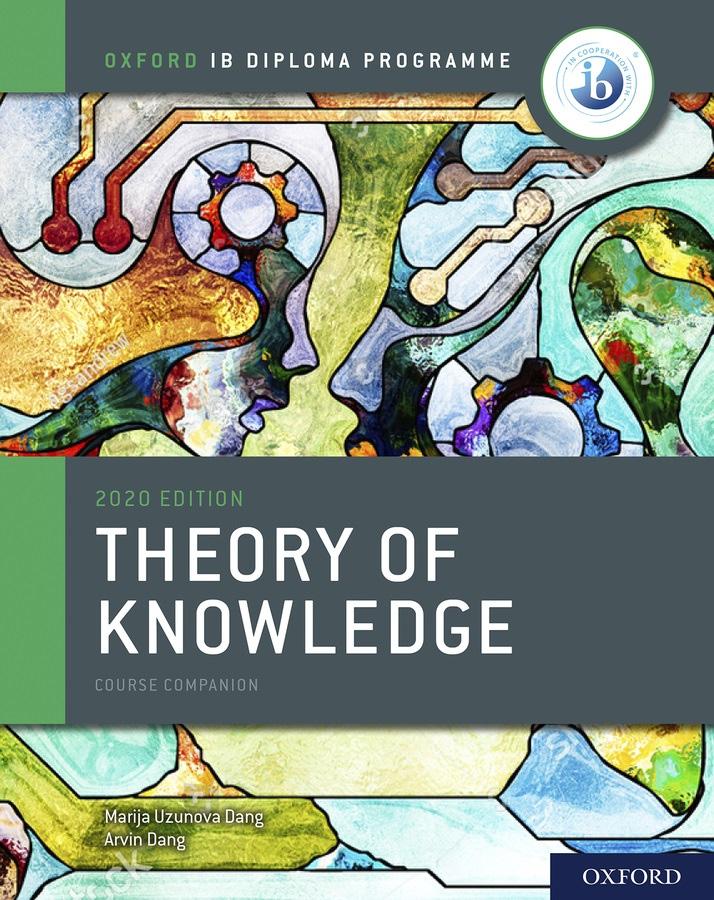
Supporting the latest TOK syllabus, these inquiry-based resources are developed directly with the IB to help learners analyze and articulate areas of knowledge.
• Provide a thorough and in-depth account of this complex subject with practical applications so students can see clearly how TOK can be useful in real-world situations
• Build deep understanding and reflection with concepts woven into tasks and discussions, plus clear links to other subject areas, ATL skills and the IB Learner Profile
• Engage in challenging tasks and activities to develop life-long thinking skills, and scaffold knowledge to enable assessment success
• The Enhanced Online Course Book provides students with access to extra support, including; support for the Exhibition, skills quizzes and key concept posters

• Provide strategic guidance on assessment, sample material and assessment-style practice opportunities via new IB Prepared: Theory of Knowledge
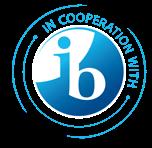

Extended Essay
Maximize achievement
Developed in cooperation with the IB, this step-by-step resource offers guidance on every aspect of the Extended Essay.
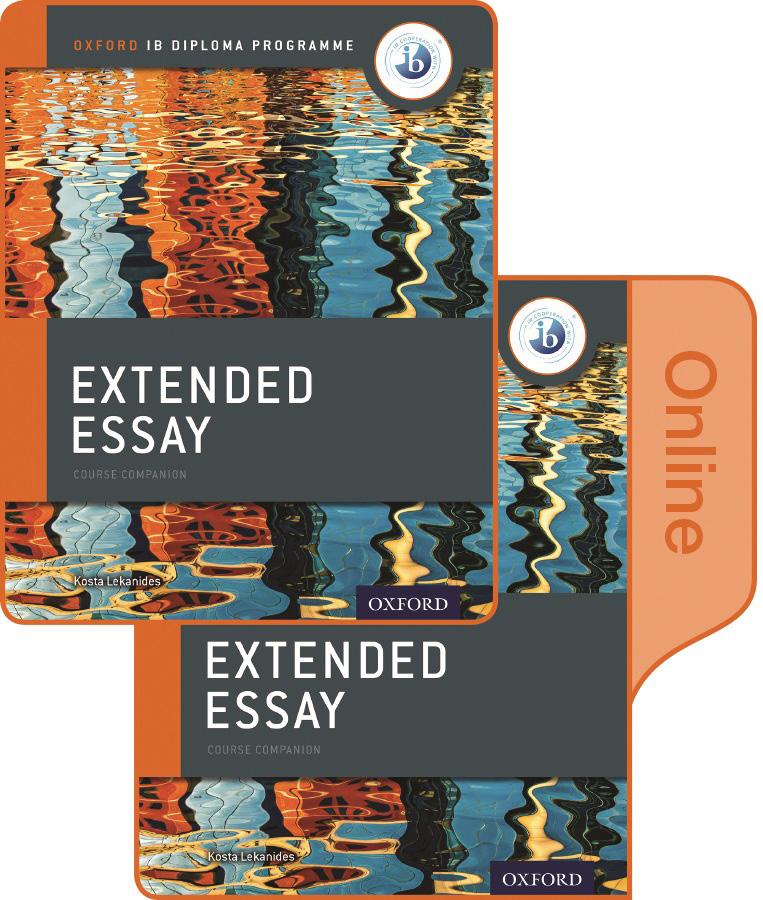
• Equip learners to fully understand and address each requirement, with a comprehensive outline of the latest assessment criteria
• Enable effective planning, research and writing with detailed guidance on every stage of the process
• Target the transferable skills that are central to success, equipping learners to achieve in the Extended Essay and beyond
DP 2
Extended Essay Course Book 978 019 837776 4 Online Course Book 978 019 837777 1 Print and Online Pack 978 019 842149 8 Theory of Knowledge Course Book 978 019 849770 7 Enhanced Online Course Book 978 019 849775 2 Print and Enhanced Online Course Book Pack 978 138 201960 6 IB Prepared (Print) 978 138 201671 1 IB Prepared (Online) 978 138 201674 2
English A: Language and Literature
Discover clear, accessible support
Developed in cooperation with the IB, this concept-based Course Book fully reflects the latest English A guide.
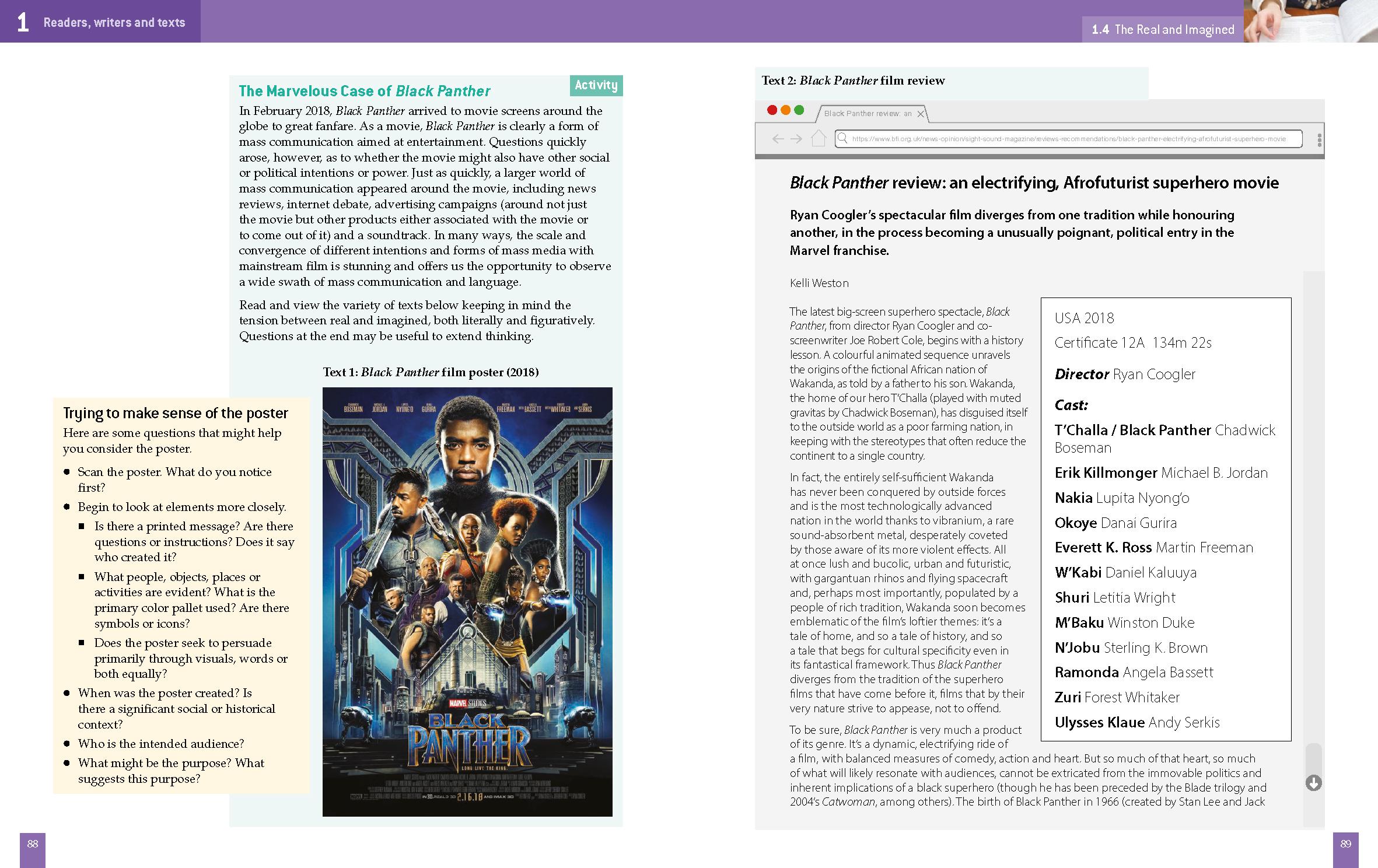
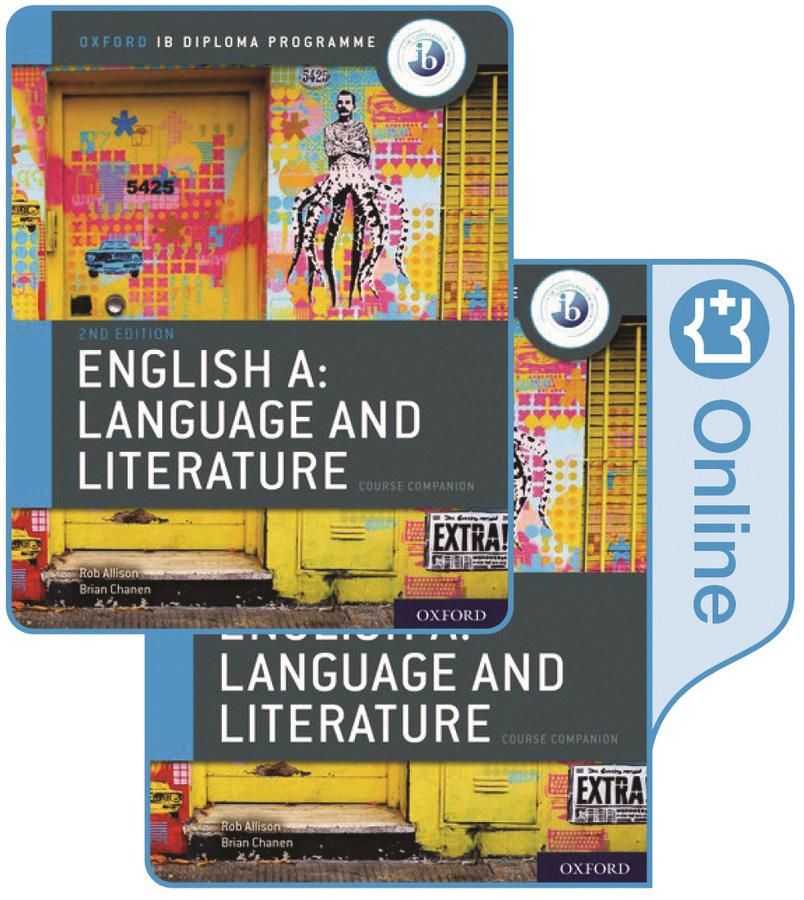
• Address all aspects of the syllabus, including areas of exploration, conceptual understanding and global concerns

• Encourage reflection, inquiry and critical thinking through integrated support for TOK and ATL, plus guidance on the new learner portfolio
• Thoroughly prepare students for IB assessment via overviews of all components, exam-style practice questions and support for the new IA
• Provide strategic guidance on assessment, sample material and exam-style practice opportunities via new IB Prepared: English A

Language and Literature
IB English A: Language and Literature Course Book (2nd edition)
English A: Language and Literature (2nd edition) Course Book 978 019 843452 8 Enhanced Online Course Book 978 019 843455 9 Print and Enhanced Online Course Book Pack 978 019 843458 0 IB Prepared (Print) 978 138 200716 0 IB Prepared (Online) 978 138 200719 1
DP 3
English A: Literature
Deliver a rich, concept-based approach
Developed in cooperation with the IB, this rigorous Course Book provides a clear route through the latest English A guide.
• Address all aspects of the syllabus via in-depth coverage of the course structure and content, with plenty of engaging extracts and activities

• Develop learners’ appreciation for the nuances of different text types, and the possibilities for connections across the syllabus
• Support assessment preparation with tips, exam-style practice questions, and support for the new IA
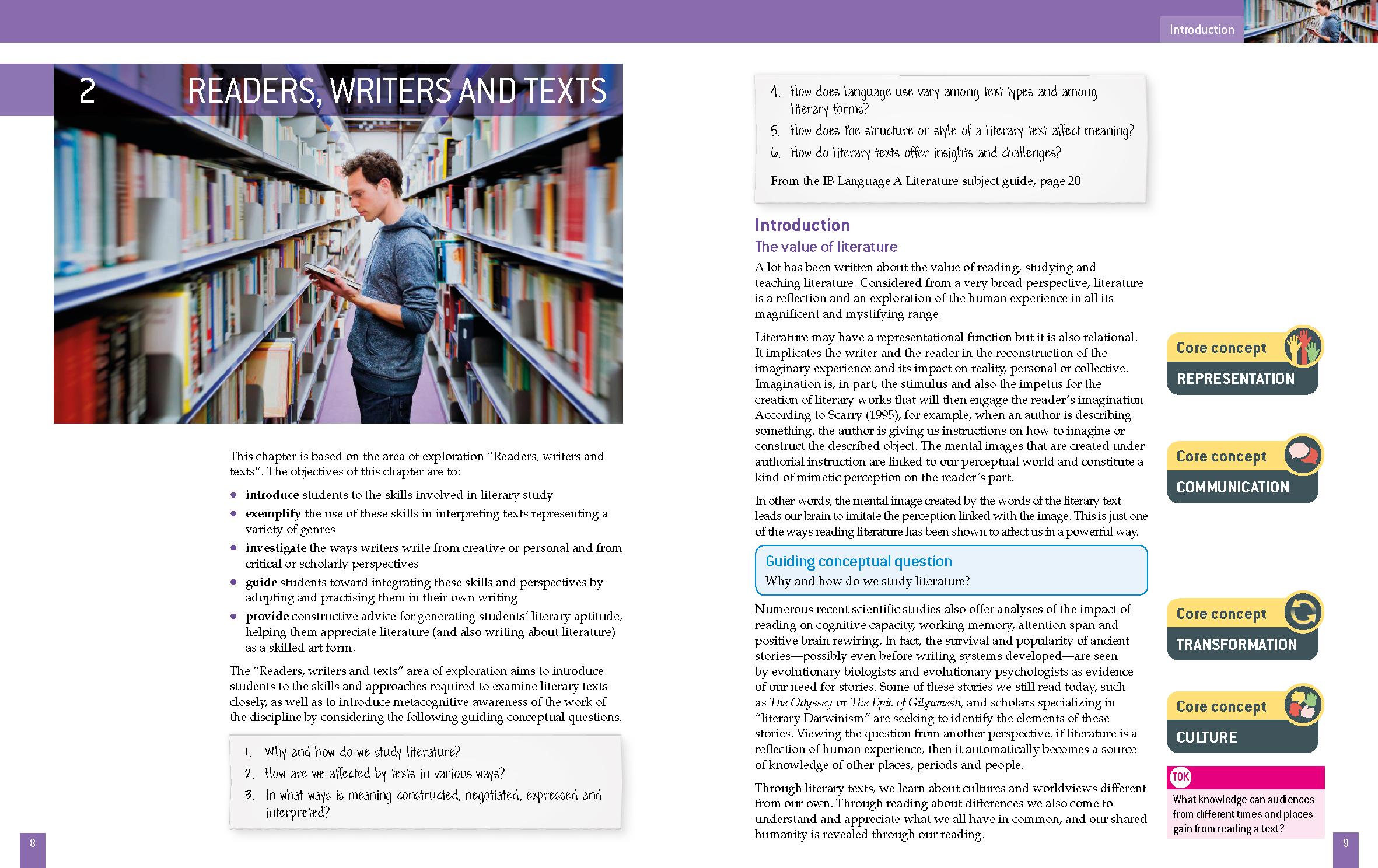
• Provide strategic guidance on assessment, sample material and examstyle practice opportunities via new IB Prepared: English A Literature

IB English A: Literature Course Book (2nd edition)
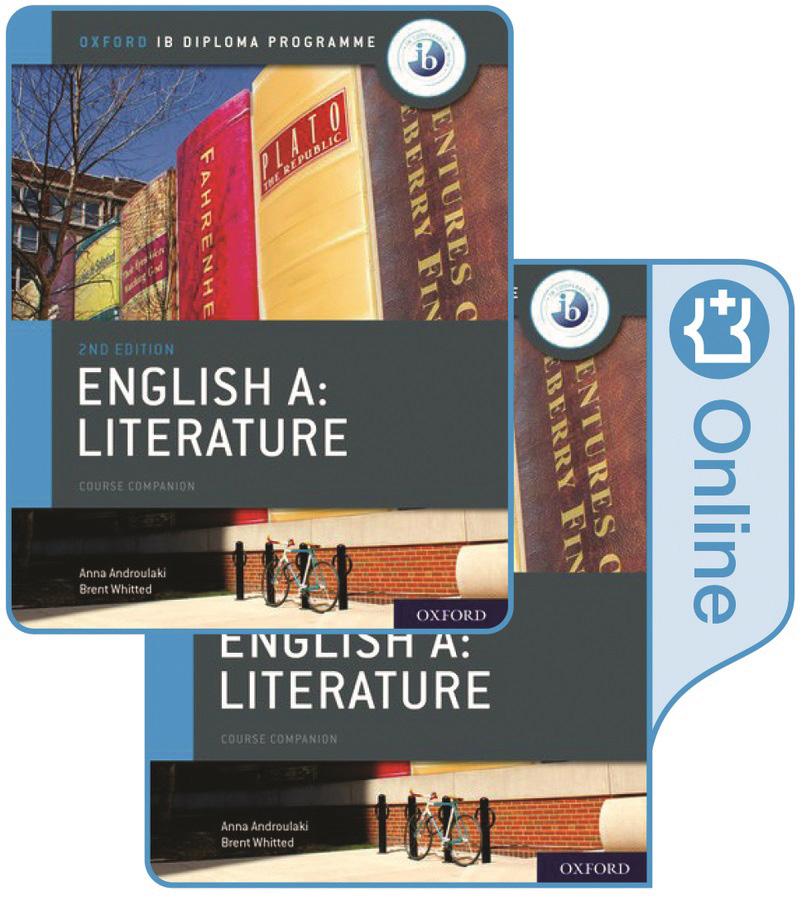
DP 4
Literature
edition) Course Book 978 019 843461 0 Enhanced Online Course Book 978 019 843464 1 Print and Enhanced Online Course Book Pack 978 019 843467 2 IB Prepared (Print) 978 138 200710 8 IB Prepared (Online) 978 138 200713 9
English A:
(2nd
English, French and Spanish B
Provide an interactive learning experience
Each Print and Enhanced Online Course Book Pack has been developed in cooperation with the IB to provide the most comprehensive support for the latest syllabus.
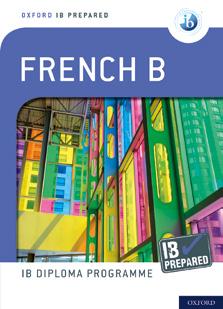
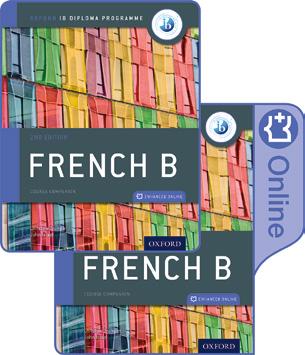
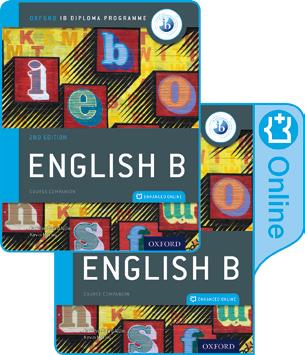
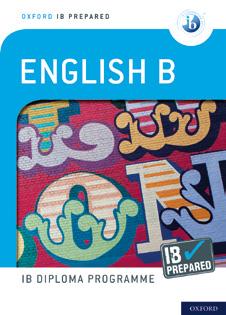
• Address crucial aspects of the 2018 syllabus with in-depth coverage of all themes and concepts, plus links to TOK, CAS and ATL
• Build sophisticated reading, writing, speaking and listening skills via contemporary, international texts and audio-visual exercises
• Provide strategic guidance on assessment, sample material and exam-style practice opportunities via new IB Prepared resources
Print and Enhanced Online Course Book Packs
Print and Enhanced Online Course
Book Pack
978 019 842232 7
Enhanced Online Course Book
978 019 842233 4
IB Prepared

Print
978 019 842477 2
Online
978 019 843440 5
Print and Enhanced Online Course
Book Pack
978 019 842237 2
Enhanced Online Course Book
978 019 842238 9
Print and Enhanced Online Course

Book Pack
978 019 842242 6
Enhanced Online Course Book
978 019 842243 3
Print 978 019 842471 0
Online
978 019 843437 5
Print 978 019 842474 1
Online
978 019 843434 4
My students very much enjoy all the vivid images Spanish B provides. They are a fantastic motivator for discussions, and the questions and prompts provided encourage connections and are thought-provoking.
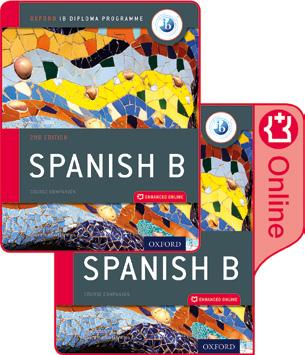
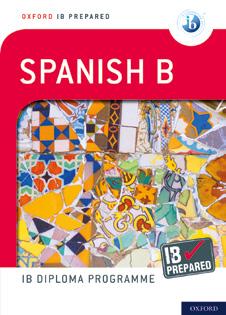
Ana Banomera, Spanish B teacher, Wisconsin USA
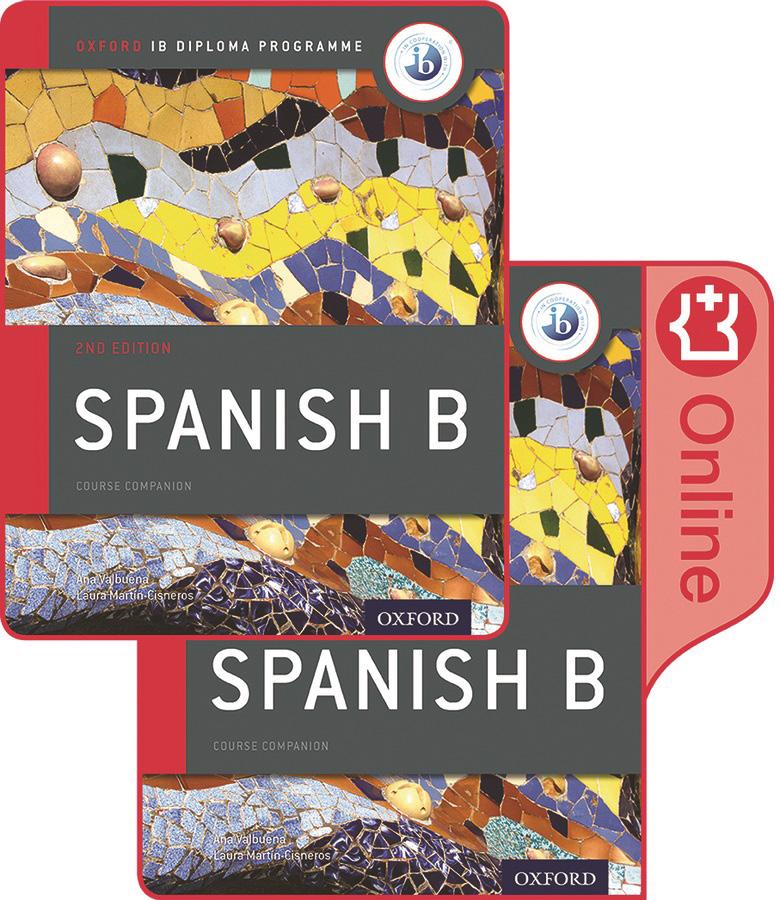
DP
English B French B Spanish B 5
Economics
Develop a deeper understanding of Economics
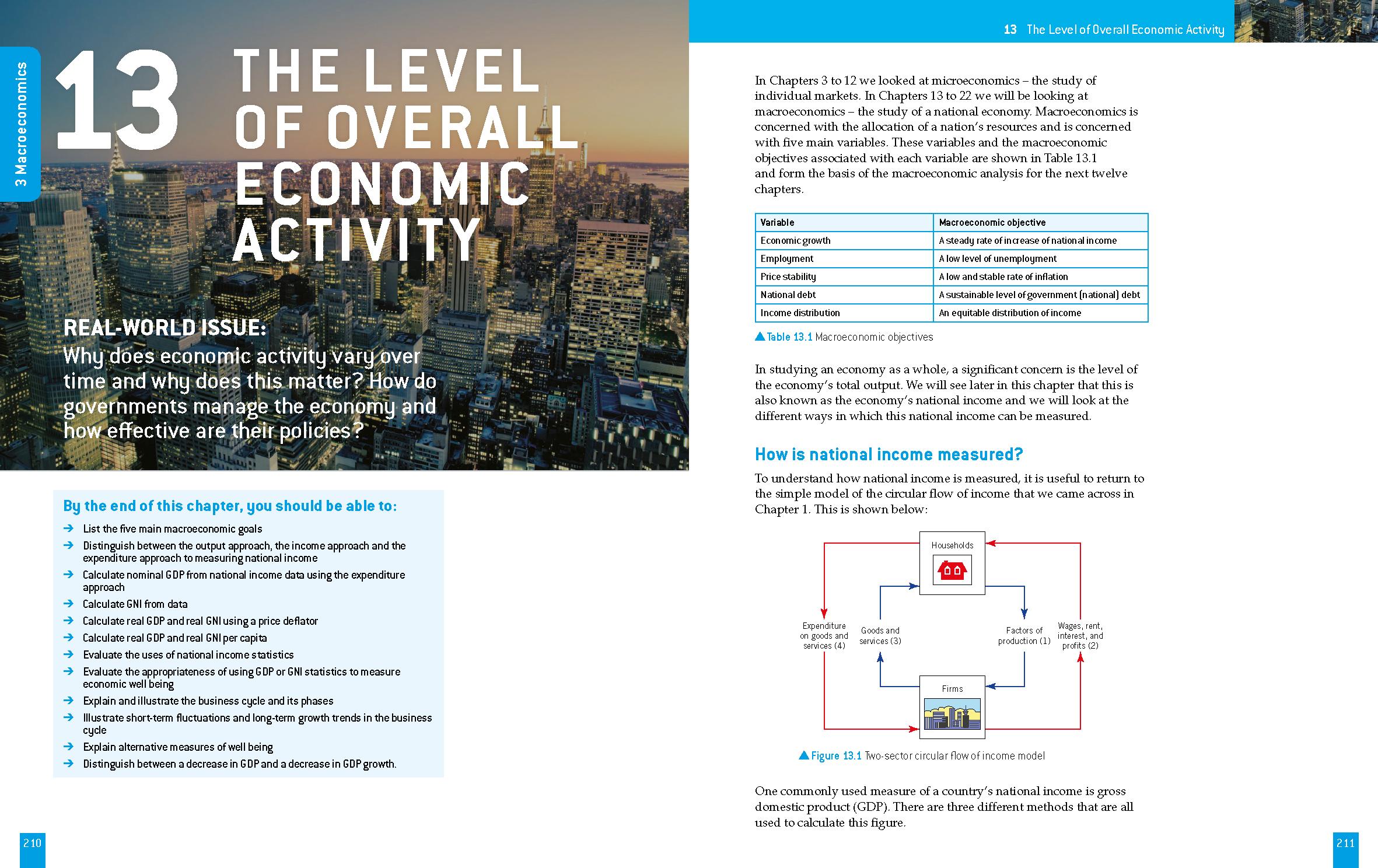
Developed in cooperation with the IB, our bestselling Couse Book has been revised and updated to provide the most comprehensive support for the latest DP Economics syllabus.


• Build accessible and engaging lessons with an emphasis on real-world international examples and case studies
• Deepen economic understanding via inquiry-based tasks, links to TOK and ATL skills activities
• The Enhanced Online Course Book provides students with access to extra support, including; knowledge check and summative quizzes, worksheets, glossary and step-by-step advice on how to draw diagrams

• Prepare learners for the step up from pre-16 courses to DP via Economics Course Preparation
• Cement knowledge via the Study Guide’s concise summaries of course content and key definitions
DP 6
Economics IB Course Preparation 978 138 200490 9 Course Book 978 138 200496 1 Enhanced Online Course Book 978 138 200502 9 Print and Enhanced Online Course Book Pack 978 138 202022 0 IB Prepared (Print) 978 138 203389 3 IB Prepared (Online) 978 138 203391 6 Study Guide 978 138 200942 3 IB Economics Print and Enhanced Online Course Book (2020 edition)
Business Management

Developed in cooperation with the IB for the most comprehensive support

Packed full of engaging activities, this blended resource has been developed directly with the IB to fully match all aspects of the latest SL and HL Business Management syllabus, for first teaching in 2022 with first assessment in 2024.
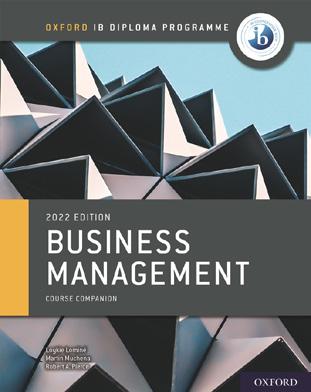
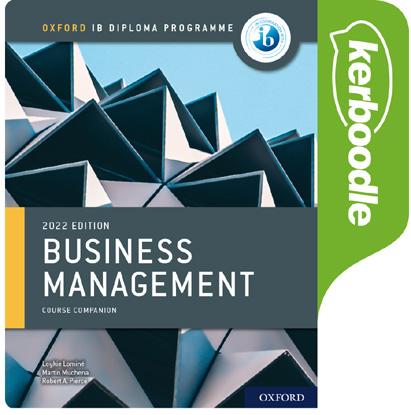
• Develop outward-looking learners with global case studies, revised key concepts, contemporary content and support for toolkit skills
• Provide the most accurate assessment support, from experienced IB practitioners, for the strongest results
• Align your teaching with the IB philosophy, challenging learners with fresh and timely TOK questions
• Offer access in the classroom and at home, and enhance engagement with our flexible, blended offer
• Lay firm foundations of understanding with the Print Course Book, then embed the knowledge with engaging digital resources and functionality via Kerboodle, including access to the Online Course Book
Access engaging digital content

Kerboodle is a digital learning platform that works alongside your print textbooks to create a supportive learning environment. It is available for purchase by your school as an annual subscription. Access includes digital copies of the Course Book, plus a wealth of additional resources. Request a free trial today via our website! Subscription price is based on the number of students in your cohort. Contact your local Educational Consultant for more information.
Kerboodle features include:
• A digital version of the Course Book so you and your students can access them anytime, anywhere
• Interactive quizzes at the end of each unit, with results recorded in the mark book, to track progress and provide formative feedback
• Quick knowledge check quizzes to ensure students have a good grasp of chapter content
• Inquiry videos with accompanying questions to help students explore and understand concepts
• Answer PDFs that cover student workpoints, toolkits, and practice questions from the book, giving guidance on key points
DP Human resource management 2 98 99 Human resource management Human resource management Changes in organizational structures (HL only) As well as the standard types of organizational structure described above, some businesses have attempted to adapt their structure to take account of changes in the business environment. Two examples of this are: Project-based organization Shamrock organization Project-based organization Project-based organization is designed to be more flexible and responsive to market demands. Project-based organizations have project managers who run teams of employees focusing on individual projects. After the project is completed, the team is split up and reassembled to begin another project. Typically, many teams operate at once, but they do not need to interact with each other because each team is focused on completing its own project. Each team “borrows” members of different departments to complete the project, such as accountants, operations managers and marketing specialists. This type of business structure is common in construction and IT, where businesses are often under contract to run a number of different projects at the same time. It is also known as matrix structure as often the organizational teams are shown as a matrix (see Table 2.2.1). Table 2.2.1 Matrix of organizational teams Operations management FinanceMarketingHRAdministration Project 1 manager4 employees2 employees1 employee1 employee1 employee Project 2 manager3 employees2 employees2 employees2 employees1 employee Project 3 manager3 employees2 employees1 employee1 employee1 employee Shamrock organizations This type of organization is based on a model suggested by the Irish management theorist Charles Handy. Handy argued that businesses can be more flexible by taking advantage of the changes in the external environment and its impact on workforce planning. His idea uses the national symbol of Ireland – the shamrock – which is type of clover that has three leaves on each stem. The model suggests that businesses can reduce costs, gain competitive advantage and increase response time by trimming their workforce to retain only a multiskilled core, which is concerned with the creation or delivery of a product or service. All other supporting, non-central functions are outsourced wherever possible to the periphery: The first leaf of the shamrock represents the core managers, technicians and employees essential to the business. The second leaf Handy calls the “contractual fringe”, because non-core activities are subcontracted out to specialist businesses. The third leaf consists of flexible workforce made up of part-time, temporary, and seasonal workers. Organizational structure by product Another typical way of presenting an organizational structure is by what the business produces. For example, Figure 2.2.4 shows a publisher organized according to the types of books it produces. Organizational structure by region A further typical way of presenting an organizational structure is according to where the business operations are. Figure 2.2.5 shows an example structure for a multinational corporation. Infographics can show statistical information in a way that is eye-catching and conveys key ideas visually. Bank of America is the second largest bank in the United States and has employees in many parts of the world. What kinds of conclusions can you draw about Bank of America’s workforce from the infographic below? Global management team Total U.S. workforce by gender 47% 18% 172,285 900 7,866 27,080 204,489 171,651 Infographics Key terms Project-based organization an organizational form, structure, that organizes work into projects. Thus, project-based organizations create temporary systems for carrying out different projects. Shamrock organization An organizational structure based upon the work of humanresources expert Charles Handy, who modelled the structure on the shamrock (a clover-like plant). A shamrock organization has three types of employees: the full-time professional core, a flexible labour force, and contractual (outsourced) group. Core Temporary Contractual Figure 2.2.6 Fiction Educational Current Translations Technical Board of directors Figure 2.2.4 Organizational structure by product Asia Americas Europe Africa Oceania Head ce (Germany) Figure 2.2.5 Organizational structure by region 2.2 Organizational structure Business Management Kerboodle Course
Business Management 2022 Course Book 978 138 201683 4 Kerboodle course (subscription) Contact your local Educational Consultant for more information Study Guide 978 138 202294 1 NEW IB Prepared (Print) 978 138 204304 5 Suitable for 2024 Assessments onwards NEW IB Prepared (Online) 978 138 204306
Suitable for 2024 Assessments onwards
9
6 7
History
Drive critical, independent learning
These in-depth resources have been developed in cooperation with the IB to help learners thoroughly engage with historical content.
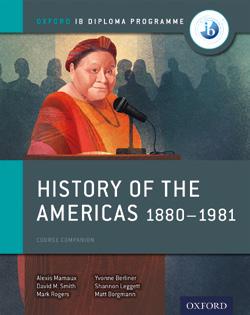
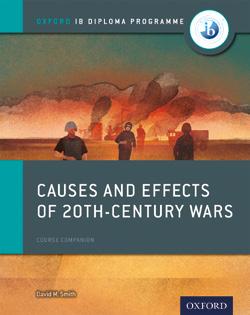
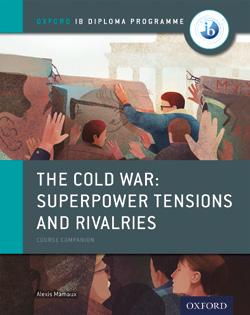
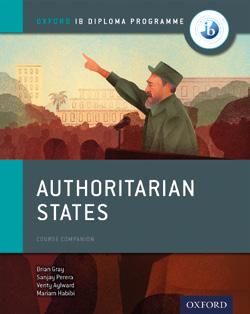
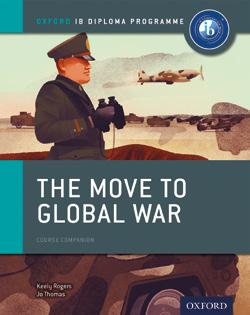
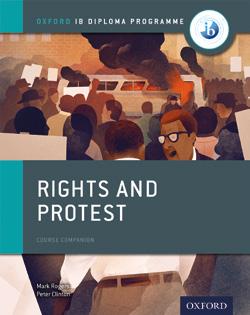
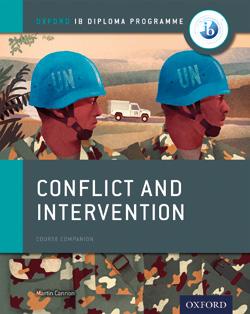
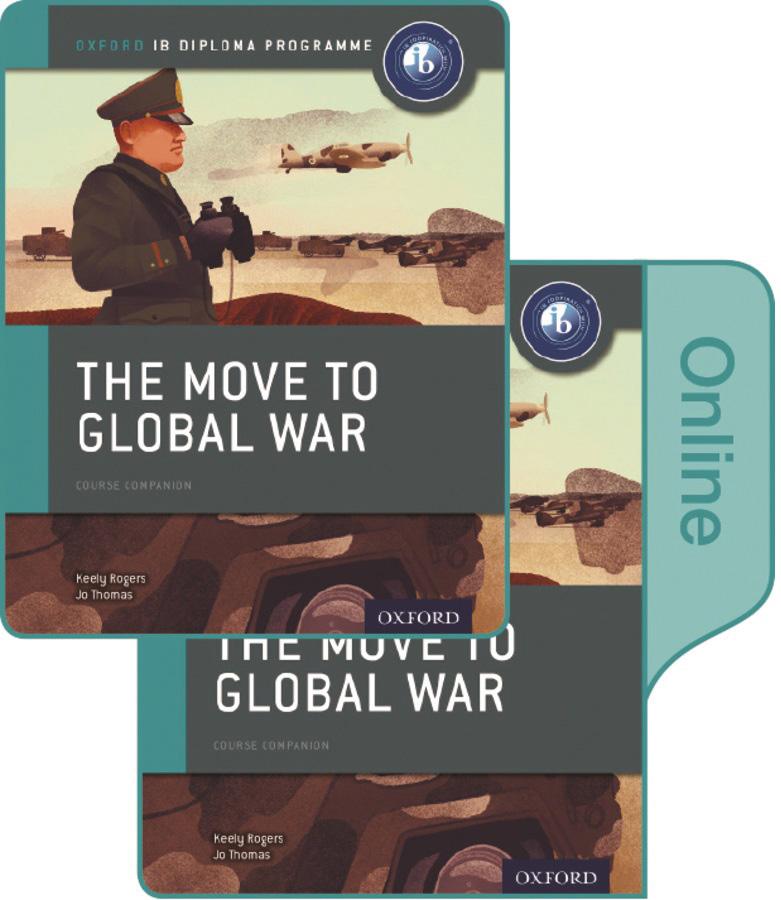
• Build a big picture, thematic understanding of history via integrated key questions, key concepts and links to modern, global themes
• Refine and strengthen key analytical skills, with ATL and TOK features, inquiry-based tasks and ‘source skills’ activities
• Provide strategic guidance on assessment, sample material and exam-style practice opportunities via IB Prepared: History

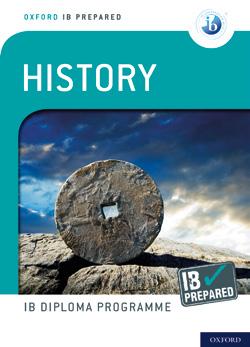
DP
IB Prepared Paper 1 Course Book 978 019 831018 1 Online Course Book 978 019 835487 1 Print and Online Pack 978 019 835493 2 Course Book 978 019 831019 8 Online Course Book 978 019 835488 8 Print and Online Pack 978 019 835495 6 Course Book 978 019 831017 4 Online Course Book 978 019 835486 4 Print and Online Pack 978 019 835494 9 Course Book 978 019 831020 4 Online Course Book 978 019 835482 6 Print and Online Pack 978 019 835490 1 Course Book 978 019 831021 1 Online Course Book 978 019 835483 3 Print and Online Pack 978 019 835491 8 Course Book 978 019 831022 8 Online Course Book 978 019 835484 0 Print and Online Pack 978 019 835492 5 Course Book 978 019 831023 5 Online Course Book 978 019 835485 7 Print and Online Pack 978 019 835489 5 Print 978 019 843428 3 Online 978 019 843431 3 Paper 2 Paper 3 8
Geography Promote an international perspective
Fully addressing the latest syllabus at SL and HL, these concept-based resources developed in cooperation with the IB provide thorough coverage of all core and optional themes.

• Clarify complex ideas and processes via the Course Book’s explanations, case studies, definitions and diagrams
• Simplify complex ideas and develop conceptual awareness with a focused, concept-based approach
• Consolidate understanding through the clear and concise summaries of course content presented in the Study Guide
• Provide strategic guidance on assessment, sample material and exam-style practice opportunities via IB Prepared: Geography

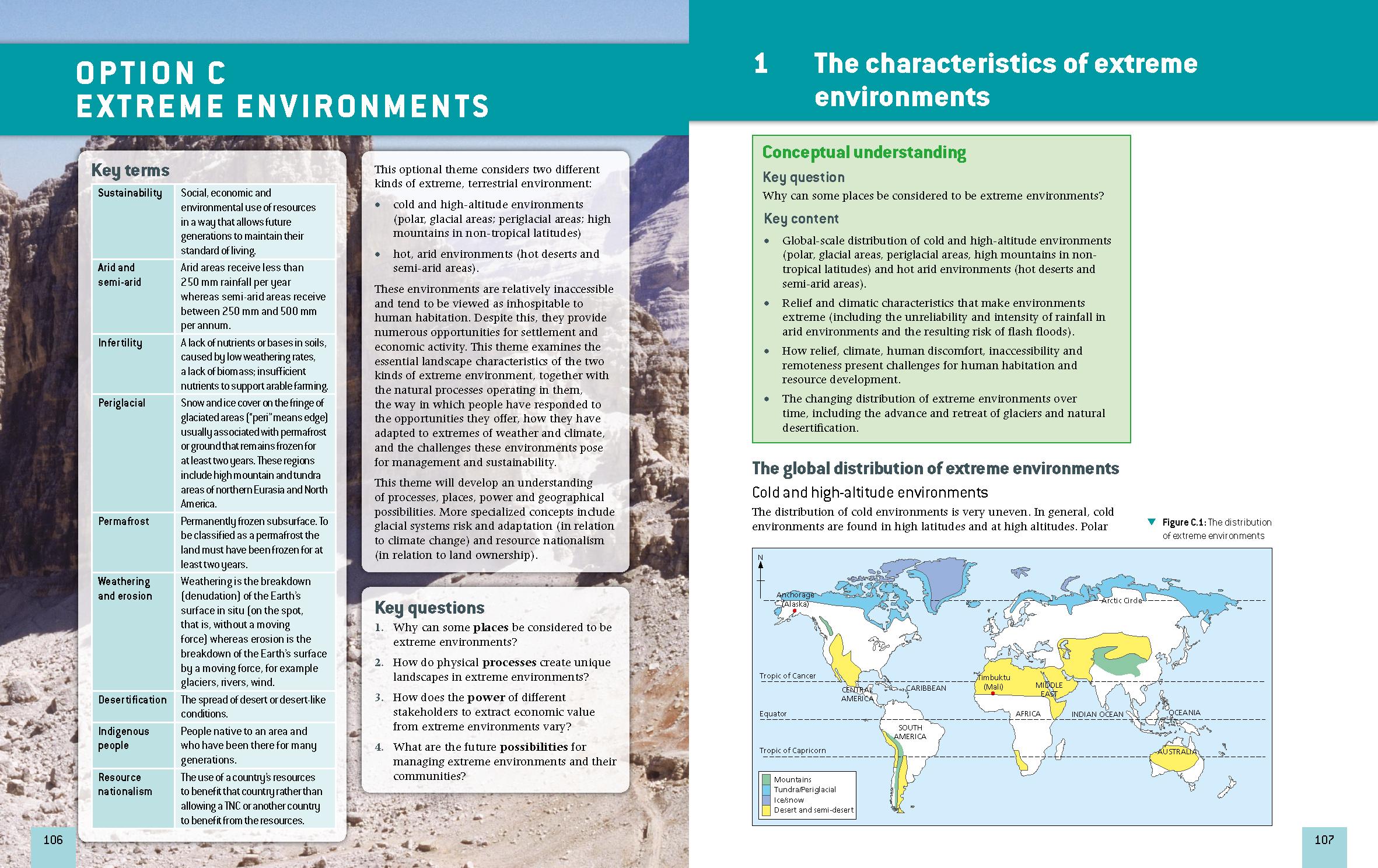
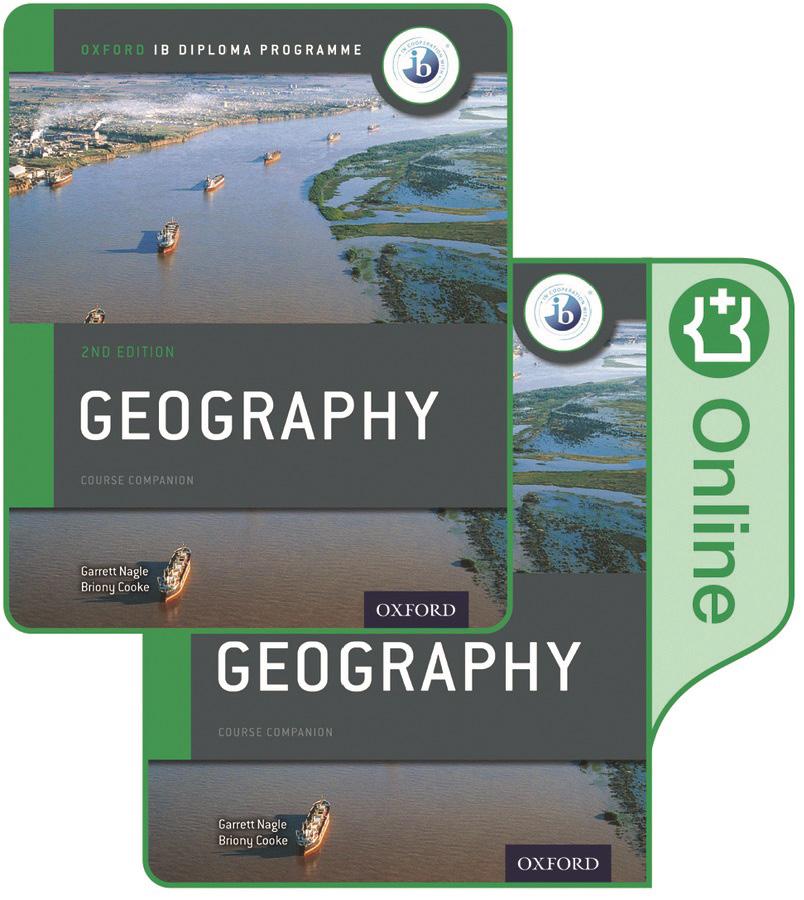
DP
Geography Course Book 978 019 839603 1 Enhanced Online Course Book 978 019 839604 8 Print and Enhanced Online Course Book Pack 978 019 839605 5 Study Guide 978 019 839607 9 IB Prepared (Print) 978 019 843422 1 IB Prepared (Online) 978 019 843425 2 IB Geography Course Book (2nd edition) 9
Kerboodle is a digital learning platform that works alongside your print textbooks to create a supportive learning environment. It is available for purchase by your school as an annual subscription. Subscription price is based on the number of students in your cohort. Contact your local Educational Consultant for more information.

Global Politics
Connect key concepts and topics
Supporting the 2024 subject guide, this concept-based Course Book developed in cooperation with the IB cements critical understanding of big picture issues and solutions.
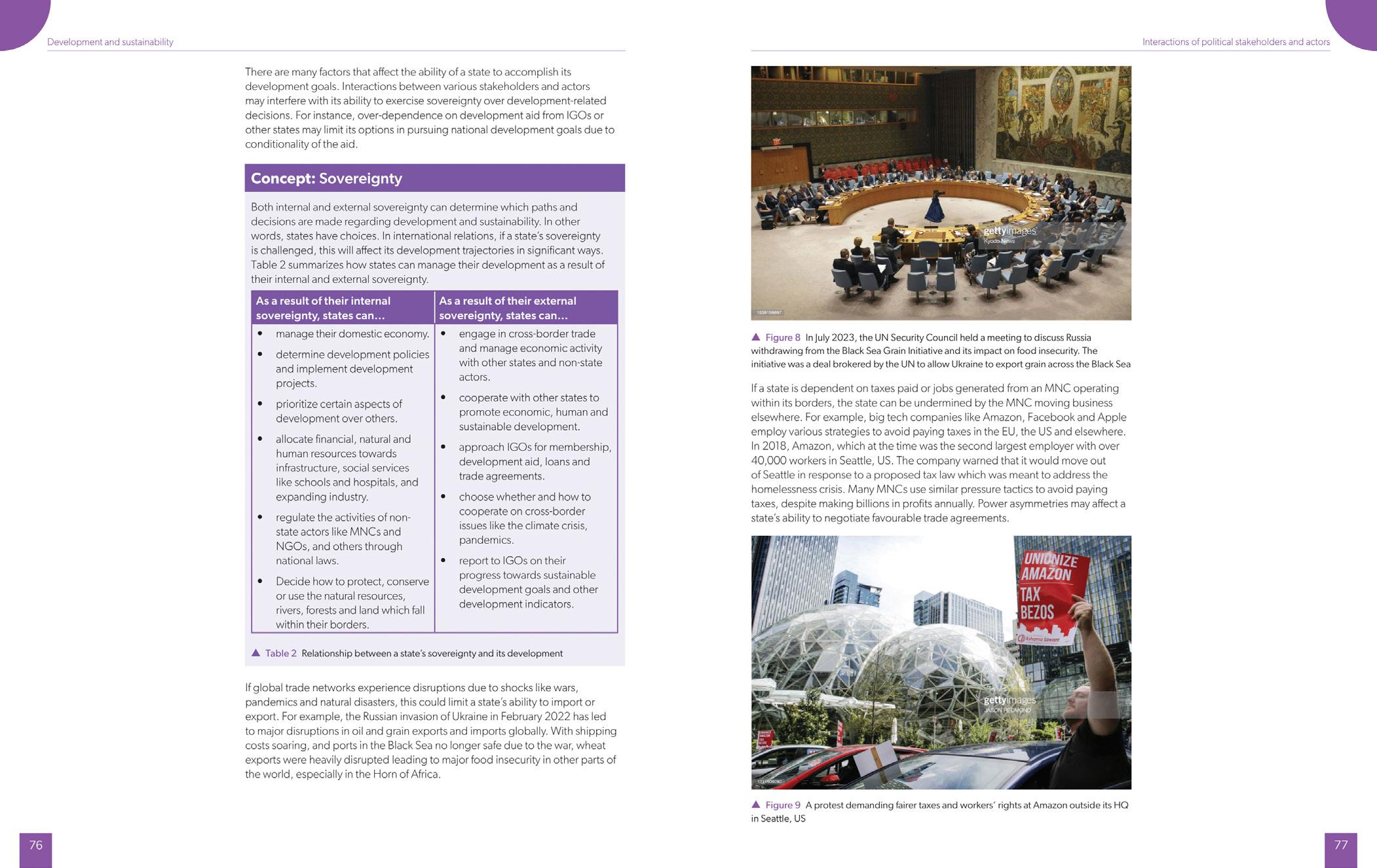
• Nurture outward-looking, reflective learners with student-friendly explanations of key concepts, international case studies, and TOK links
• Engage students with a regularly updated digital bank of relevant and topical case studies, for use both in and out of the classroom
• Prepare learners for assessment with exam-style practice questions and opportunities to hone ATL skills
Contact your local Educational Consultant for more information


Sign up for online evaluation of Oxford’s 2024 edition of the DP Global Politics Course Book
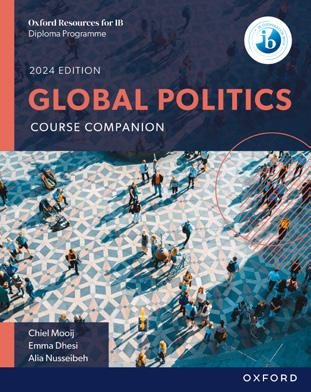
Concept boxes throughout show how key concepts in global politics can be linked and applied to different topics.

DP 10
Global Politics Course Book 978 138 203365
Kerboodle course (subscription)
NEW
7
Psychology
Build a rich and holistic understanding
Developed in cooperation with the IB, this comprehensively-updated, full-color Course Book fully reflects the latest syllabus.
• Prepare learners for the step up from pre-16 courses to DP via Psychology Course Preparation
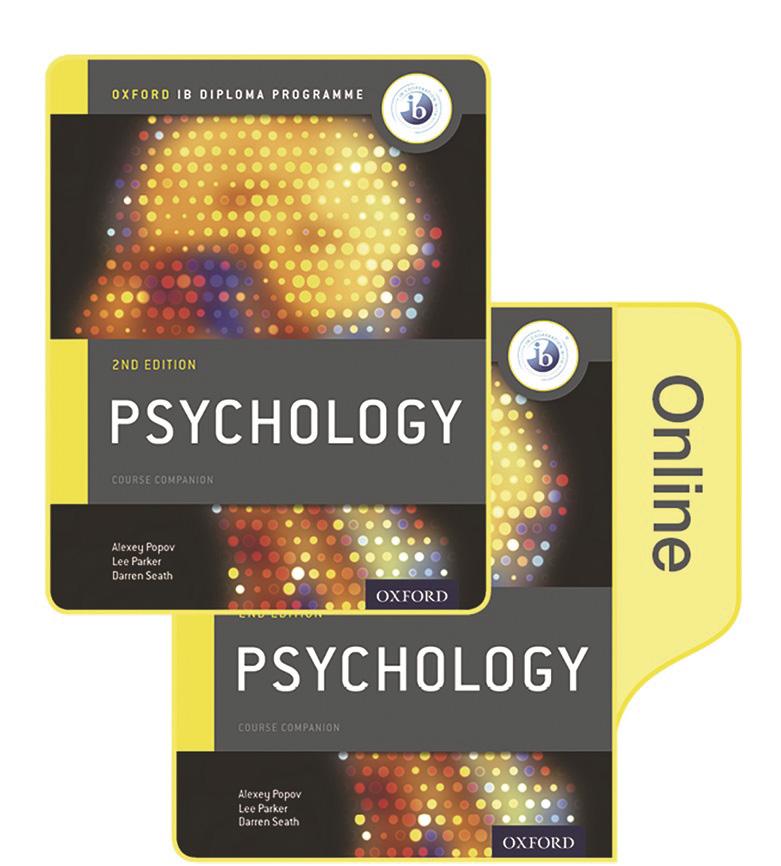
• Facilitate inquiry and critical thinking via the Course Book through in-depth, concept-based coverage of the most up-to-date theories and research
• Cement knowledge via the Study Guide’s concise summaries of course content and key definitions
• Provide strategic guidance on assessment, sample material and exam-style practice opportunities via IB Prepared: Psychology


Philosophy
Clarify and contextualize philosophical ideas
Developed in cooperation with the IB, and with updates to meet the 2023 curriculum changes, this accessible Course Book uses a skills-focused approach to build students’ confidence.
• Thoroughly cover the core theme of ‘being human’, which all students must complete as part of the prescribed course
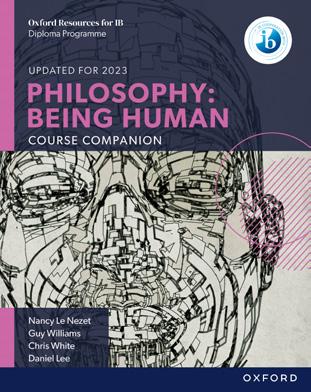
• Explore philosophical ideas in their context and in relation to contemporary situations, with clear referencing and definitions, visual aids and TOK links
• Build key skills via integrated activities, suggestions for further research and reflection, and assessment guidance
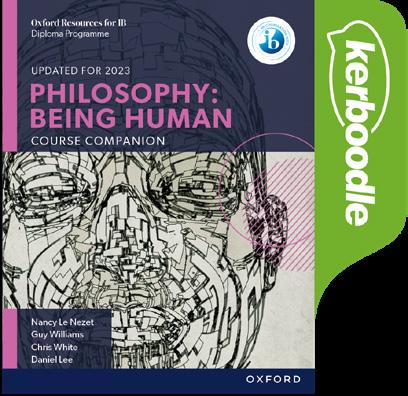
DP 11
Psychology Course Preparation 978 138 200494 7 Course Book 978 019 839811 0 Online Course Book 978 019 839813 4 Print and Online Pack 978 019 839816 5 Study Guide 978 019 839817 2 IB Prepared (Print) 978 019 843416 0 IB Prepared (Online) 978 019 843419 1
Philosophy: Being Human Course Book 978 019 839283 5 Online Course Book 978 019 836406 1 Print and Online Pack 978 019 836405 4 WITH UPDATES
Biology, Chemistry and Physics
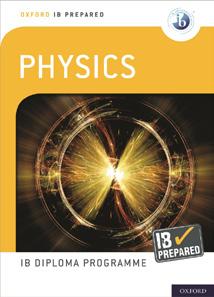
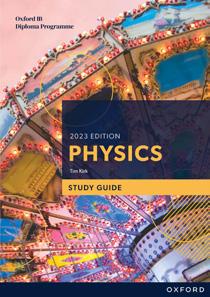
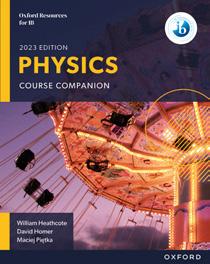
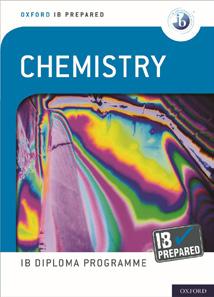
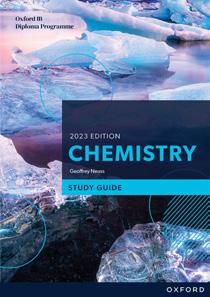
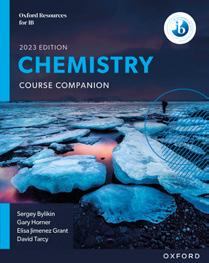
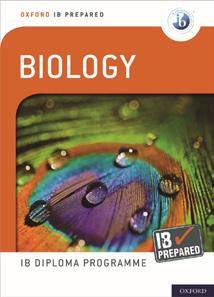
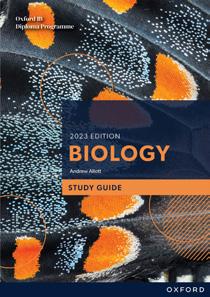
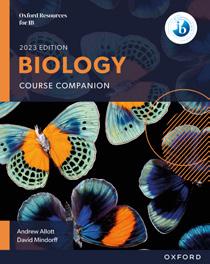
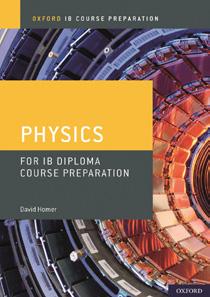
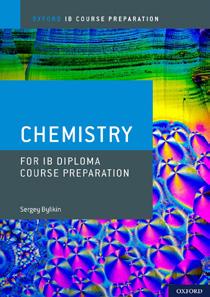
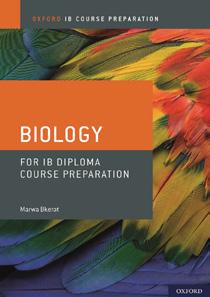
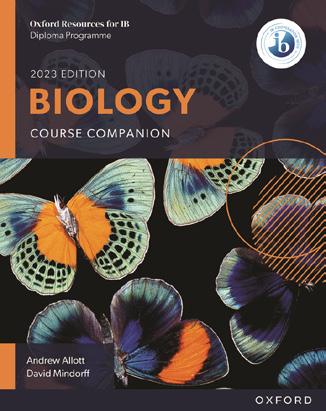
Experience the future of education technology
Developed in cooperation with the IB and designed for the next generation of students and teachers, Oxford’s DP Science offer brings together the IB curriculum and future-facing functionality, enabling success in DP and beyond. Use both print and digital components for the best blended teaching and learning experience.

Subscription prices start at £22/$30 per student
Kerboodle is a digital learning platform that works alongside your print textbooks to create a supportive learning environment. It is available for purchase by your school as an annual subscription. Access includes digital copies of the Course Book, plus a wealth of additional resources. Request a free trial today via our website!
Subscription price is based on the number of students in your cohort. Contact your local Educational Consultant for more information.
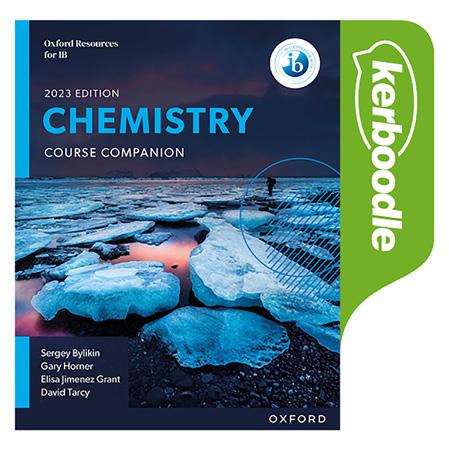
DP 12
IB Prepared Course Preparation Course Books Study Guides Biology Chemistry Physics NEW 978 138 201633 9 NEW 978 138 201646 9 NEW 978 138 201659 9
NEW 978 138 201643 8 NEW 978 138 201656 8 NEW 978 138 201669 8 Suitable for 2024 assessment Print 978 019 842363 8 Online 978 019 843443 6 Suitable for 2024 assessment Print 978 019 842367 6 Online 978 019 843446 7 Suitable for 2024 assessment Print 978 019 842371 3 Online 978 019 843449 8 978 019 842350 8 978 019 842355 3 978 019 842359 1 New editions for 2025 assessment onwards coming soon! NEW
In an Oxford Science Impact Study in 2019, 88% of respondents strongly agreed/agreed that

Students using Oxford’s IB Science Course Books develop a full scientific point of view and a deep understanding of the nature of science.
Use the Kerboodle courses alongside the Course Books to:
• Provide comprehensive coverage of all topics, structured according to the syllabus, and fully aligned to the 2023 subject guides for Biology, Chemistry and Physics

• Help students to develop conceptual understanding by easily integrating subject knowledge, the Nature of Science and Theory of Knowledge into your teaching
• Focus on both knowledge and skills with high-quality resources created by experienced IB authors, examiners, and teachers
• Support independent learning and progression with adaptive technology that provides a fully personalized journey so students can self-assign automarked assessments, get real-time results and are offered next steps
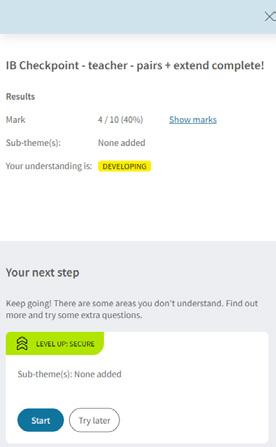
• Deepen understanding with intervention and extension support, and spaced repetition, where students are asked follow-up questions on completed topics at regular intervals to encourage knowledge retention
• Motivate students with a variety of engaging content including interactive activities, vocabulary exercises, and animations
• Deliver responsive teaching supported by enhanced reporting and rich data, to show progress at individual and class level
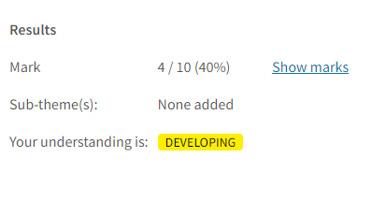
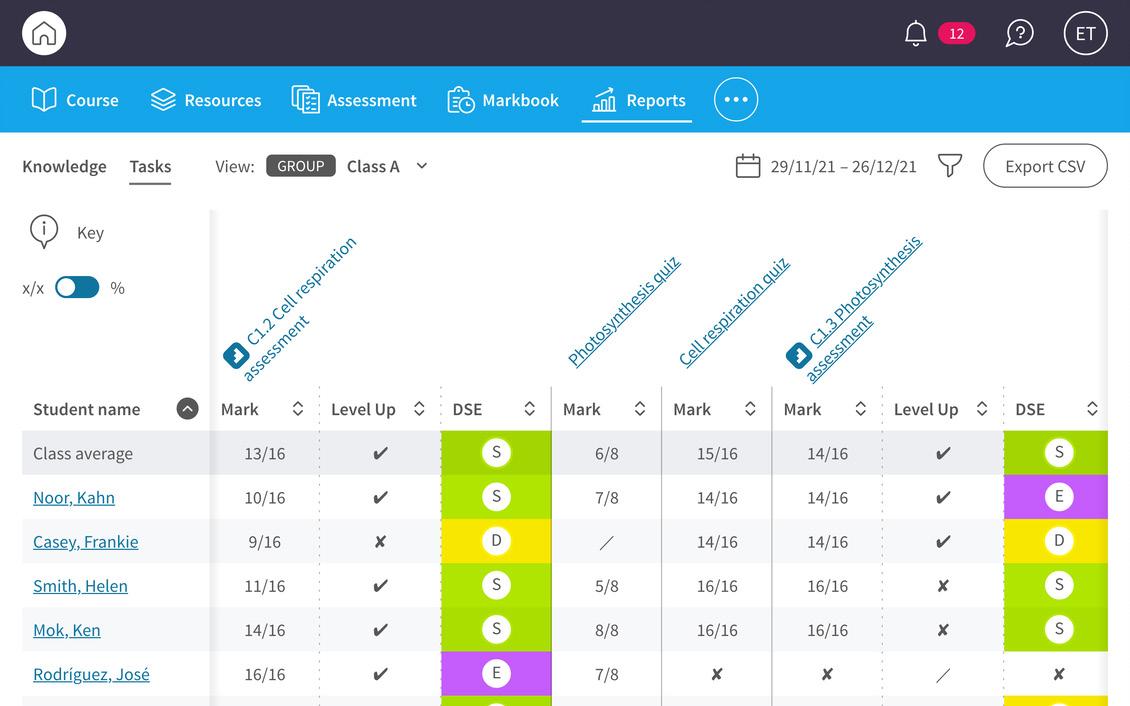
• Enable learning anywhere with mobile-optimized onscreen access to all resources and offline access to the digital Course Book via Kerboodle, plus print Course Book components
• Ease the transition to the new specification with professional development support to increase your confidence
DP 13 Practice questions 3.Two cyclists, Ada and Matt, start from the same point and ride in opposite directions along a straight road, each at constant speed. After one minute, they are 580m apart. Ada rides at speed of 20km h Determine the speed at which Matt rides. 4.The speed of light in a vacuum is 3.0 × 10 m. Sirius, the brightest star, is approximately 5.5 × 10 AU from Earth (1AU = 1.50 × 10 m). Calculate the distance to Sirius in light years (1 light year ly is the distance travelled by light in one year). A. Space, time and motion Topic A.1 Kinematics 13 12 Using symbols consistently Distances and displacements can be represented using many different symbols. Sometimes distance may be labelled as d When it is a height, then h may be used. In three dimensions, y may denote the displacements in each direction. Why is often used to represent distance or displacement in physics? The Latin for distance is spatium use the letter d since it may be confusing when writing derivatives such as use of for speed, usually for the speed of light; stands for celeritas Latin for speed. Speed and velocity There are scalar and vector measures of how quickly an object moves. The scalar quantity is speed which is defined as: speed = distance travelled on journey time taken for the journey or speed = change of distance per unit time. You will already be familiar with units of speed like metre per second (m and kilometres per hour (kmh but you can combine any distance unit with any time unit to give speed units. Velocity is the vector equivalent— is the speed in given direction. So to describe the velocity, you need the magnitude and the direction, as for displacement. For example, “4.2ms due north” or “55kmh at N 22.5 E”. The definition of velocity is change of displacement per unit time or the rate of change of an object’s position. An object moving at constant speed covers equal distances in equal times. A passenger train that travels 2400m in one minute has speed of 40ms In one hour, the train will travel (3600 × 40 =) 144 000 m. So 40 m s 144 km Using symbols rather than numbers, the magnitude of the velocity of an object (its speed) is the distance travelled divided by the time taken and vt Communication skills ATL Worked example 4 The astronomical unit (AU) is approximately equal to 1.50 × 10 m. Assuming that Earth moves around the Sun in circular orbit of a radius 1AU, estimate the orbital speed of Earth. Give the answer in kms Solutions The circumference of Earth’s orbit is 2 × 1.50 × 10 = 9.42 × 10 m. Earth travels this distance in one year. Orbital speed = = 2.99 × 10 = 29.9 km Graphing motion —Distance–time To calculate speeds and velocities, you need two variables: distance and time. Figure 4 showed a map of student’s journey to school. The student does not travel at the same speed throughout the journey as part of it is on foot, part by bus. A distance–time graph is a good way to display such data visually. The distance travelled by the student is plotted on the -axis of Figure 7, while the time since the beginning of the journey is plotted on the -axis. The gradient of the graph changes for the different parts of the journey: small for the walking sections of the journey, horizontal (zero gradient) for stationary at the bus stop, and steep for the bus journey. What will the graph for the journey home from school look like, assuming that the time for each segment of the journey is the same as in the morning? Information can easily be extracted from this graph. The gradient of the graph is the speed. Add the overall direction to this speed and you have the velocity too. For the first walk to the bus stop, the distance was 800 m and the time taken was 615s. The constant walking speed was therefore 800 615 which is 1.3ms To measure speed, you need to know the distance travelled (using “ruler”) and the time taken (using “clock”). The trick is to choose the best “ruler” and the best “clock” for the speed being measured. A 30 cm ruler and digital wristwatch are fine when biologist measures the speed of an earthworm. But, to measure the speed of 100m sprinter, a measured distance on the ground, stopwatch measuring to 0.1s and a human observer are barely good enough. Even then, the observer (at the finish) must be careful to watch the smoke from the starting pistol (at the start) and not wait to hear the sound of the gun. To measure the speed of a soccer ball after a penalty kick, the stopwatchplus-human method is no longer adequate. You need to use a video camera taking image frames at a known rate (the clock) and a scale, visible on the video, near the path of the ball (the ruler). Move up to measuring the speed of jet aircraft and the equipment needs to change again. Choosing the best equipment and method for the task in hand is all part of designing the experiments for an internal assessment. Measuring speed Measurement and experiment are essential tests of scientific knowledge. Galileo was one of the first to appreciate the use of a simple pendulum as a timing instrument. He conducted many early kinematic experiments. Before Galileo, the ability of physicists to study practical kinematics experiments was limited; they made deductions in other ways. Aristotle and other Greek thinkers used logical reasoning to construct persuasive arguments. A group of scholars in the 14th century started to use scientific progress. This approach Oxford Calculators. They were sometimes known as the Merton School due to their association with Merton College, Oxford. Their methods influenced many scholars around Europe at that time, and mathematical approaches are still an important way for physicists to test theories. Figure 6 Scholars at Merton College, Oxford, were among the first to apply mathematical methods to physics and philosophy. What are the tests of truth or knowledge in other disciplines, such as literature, history or the law? TOK Worked example 3 A train moving at a constant speed of 280 km h takes 2.3 s to pass a signal pole. Calculate the length of the train. Solutions The speed of the train needs to be converted to m Speed = 280 × 10 60 × 60 Length of the train = 77.8 × 2.3 = 180 m. The graph has the clock time for the journey translated into time (in seconds) since the start. 3500 3000 2500 2000 1500 1000 500 0 50010001500 time elapsed/s distance travelled/m walk to bus stop wait at bus stop walk to
Biología
Developed in cooperation with the IB, the Spanish translation of the Oxford DP Biology Course Book provides full print and digital support for the 2023 subject guide update.
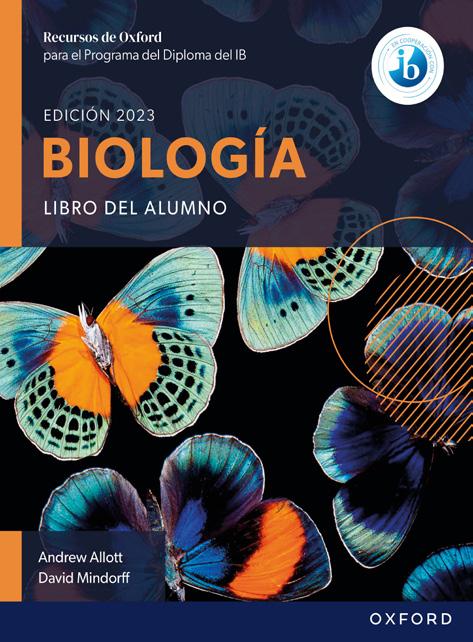
Sports, Exercise and Health Science
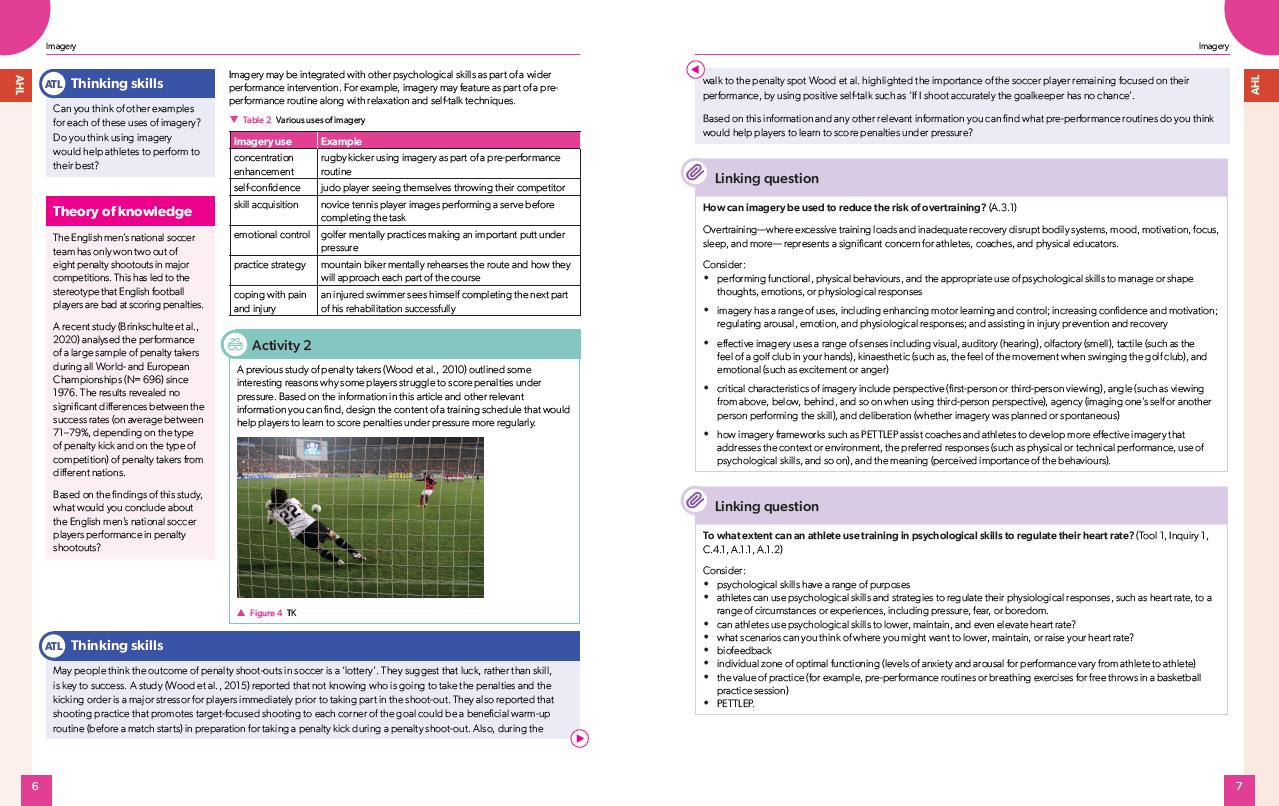
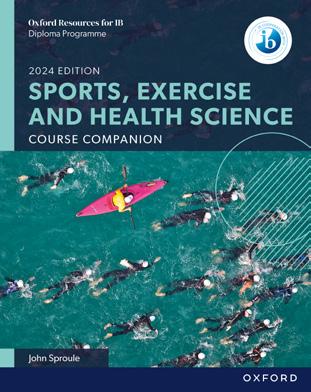
Support for SL and HL requirements
Developed in cooperation with the IB and matched to the first teaching 2024 subject guide, the comprehensive Course Book and Kerboodle course offer support for key concepts, theories and skills.
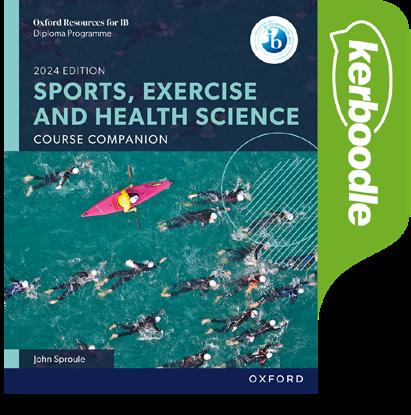

• Build interconnected knowledge of the subject through linking questions included for every topic
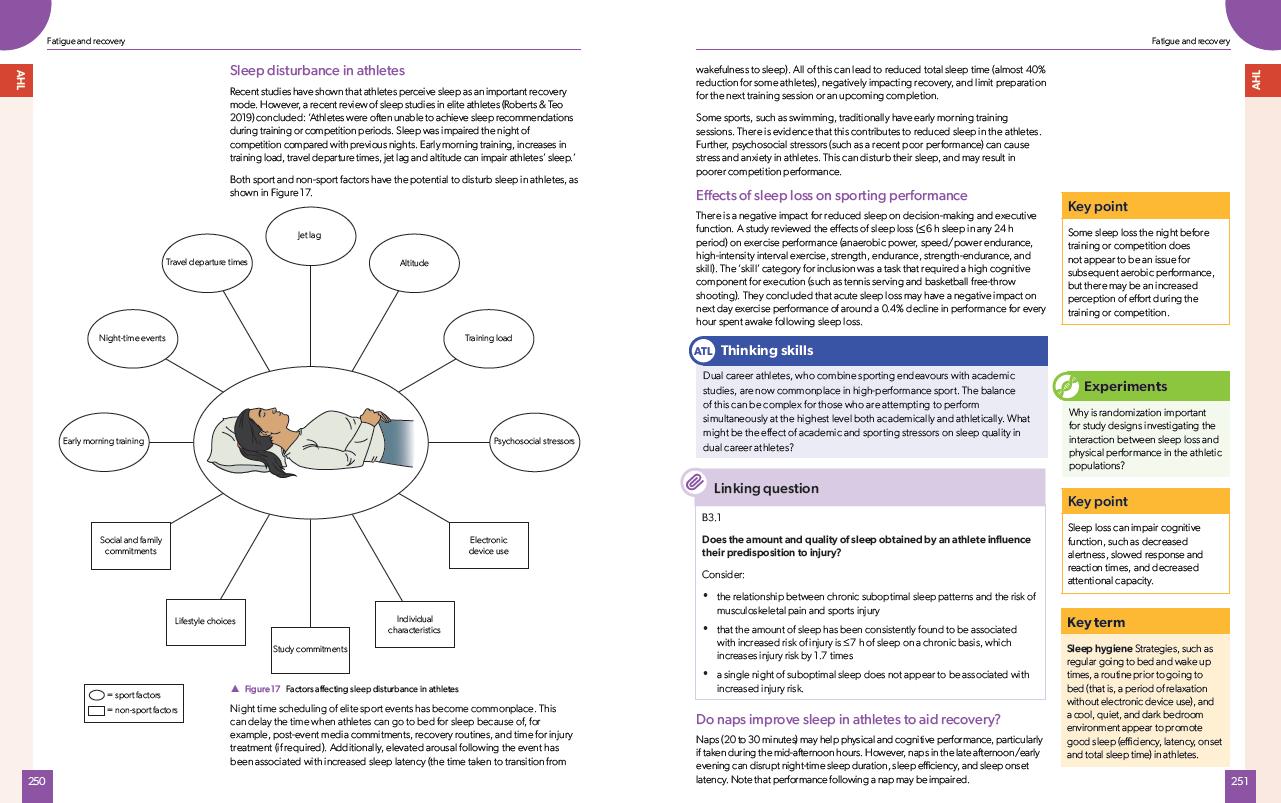
• Aid learner understanding with case studies, topic summaries, selfstudy, and data-based questions, based on the latest research
• Support students at SL and HL through clear indication of AHL content
• Encourage skills development with a dedicated ATL skills feature, as well as a dedicated sections for the tools and inquiry process
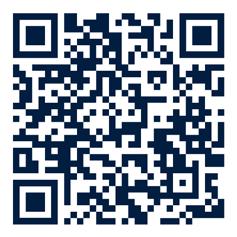
DP 14
Biología Libre del Alamno 978 138 204570 4 Kerboodle course (subscription) Contact your local Educational Consultant for more information Sports, Exercise and Health Science Course Book 978 138 204264 2 Kerboodle course (subscription) Contact your local Educational Consultant for more information Sign up for online evaluation of Oxford’s 2024 edition of the DP Sports, Exercise and Health Science Course Book NEW
Environmental Systems and Societies
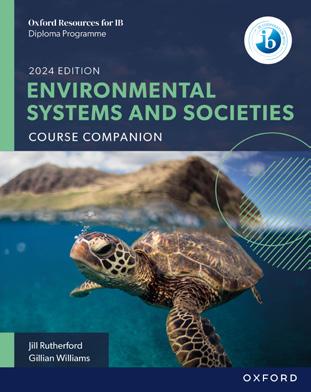
Support student understanding with new features for the 2024 edition
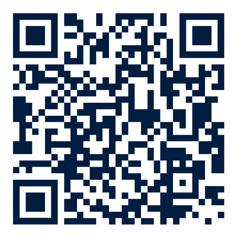
Developed in cooperation with the IB and matched to the first teaching 2024 subject guide, these inquiry-based resources motivate learners to build interconnected subject knowledge.
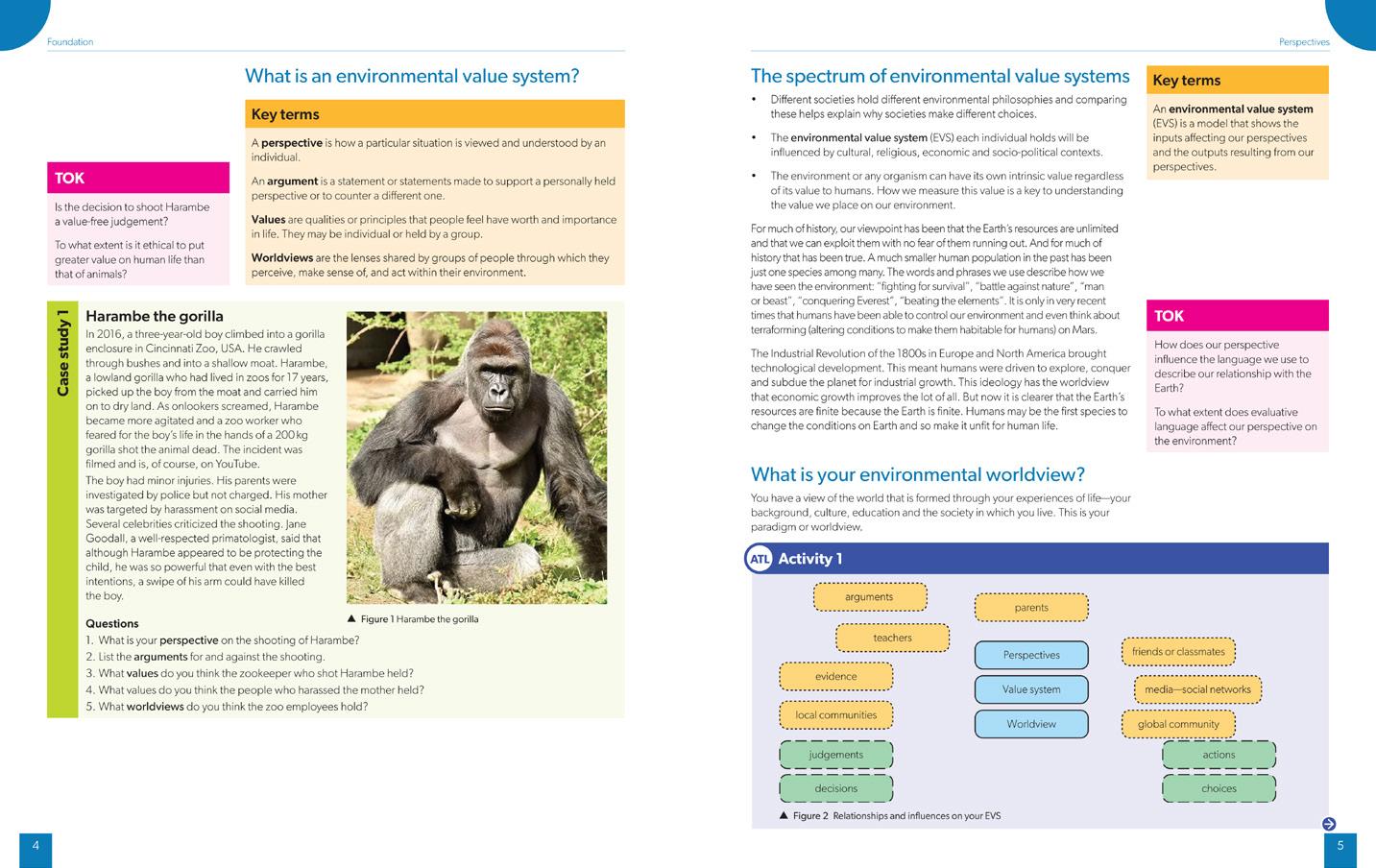

• Develop a holistic view of the subject via a wealth of contemporary case studies
• Truly engage learners with subject-specific concepts - the inquiry-based approach drives active exploration, investigation and critical thought
• Support students at HL with a dedicated chapter exploring the HL lenses in detail
• Cement the three key concepts in students’ minds with a chapter on the foundations of the course
• Build student confidence with end of topic questions drawn from past exam papers
Sign up for online evaluation of Oxford’s 2024 edition of the DP Environmental Systems and Societies Course Book
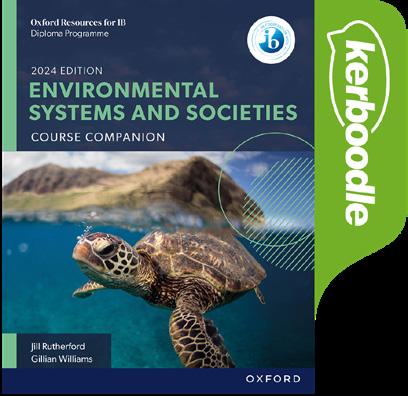
Kerboodle is a digital learning platform that works alongside your print textbooks to create a supportive learning environment. It is available for purchase by your school as an annual subscription. Access includes digital copies of the Course Book, plus a wealth of extra resources for practice and assessment support. Request a free trial today via our website!
Subscription price is based on the number of students in your cohort. Contact your local Educational Consultant for more information.
DP 15 Environmental Systems and Societies Course Book 978 138 204401 1 Kerboodle course (subscription) Contact your local Educational Consultant for more information IB Prepared (Print) 978 019 843754 3 For 2024 assessments IB Prepared (Online) 978 019 843757 4 For 2024 assessments
NEW
Mathematics
Concept-based support for the latest syllabus
Each Print and Enhanced Online Course Book Pack has been developed in cooperation with the IB to provide the most comprehensive support for the latest DP Mathematics syllabus.

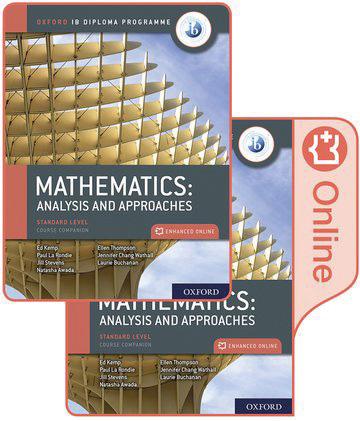
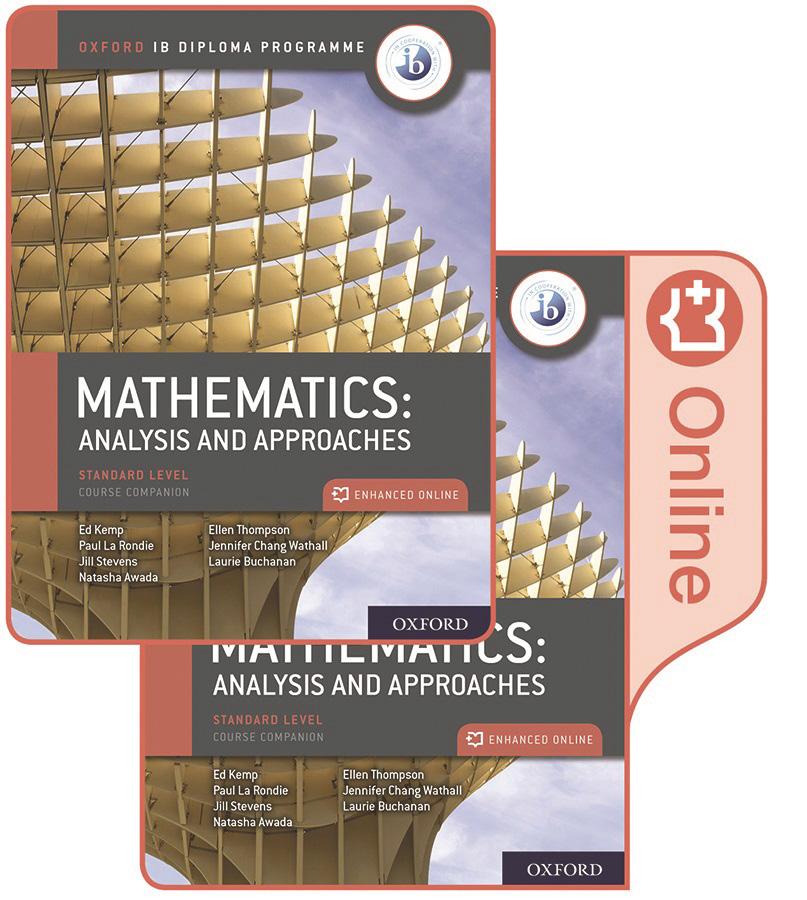
• Prepare learners for the step up from pre-16 courses to DP via Mathematics Course Preparation
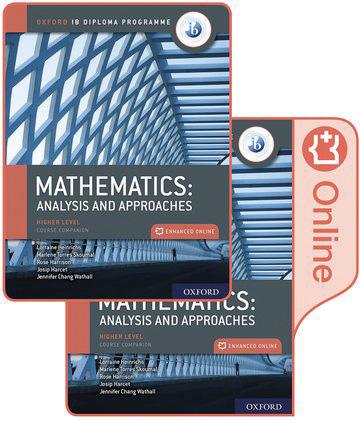
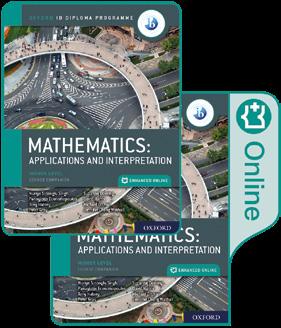
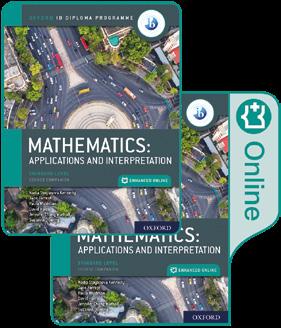
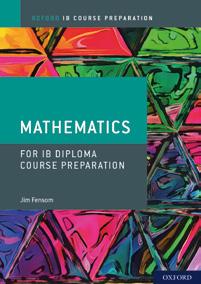
• Assimilate the approach of the latest curriculum, using concept-based resources that are structured according to the courses
• Provide in-depth coverage of all topics via clear explanations, worked solutions and activities, plus assessment preparation support
• Drive achievement with digital features embedded in each Enhanced Online Course Book, plus practice opportunities via Oxford MyiMaths
• Provide strategic guidance on assessment, sample material and exam-style practice opportunities via new IB Prepared resources
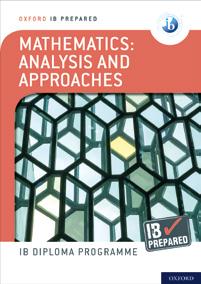
Print 978 138 200492 3
Suitable preparation for students preparing to study IB Diploma Mathematics AA or AI Mathematics:

The applications and interpretation HL Course Book is an invaluable resource for teachers that are new to the course. The book closely follows the course philosophy, contains excellent investigations, and completely covers the syllabus content. This makes for easy planning throughout the course and allows me to fully focus on the delivery of the content.
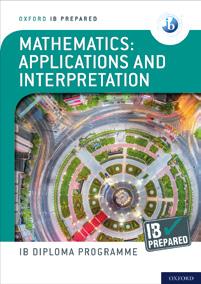 Markus Mattila, DP Maths teacher, Thailand
Markus Mattila, DP Maths teacher, Thailand
DP 16
applications and interpretation Print and Enhanced Online Course Book Pack 978 019 842710 0 Enhanced Online Course Book 978 019 842712 4 Print and Enhanced Online Course Book Pack 978 019 842698 1 Enhanced Online Course Book 978 019 842700 1 Print and Enhanced Online Course Book Pack 978 019 842716 2 Enhanced Online Course Book 978 019 842718 6 Print and Enhanced Online Course Book Pack 978 019 842704 9 Enhanced Online Course Book 978 019 842706 3 Print 978 138 200722 1 Online 978 138 200725 2 Print 978 138 200728 3 Online 978 138 200731 3 Standard Level Course Books Higher Level Course Books IB Prepared Course Preparation
analysis and approaches Mathematics:
IB Mathematics: applications and interpretation HL, Print and Enhanced Online Course Book

Matemáticas: análisis y enfoques
Matemáticas IB: Aplicaciones e Interpretación
Developed in cooperation with the IB, these Spanish translations of the Oxford DP Mathematics: analysis and approaches and Mathematics: applications and interpretation provide full print and digital support for the 2019 Standard Level curriculum.
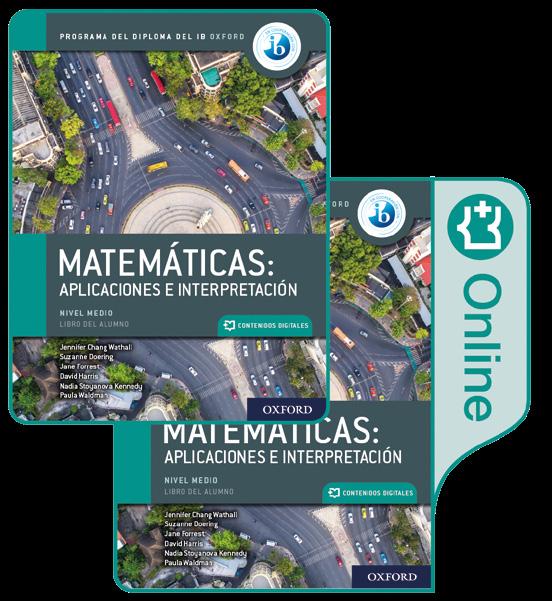

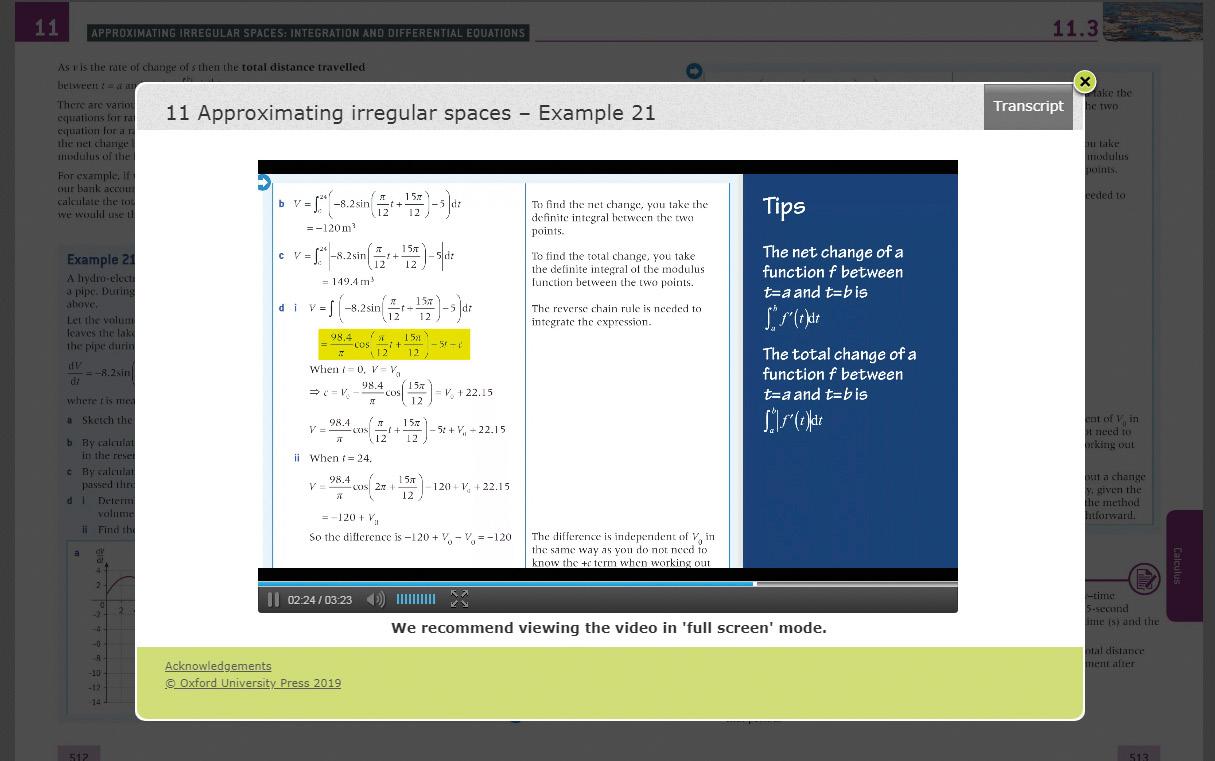
Matemáticas: análisis y enfoques, nivel medio, paquete de libro impreso y digital
978 138 203245 2
Matemáticas: análisis y enfoques, nivel medio, libro digital ampliado
978 138 203246 9
Matemáticas IB: Aplicaciones e Interpretación, nivel medio, paquete de libro impreso y digital
978 138 203251 3
Matemáticas IB: Aplicaciones e Interpretación, nivel medio, libro digital ampliado
978 138 203252 0

DP 17
Access digital content embedded in each Enhanced Online Course Book
Sign up for your FREE trial at www.myimaths.com
Visual Arts
Build assessment confidence
Packed full of relevant examples, this assessment-focused Course Book is the only Visual Arts resource developed in cooperation with the IB.
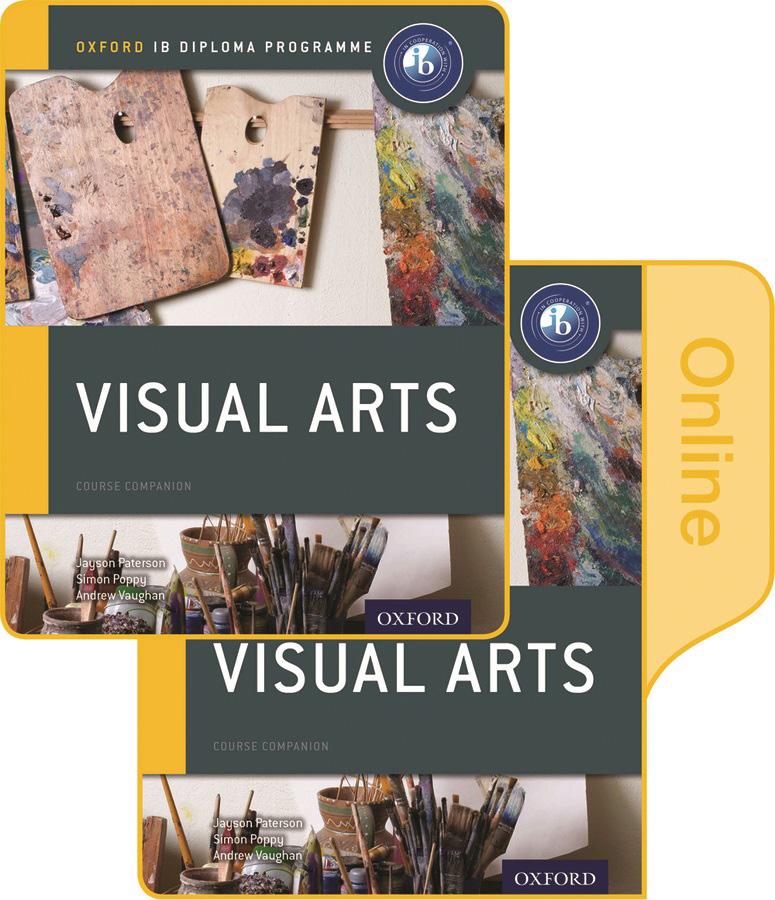
• Thoroughly understand all assessment components and requirements, with breakdowns of exam criteria and strategic advice
• Build students’ confidence via contextualized artwork examples, highlighted key terms and tips
• Fully embed the IB approach to learning with TOK and ATL links throughout the text
Each co-published resource is:
• Aligned fully with the current IB curriculum
• Reviewed by IB subject experts to ensure it is a comprehensive and accurate match to IB specifications, presents accurate assessment support and offers highquality guidance to support teaching and learning
• Approved with the in-cooperation logo for use in IB World Schools
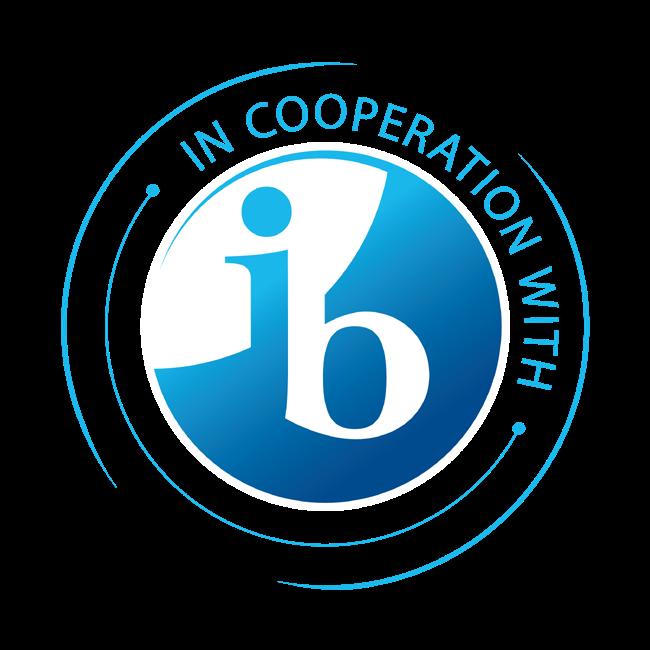
By choosing Oxford’s co-published IB titles with their blended learning support, you can be assured you have the tools to deliver the IB curriculum to the highest standard, this year and every year.

DP 18
Visual Arts Course Book 978 019 837791 7 Online Course Book 978 019 837793 1 Print and Online Pack 978 019 837794 8
We've been publishing in cooperation with the IB for over 15 years!
Take learning online with Kerboodle
What is Kerboodle?
Kerboodle is a digital learning platform that works alongside your print textbooks to create a supportive learning environment. Available for UK and international curricula, Kerboodle helps you save time and reinforces student learning with a range of supportive resources.
Use Kerboodle to:
Support independent learning with easy access to digital textbooks
Enhance student engagement with activities and auto-marked quizzes
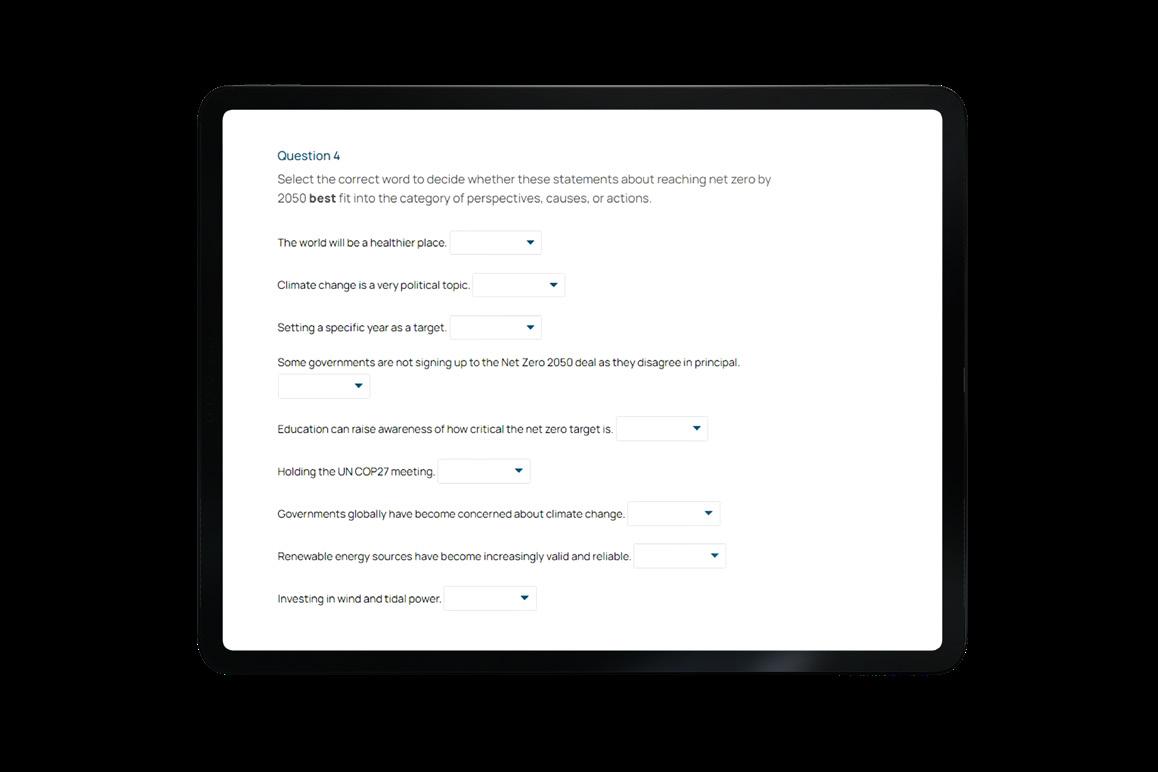
Boost performance and exam confidence with assessment materials
Deliver responsive teaching underpinned by in-depth reports
Save time with tools to help you plan, teach, and monitor student progress
Improve the classroom experience by highlighting specific content
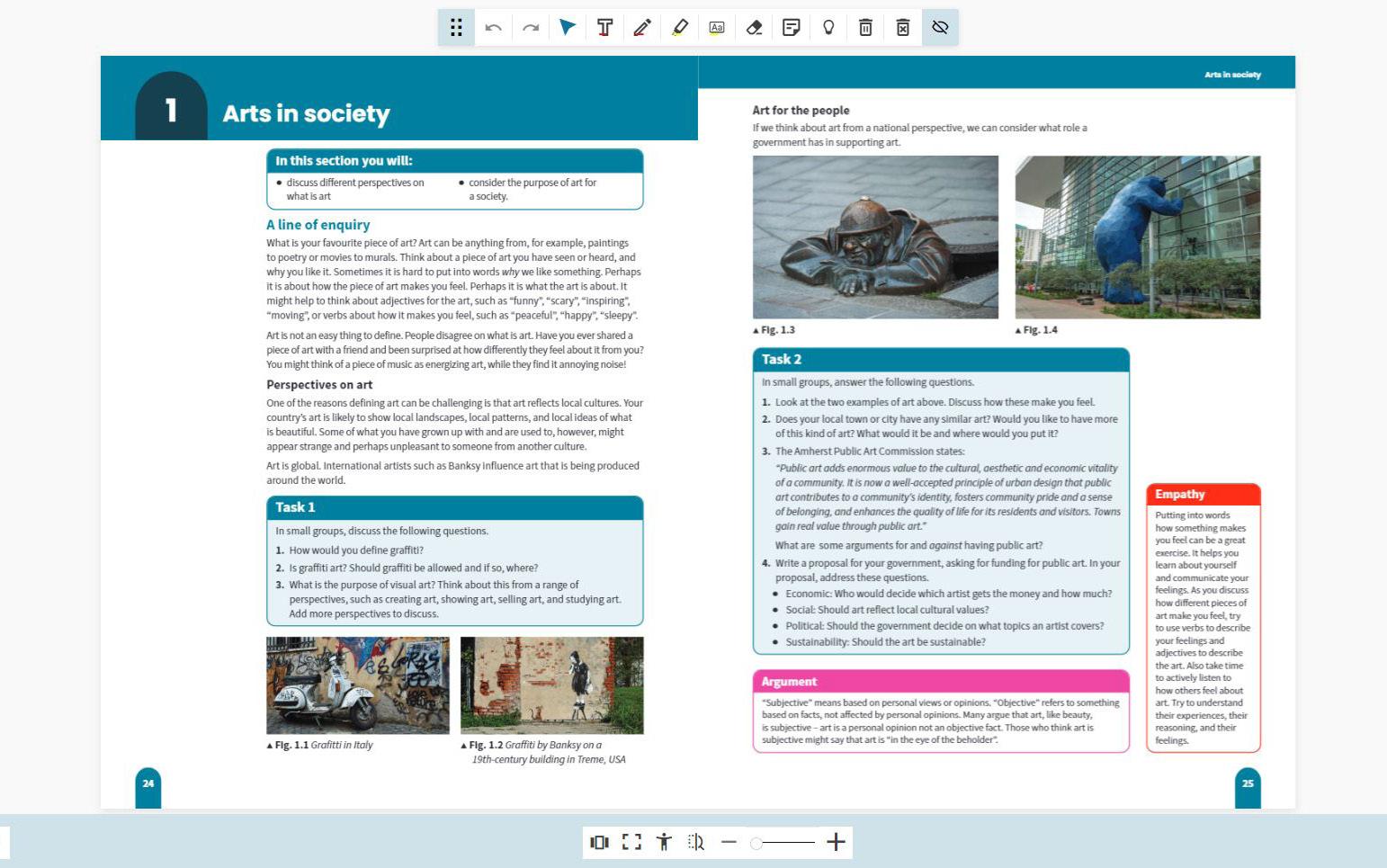
Find out more and sign up for a free trial!
Formoreinformation
ContactyourlocalEducationalConsultant:www.oup.com.au/contact
For the best teaching and learning experience use Kerboodle with your print resources!
The only assessment and exam preparation resource published in cooperation with the IB


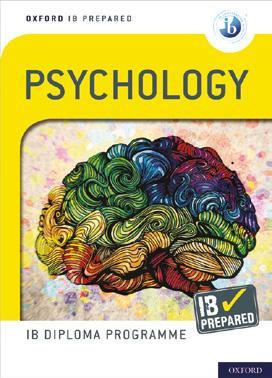
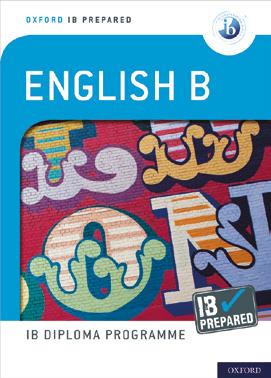
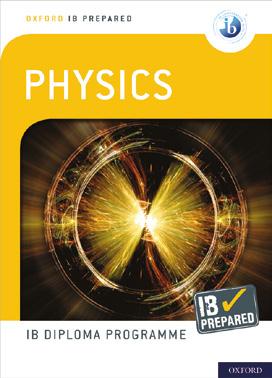
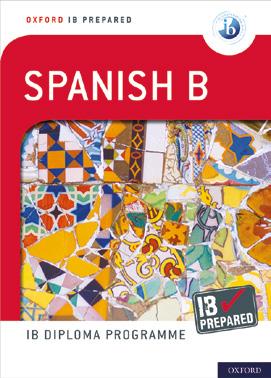
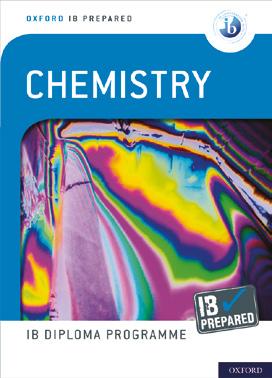
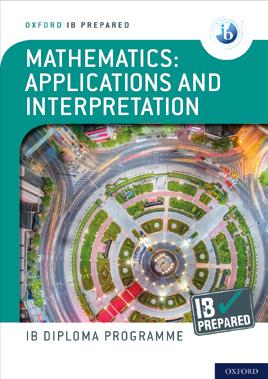
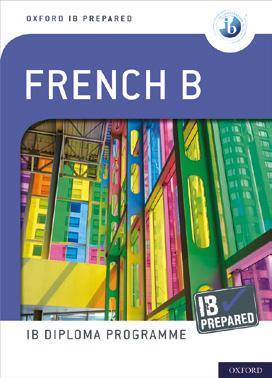
Offering an unparalleled level of assessment support, the IB Prepared series has been developed in cooperation with the IB to provide the most up-todate, authentic, and authoritative guidance on DP assessment.
• Student-friendly course content summaries – ideal for filling in any gaps in students’ learning, as well as effectively preparing them for assessment
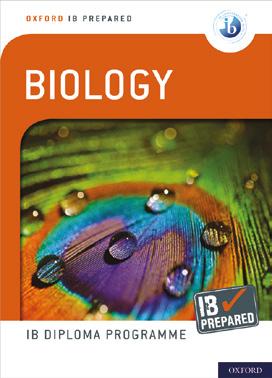
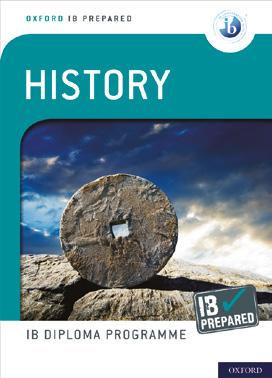
• Consolidate essential knowledge and facilitate more effective exam preparation via concise summaries of course content and revision materials
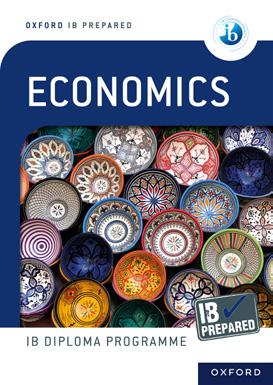
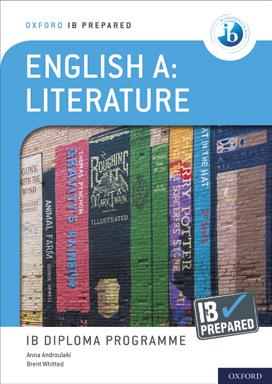
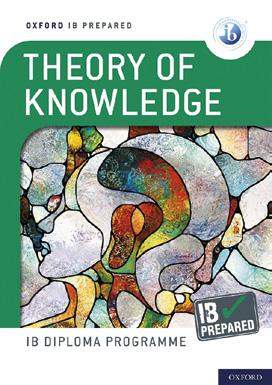
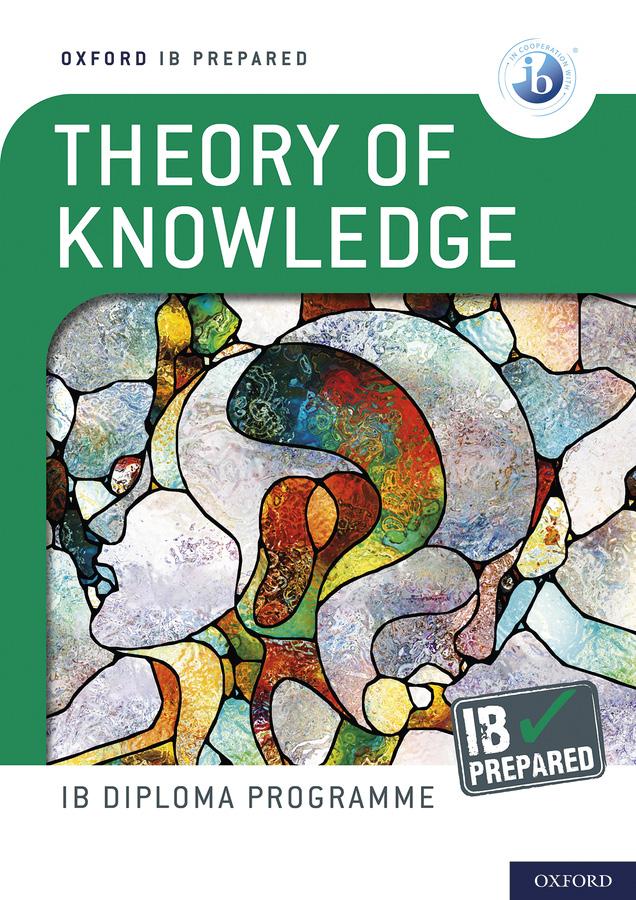
• Ensure that learners understand assessment requirements with clear explanations of each component, past paper material and model answers
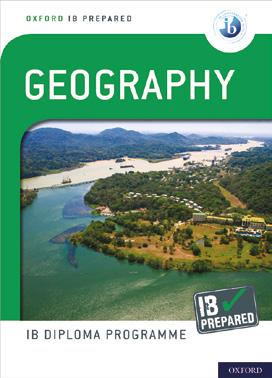
• Maximise assessment potential with strategic tips, highlighted common errors and annotated sample answers
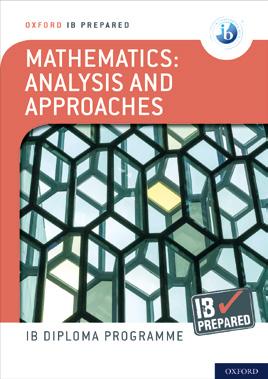
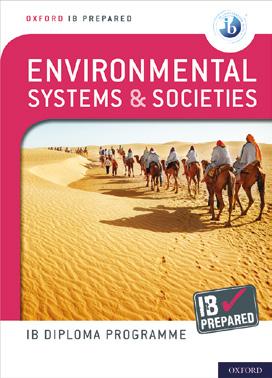
• Build students’ confidence using exam-style questions and practice papers, with accompanying answers and worked solutions
• Available in print and online format
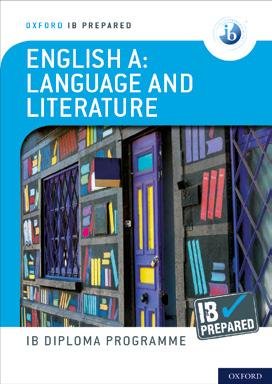
DP 20 IB Prepared
978 138 201671 1 978 138 203389 3 978 019 842474 1 978 019 842367 6 978 019 842363 8 978 138 200716 0 978 138 204304 5 978 019 842371 3 978 138 200710 8 978 019 843428 3 978 019 843754 3 978 019 842477 2 978 019 843422 1 978 138 200728 3 978 019 842471 0 978 019 843416 0 978 138 200722 1
Some of the key features of IB Prepared include:
• Guidance on utilizing the resource
• Annotated sample student answers
• Audio clips for Language B resources
• Practice exam papers
• Assessment tips
• Internal Assessment chapter
The introduction in each IB Prepared resource provides and in depth explanation on how to utilise the book, the subject-specific command terms, and an overview of the assessment objectives.
LEARNER PORTFOLIO 3
Topic summaries focus on the main points of the subunits. They provide the basic definitions and cover all the key contents on which students may be examined.
There are an abundance of assessment questions and sample student answers with advice on how to best approach the questions to ensure learners understand assessment requirements and avoid common errors.

Annotated student answers provide students with practice opportunities and useful feedback.
Spreads shown from various books in the IB Prepared series
Correct answers in the sample student response are highlighted in green and incorrect or incomplete answers are highlighted in red. Positive or negative feedback on the student’s response is given in the green and red pull out boxes. These examiners’ comments will help students understand how marks may be scored or missed.
DP 21
The primary aim of this is book is to help you and your teacher navigate your way through the two final assessment tasks for TOK, with an emphasis on the skills and qualities needed. However, this book also recognizes that the importance of TOK goes beyond a final set of grades and that the skills and qualities required will continue to be useful a long way beyond your study of the IB Diploma Programme. Ultimately, it will help to build skills and qualities in you that will be useful for many years to come. Table 1.1 Summary of TOK assessment pieces Internal or external assessment MarkingFocusPercentage TOK exhibitionInternal assessment (IA) The exhibition is marked by teachers and moderated by the IB Themes 33% TOK essayExternal The TOK essay is marked by examiners employed by the IB Areas of knowledge 67% TOK is about exploring knowledge. However, to provide a more accessible structure for you the major focus is on two fundamental structures of TOK, called the areas of knowledge and the themes. Each of these is focused on a specific assessment task. To look at these in depth, the knowledge framework is used, which is made up of knowledge questions. To ensure that there is coherence in the course there are TOK concepts which you will recognize as ideas that run throughout the course. These parts will now be introduced in more depth. THE AIMS OF THIS BOOK THE BASICS OF TOK This book is written primarily with you as students in mind, but it should also be of use to teachers who are also learners. The aim is that it can help you as a way of navigating the course and then explicitly support the final assessments. There are three main sections in this book: • an overview of the areas of knowledge (AOKs) and the themes • the writing and assessment of the essay the writing and assessment of the exhibition. Table 1.1 gives an overview of the two assessment pieces associated with the course. 6 1 TOK: AN OVERVIEW
Accordingly, the choice of acculturation strategy pre-determines the outcome of globalization. If assimilation dominates, globalization will lead to a homogeneous global culture, and local cultural values will be gradually lost. If integration dominates, the outcome of globalization will be a well-connected society that at the same time preserves the cultural uniqueness of its constituent group (glocalization). If separation dominates, non-dominant groups will start reactionary movements and reject the influences of the global culture (anti-globalist movements). Finally, if marginalization dominates, local cultures will be destroyed but no culture will be created to replace them, effectively resulting in a cultureless society. To figure out which of the four outcomes is most likely, and what factors contribute to the selection of acculturation strategies, is a research task. What makes it difficult is the complex nature of social development: if we observe a certain culture over a period of time and observe changes, there are multiple explanations that may be consistent with these changes, the influence of globalization being only one of such possible explanations. Researchers have to make certain inferences based on the explanations that seem most likely in the given context. An example of such research is Adams (2003): a longitudinal correlational study that looked at the convergence of cultural values between Canada and the USA. The rationale behind this study is that the USA is the dominant culture and Canada is the non-dominant one. Culturally the USA exerts a huge influence on Canada. For example, most of the films shown in Canada are American films. With the course of time, as economic and other relations between the two countries become stronger, such influences grow. If the predominant acculturation strategy used by Canadians is assimilation, one may expect the values of the average Canadian to become similar to the values of the average American over time. Researchers used a survey consisting of 86 value statements, administered to representative samples in both countries. The total number of participants exceeded 14,000. The surveys were administered at three points of time: in 1992, 1996 and 2000. Results of the study went contrary to predictions (based on the assumption that assimilation would be the predominant acculturation strategy). The cultural value profiles of the two ▲ Berry’s theoretical model is made relevant to the concept of globalization. Some critical thinking is demonstrated through the application of Berry’s model of acculturation strategies to globalization. ▲ A relevant research study is considered and its link to the theoretical model is clearly explained. Some critical thinking is shown through explaining the rationale behind the study and the leap from empirical findings to theoretical conclusions. thinking is presented here through reflecting on the difficulties of globalization research, but this could be further developed. 82 4 SOCIOCUlTURAl ppROACH TO bEHA IOUR This response could have achieved 17/22 marks. Focus on the question: 2/2. The answer clearly explains the problem/ issue raised in the question. Knowledge and understanding: 5/6. The response demonstrates relevant knowledge and understanding. The theory and research included in the response are carefully linked to the key concept (globalization) as well as the idea of the interaction between local and global influences. Psychological terminology is used appropriately. However, the response could be more detailed and use more supporting research. Use of research to support answer: 5/6. Relevant psychological research is used in support of the response and is thoroughly explained. Selected research is relevant to the central argument of the essay, but further research could be used to develop the argument more. Psychological research is well presented; research studies are clearly Critical thinking: 3/6. The response contains critical thinking but lacks development. Evaluation or discussion of most relevant areas is attempted but is not well developed. The focus in the essay is on “explanation” rather than “discussion”. Clarity and organization: 2/2. The answer demonstrates organization and clarity throughout. countries (based on the 86 value statements) did not become more similar over time. In fact, some of the values became more different. For example, one of the statements on the survey was, “The father of the family must be master of his own house.” In 1992, this statement was endorsed by 26% of Canadians and 42% of Americans. This changed by 2000: the statement was endorsed by 18% of Canadians and 49% of Americans. So it looks like the initially existing differences became more pronounced, as if the two cultures were emphasizing their uniqueness. Of course the study should be considered with an element of skepticism. It was correlational, so cause and effect cannot be reliably established. Although the number of participants was quite large, researchers wanted to generalize to whole nations, and for that even 14,000 participants may not be enough. The time span of the study was not large enough to capture longterm changes in cultural values. However, the study does support Berry’s model of globalization (and acculturation) in that assimilation of values is not the only possible strategy and not the only possible outcome of globalization. Local influences play a major role as well, sometimes creating the situation where local cultural values are actually strengthened and reinforced in the process of globalization. The study is linked back to the problem/issue raised in the question. ▼ Evaluation of research could be further developed. 83 Aims of the chapter This chapter will: help you understand the roles and functions of the learner portfolio in this course and beyond offer you insight into how to develop the skills necessary for success in the assessments in your learner portfolio invite you to practise and apply these skills in your own learner portfolio.
How your learner portfolio can help you succeed in this course and in the assessment The learner portfolio is the backbone of the Literature A course. It serves as a running transcript of your thinking and writing process on all levels throughout the course: holistic (that is, considered as a whole, rather than as separate parts), mechanical (or relatively automatic), conceptual, critical, and creative. Whatever form your portfolio may take (digital/shared Google doc, hard copy, or a combination), it is a means of tracking your progress and providing ready evidence of effective learning. Your portfolio also provides an efficient way for you and your teacher to spot areas of difficulty and gives you resources to: • identify and improve your thinking, writing, and varied notetaking skills based on your current project • identify and develop your areas of interest (such as global issues that matter to you personally) • help you synthesize your ideas and gradually apply them to portfolio work that is specifically aimed at the four course assessments. However, the most important benefit of a purposeful and strategic approach to the learner portfolio is its service as a continuous link among the four principles around which the course is planned: • variety integration autonomy • accountability. The headings for each of the assessment criteria are: • Knowledge, understanding, and interpretation (Criterion A) • Analysis and evaluation (Criterion B) Focus and organization (Criterion C) • Language (Criterion D). 14
The aims are clearly outlined at the beginning of each chapter and include an overview of what students should know and be able to do.
Ahora vas a escuchar y leer la parte del discurso relevante para completar estos espacios en blanco y, a continuación, analizaremos la respuesta del alumno. Director del colegio: “En la asamblea de este lunes 20 de mayo, tenemos con nosotros a Martín Vélez, ex alumno de este colegio, que nos hablará desde su experiencia, de las ventajas y desventajas de un año sabático en el extranjero después de terminar el colegio. Muchas gracias por aceptar nuestra invitación, Martín, y es un placer tenerte hoy con nosotros. Seguramente será muy útil para todos los alumnos que están en el último año de cara su futuro y que son los que están presentes hoy… Martín: Buenos días, señor director, profesores, alumnos y todos los que se encuentran hoy en esta asamblea que durará 30 minutos. Primero, me gustaría comenzar dando las gracias al director, el señor Quevedo, por invitarme hoy. Estoy muy contento de volver a mi colegio y poder contarles mi propia experiencia sobre lo que supuso mi año sabático.”
RESPUESTA DEL ALUMNO Vas a escuchar un discurso sobre las ventajas y desventajas de un año sabático.
Completa los espacios en blanco. Usa un máximo de tres palabras por espacio.
Asamblea: Mi año sabático
Fecha: [ –1– ] Orador invitado: Martín Vélez, un [ –2– ] del colegio. Tema: –3– y desventajas de un año sabático. Destinada a: los alumnos del –4–Duración de la asamblea: –5–90
Throughout the IB Prepared Languages B resources, you will find listening icons which indicate that audio clips are available on our free support website: www.oxfordsecondary.com/ibprepared-support These icons provide students with an opportunity to practice their receptive skills in preparation for paper 2 of the external assessment and for the oral assessment in the Internal Assessment.
PRACTICE EXAM PAPERS
A whole chapter in each resource is devoted to the Internal Assessment.


Assessment tips give advice to help students optimise their exam techniques, warning against common errors and showing how to approach particular questions and command terms.



DP 22 Practising standard level and higher level listening question types A Identifying true statements How do I identify true statements? There will be between three and five true statements in a single assessment. There will be an equal number of distractors. All statements are based on the audio text. Sample audio text A (identifying true statements) Listen to audio sample 1. Identify the 3 true statements. Write your answers on paper. Compare your answers to the sample student answers. Then, look at the examiner’s comments below and answer the questions. You can find transcript of the recording on the support website (www.oxfordsecondary.com/ib-prepared-support). Assessment tip Identifying true statements • Read the statements and make sure you understand exactly what each one • You will hear the true statements in the order they appear in the recording. When identifying true statements, remember: • Work out the pairs of sentences before you start listening. • Then listen carefully for the precise information in the text which concerns the information you are examining. • While listening, decide which prompt of the pair is correct. • Check your answer on the second listening. You will hear an extract from a radio report about the early career of footballer. Choose the five true statements. [5 marks] A. Walter Tull was the first black footballer to be born in England. B. Walter belonged to the first generation of black British footballers. C. Walter Tull first played football for Clapham. D. He earned £4 a week in his first season. E. He first played professional football for Tottenham. F. He was playing for Tottenham at the beginning of the First World War. G. Tull was respected by his superiors for his leadership in battle. H. Tull was the first black soldier to become sergeant in the British army. I. A century after his death, Tull’s achievements were finally recognized. J. Tull’s troops found his body on the border of France or Belgium. B C E H 72 3 PAPER 2 RECEPTIVE SKILLS: LISTENING
5 PRUEBA 2 – COMPRENSIÓN AUDITIVA
209 At this point, you will have re-familiarized yourself with the content from the topics of the IB ESS syllabus. Additionally, you will have picked up some key techniques and skills to refine your exam approach. It is now time to put these skills to the test; in this section you will find practice examination papers 1 and 2 with the same structure as the external assessment you will complete at the end of the DP course. Additional guidance to these papers is available at www.oxfordsecondary.com/ibprepared-support Paper 1: Resource booklet The scenery of the Killarney area, including the National Park, is world-renowned. It is a major attraction and the area is one of the most visited tourist venues in Ireland. Over a million visitors travel to Kerry each year, bringing an estimated £160 million to the area. Of these the majority visit Killarney, a town with a resident population of 14,000 and over 4,000 tourist rooms! Under legislation in Ireland, where conflict arises between the need for tourism and the need for conservation, the protection of the natural heritage takes precedence over other considerations. PRACTICE EXAM PAPERS Key Warm ocean current Prevailing wind Killarney National Park Arcticcircle Prevailing winds IRELAND KNP ATLANTIC Shetland Islands Figure 1 The location of Ireland and Killarney National Park, Ireland
129 At this point, you will have re-familiarized yourself with the content from the topics of the IB history syllabus. Additionally, you will have picked up some key techniques and skills to refine your exam approach. It is now time to put these skills to the test. In this section you will find practice examination questions from papers 1, 2, and 3. Remember, although there is one question given here for each of paper 2 and 3, when you write paper you will need to choose two questions each from a different topic; and when you write paper 3 you will have to choose any three questions. Additional guidance to these papers is available at www.oxfordsecondary.com/ib-prepared-support. Paper 1 Prescribed subject 3: The move to global war Read sources A to D and answer questions 1 to 4. The sources and questions relate to Case study 2: German and Italian expansion (1933–1940) – Causes of expansion – appeasement. Source A Editorial in the Daily Express a British newspaper (30 September 1938). Be glad in your hearts. Give thanks to your God. People of Britain, your children are safe. Your husbands and your sons will not march to war. Peace is a victory for all mankind. If we must have a victor, let us choose Chamberlain. For the Prime Minister’s conquests are mighty and enduring – millions of happy homes and hearts relieved of their burden. To him the laurels. And now let us go back to our own affairs. We have had enough of those menaces, conjured up from the Continent to confuse us. (Note: the phrase “to him the laurels” means to be satisfied with your achievements.) Source B Editorial in the The Manchester Guardian a British newspaper (1 October 1938). No one in this country who examines carefully the terms under which Hitler’s troops begin their march into Czechoslovakia today can feel other than unhappy. Certainly the Czechs will hardly appreciate Mr. Chamberlain’s phrase that it is “peace with honour.” If Germany’s aim were the economic and financial destruction of Czechoslovakia the Munich agreement goes far to satisfy her. But, it may be urged, while the Czechs may suffer economically, they have the political protection of an international guarantee. What is it worth? Will Britain and France (and Russia, though, of course, Russia was not even mentioned at Munich) come to the aid of an unarmed Czechoslovakia when they would not help her in her strength? Politically Czechoslovakia is rendered helpless, with all that that means to the balance of forces in Eastern Europe, and Hitler will be able to advance again, when he chooses, with greatly increased power. (Note: the phrase “rendered” means to have caused to become.) Source C Richard Overy and Andrew Wheatcroft, British historians, writing in the book The Road to War (1989). In the end the question is not so much whether the Soviet Union really did make military preparations to help the Czechs, but whether a firm offer of Soviet help would really have made any difference. For the reality was that through the whole crisis Chamberlain was determined to keep the Soviet Union at arm’s length. The Soviet offers of pacts, military talks, common fronts were never taken seriously, and in the end Chamberlain was instrumental in rejecting any Soviet participation in the Munich conference in which the Czechs were formally abandoned. The whole drift of Western strategy was towards accommodation of German demands to prepare the way for more rearmament and a negotiated general settlement at a future date. There was never a point at which a genuine offer of substantial military help from the Soviet side would have altered this strategy, while such an offer held all sorts of dangers if Soviet troops were once allowed to march westwards
Practice examination questions in the same structure as the external assessment are included. Answers can be found on the IB Prepared support site.
first order differential equations Solving a differential equation will involve integration to produce a connection between the variables that does not involve derivatives. There are three types of differential equations that this course investigates: variable separable, homogeneous and first order linear. Variable separable In this type of differential equation it is possible to get all the ’s on one side of the equation and all the y’s on the other side. Then two integrations solve the problem. Homogeneous These can be written in the form dy The substitution y is always made, then y is replaced with + d and the equation will always be of the variable separable form, and will involve ∫ 1 d Example 5.4.15 Solve the differential equation d d y given that y(1) Give your answer in the form ( Solution dy d y ⇒ y ∫ dy e ∫ dx ⇒− y e + (1) 1 ⇒− 1 + c ⇒ c 1 + ⇒ y e + 1 y Solve the differential equation d d x Give the answer in the form y(x). The answer above could have achieved 4/5 marks. Assessment tip Remember to replace v when giving the final solution. A test to see if d g y is homogeneous is to consider g tx ty If g tx ty g y) due to the ’s canceling, then the differential equation is homogeneous. is not given in the formula booklet so should Example 5.4.16 Solve d d + xy for y 0 Solution d d + x ⎛ ⎝ ⎜ ⎞ ⎠ ⎟ Let d d v 2 ∫ dv ∫ x dx ⇒ 3 ln x + y ln x + c ⇒ y 3x (ln x + ) ydy ∫ xdx ⇒ y 2 ∫ 2 + ⇒ y x + k ▼ The student was let down by poor algebraic manipulation on the final step. Answer should be + The student separated the variables and correctly integrated, including the constant of integration. Assessment tip integration. There will sometimes be conditions given that allow this to be found. Do not spend time after doing the integrals to make y the subject unless the question specifically asks you to do so. Note If the differential equation only involves one variable then you must be able to separate the variables. For example, dP d P 175 5.4 A ONAL ON g ON (HL) Activity 3 As a further activity, let’s consider how long you have been studying literature and considering the problems of the discipline. Before your first year in IB you may not have even heard of a Paper 2 question. You may still be a little worried about them. The questions below have been adapted from various books designed to teach reading to elementary (primary) students. Consider these questions in relation to the passages above or to works you are currently studying in school. 1. What is the genre of this story? How can you tell? 2. Who is telling the story? Why does it matter? 3. Why are the characters important to the story? 4. What does this story or character remind you of? 5. What is the problem or conflict in the story? 6. Why did the author choose this setting? 7. How did the author help you to visualize the story or the characters? What language was used? 8. What is the main idea of the story? 9. What is the mood/tone of the story? 10. How does what you know about other stories help you to understand this story? Thinking about these questions, you might notice a few things: these questions can help you to read and understand new or unfamiliar works (or texts that you would see in Paper 1, for example), these questions help you to think about the big problems of literature, and finally, you have been considering these questions in relation to literary (and non-literary) works since you first began to read. If Paper 1 is ultimately a ‘reading test’, then Paper 2 is a way of asking you how you have grappled with the basic problems of literature and what you have discovered about literature since you first began considering works in school. But before we go any further with practice for Paper 2, we will go over the official guidelines of the assessment as well as the criteria so that you have a sense of what is required. Paper 2: Comparative Essay: the nature of the task Once again, we will give you both the official guidelines for the task as well as some tips and reminders that might give you a better grasp of the nature of what is required. We will also provide some sample responses so that you can think about the variety of ways that you might attempt Paper 2. Further below, we will also give you the official marking criteria along with some clarifications. Details of the assessment Paper 2 is 1 hour 45 minute written examination. Weighting: 35% at Standard Level; 25% at Higher Level Paper 2 consists of four general questions which require you to write a comparative essay using two literary works studied during the course. You are required to answer one question only. Paper 2 is given under exam conditions and you will not be allowed to bring the works you are using into the examination room. You are expected to compare and contrast two of the works you have studied in relation to the question. You should pay attention to the relevance of your argument in relation to the question and to the appropriateness of the works chosen to address the question. You are expected to make detailed references to the works you use, but you are not expected to include quotations from them. You may not use for Paper 2 a work that you have chosen to use for any other assessment such as the Individual Oral or, in the case of higher level students, the Higher Level Essay. Assessment tip The exam lasts 1 hour and 45 minutes which is a long time but requires you to budget and plan your time effectively. First, you will have 5 minutes of reading time, without a pen or pencil, before the exam officially starts. You should be able to read all four questions in this amount of time. Once your time starts, you can comfortably spend 15 minutes or so reading, thinking, taking notes and outlining. Our recommendation is to choose your question quickly – what strikes you as most clear, interesting, or applicable? Go with your gut and choose a question. You should also spend time making sure you understand the chosen question. Immediately jot down ideas and details that you might use in your response. If you start to get close to 30 minutes, you should probably get down to the actual writing. 107 PAPER 2: COMPARATIVE ESSAY
Your task The IA in business management is the same for SL and HL students: same task and same criteria. Your task Your IA task is a research project about a real issue or problem facing particular organization, using a conceptual lens: •conceptual lens refers to the four key concepts: change creativity ethics sustainability You have to choose one of those concepts and write your research project focusing on that concept. •real issue or problem facing a particular organization means that you must choose a real organization and write about an issue they currently encounter; it cannot be fictional or hypothetical. You may choose any type of organization (see sub-unit 1.2): it could be multinational company, it could be a social enterprise, it could be a partnership or a cooperative etc. You will formulate a research question and select three to five Supporting Documents (SD) that will help you answer your research question. In your IA, you will use extracts from those SD, citing them, analysing them, in order to reach your conclusions. SD are typically articles from business news, extracts of a company’s official documents, such as their website or their annual report, or publications by organizations such as governments or NGOs. You could also decide to do primary research, for example to carry out interviews or use questionnaires to do surveys and collect data yourself. The IA assesses your knowledge and understanding of the course, so you will use a range of tools (from the toolkit and/or the units of the course) and relevant business management terms and theories. The aim of the task is that you engage with contemporary business issue, and with recent authentic business documents. The format of the IA task is close to the “essay” format of writing that you are familiar with, with an introduction, a main body composed of different sections, and a conclusion. What the IA is What the IA is not The opportunity to focus on one concept (for example, sustainability ethics). It does focus on a hypothetical business idea or on a business proposal. The chance to explore one organization that interests you (small or large, profit making or not!), one that you may know already, that you like, or one that intrigues you. massive undertaking. You are expected to spend around 20 hours on your IA; this includes the time researching your topic, choosing your supporting documents, analysing your findings and writing up your IA. 110 INTERNAL ASSESSMENT 111 INTERNAL ASSESSMENT What the IA is What the IA is not The opportunity to show your subject knowledge i.e. your ability to use accurate terminology (words like stakeholders), models (such as the Ansoff matrix) and theories (such as motivation theories). is an extended essay: you are not expected to go beyond the syllabus. through genuine documents about business management – and not documents (or websites!) written for students. about finding out and copying ready-made analyses (e.g. a ready-made SWOT analysis of well-known business). Frequently Asked Questions Should do primary Doing primary research is possible but not compulsory. It is a very good way to collect first-hand information, for example if you interview a business owner. However, primary research has several limits – for example, you carry out a survey, how representative is your sample? To what extent can you generalise to the whole population? Do have to include in my IA? There is no requirement to include finance and calculations – in the same way, there is no requirement to include marketing or human resources. This depends on your research question: the tools and theories you use must be relevant. If your research question is about ethical aspects of recruitment, financial aspects probably won’t be relevant; however if your research question is about changes in pricing strategies, financial aspects will be relevant. How many tools and theories should use? There is no requirement about the number of tools and theories. Again, it depends on your research question. Moreover, the size and length of all the tools vary a lot: if you calculate a profit margin, this is one line, but you apply the Ansoff matrix to an organization, this can easily take more than one page! Do need appendices? There is no requirement to include appendices. You may want to include extra material as an appendix, for example if you prepared full STEEPLE as part of your background preparation, but material in an appendix is not taken into account to award marks. Many students do not include appendices; it is allowed but not necessary. What happens if write Anything above the 1800 words limit is not taken into account. For example, if you write 1900 words, the last 100 words are not considered; those 100 words are your conclusion, your conclusion will not be read (and you will score zero for your conclusion!). What is the minimum word length of the IA? There is no minimum word length, though your IA is much below the word limit, you may not have sufficiently developed all your ideas … and maybe you should then ask yourself: what else could add? You have an allowance of Do need to state the concept in my research question? The word itself (“ethics or sustainability”) does not need to be in your research question, but you must indicate on the cover page. Where do start? Should write my research question and then search for relevant, supporting documents, or should collect supporting documents before write my question? It is an organic process: you may need to do both at the same time! Once you have chosen your organization and your concept, you should do some initial research to see what has recently been published on that theme. Your findings will help you choose a topic, you may then have a first possible research question, but it is not necessarily the final one. You may realise that you need better documents but as you read more documents, your research question could slightly change too. What matters is that you have “a fit” between the research question and the documents that will help you answer it – this takes time!
shown from various books in the IB Prepared series
Spreads
Middle Years Programme
Sciences


Approach science critically and creatively


Fully aligned to the MYP curriculum framework, these student-friendly resources develop the inquiry and critical thinking skills essential to long-term success.
• Fully adopt the MYP approach via clear, structured support for all aspects of the MYP framework and eAssessment
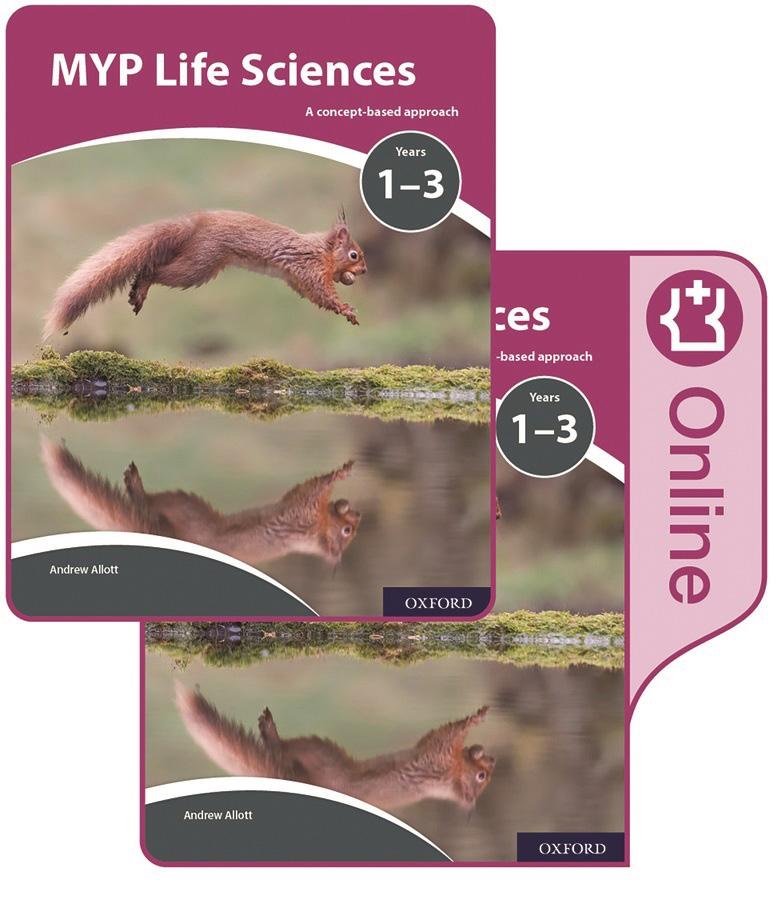
• Strengthen subject knowledge with awareness of wider global contexts and conceptual connections
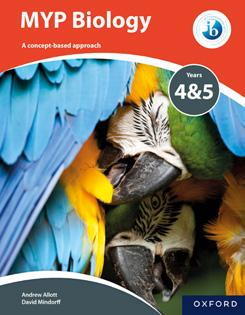
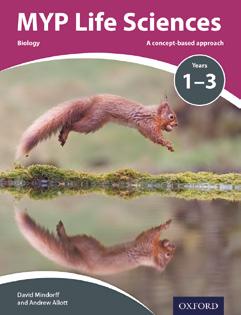
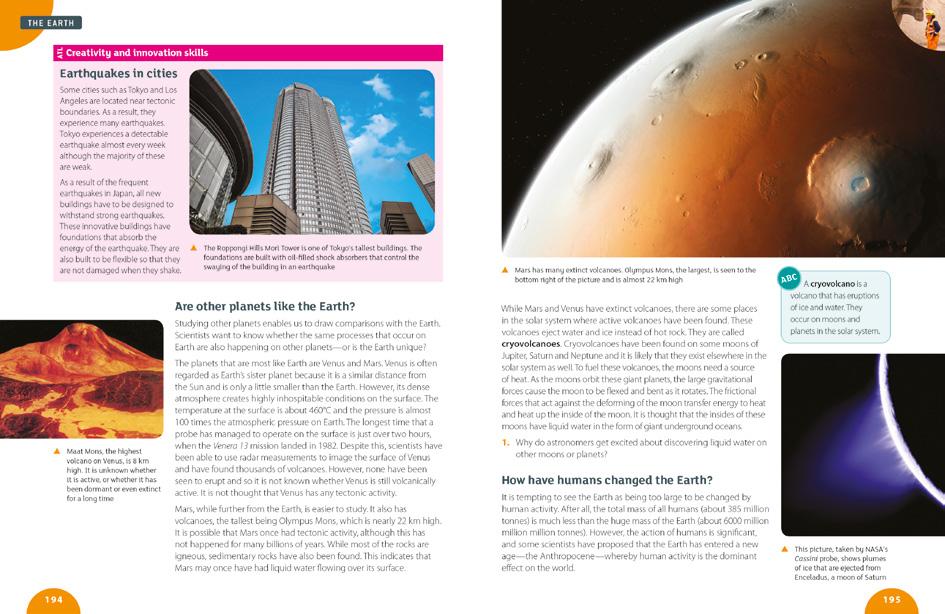
• Develop the transdisciplinary skills that are vital to success at MYP level and progression to DP via regular ATL features
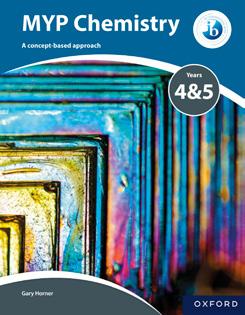
• Drive scientific confidence with extra digital resources embedded in each Enhanced Online Course Book

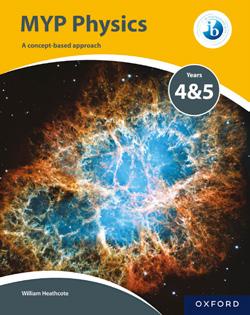
MYP 23
MYP Physical and Earth Sciences 1-3 Course Book Years 1–3 Years 4 & 5 Course Book 978 019 836997 4 Enhanced Online Course Book 978 019 837004 8 Print and Enhanced Online Course Book Pack 978 019 837008 6 Course Book 978 019 836998 1 Enhanced Online Course Book 978 019 837005 5 Print and Enhanced Online Course Book Pack 978 019 837009 3 Published in cooperation with the IB Course Book 978 019 836995 0 Enhanced Online Course Book 978 019 836999 8 Print and Enhanced Online Course Book Pack 978 019 837006 2 Course Book 978 019 836996 7 Enhanced Online Course Book 978 019 837000 0 Print and Enhanced Online Course Book Pack 978 019 837007 9 Course Book 978 019 837555 5 Enhanced Online Course Book 978 019 837556 2 Print and Enhanced Online Course Book Pack 978 019 837557 9 MYP Physical and Earth Sciences A concept-based approach 1–3 MYP Physical and Earth Sciences
Mathematics
Fully comprehensive and matched to the revised MYP framework
Developed directly with the IB, for first teaching in 2020, these comprehensive, inquiry-based resources empower students to develop a deep and engaged understanding of mathematics.
• Fully adopt the MYP approach via clear, structured support for all aspects of the revised MYP framework and eAssessment
• Enable critical exploration of mathematical content, framed within key and related concepts and global contexts
• Promote independent thinking via factual, conceptual and debatable questions and ATL features throughout each unit
• Drive mathematical confidence with extra digital resources embedded in each Enhanced Online Student Book with many opportunities for enrichment

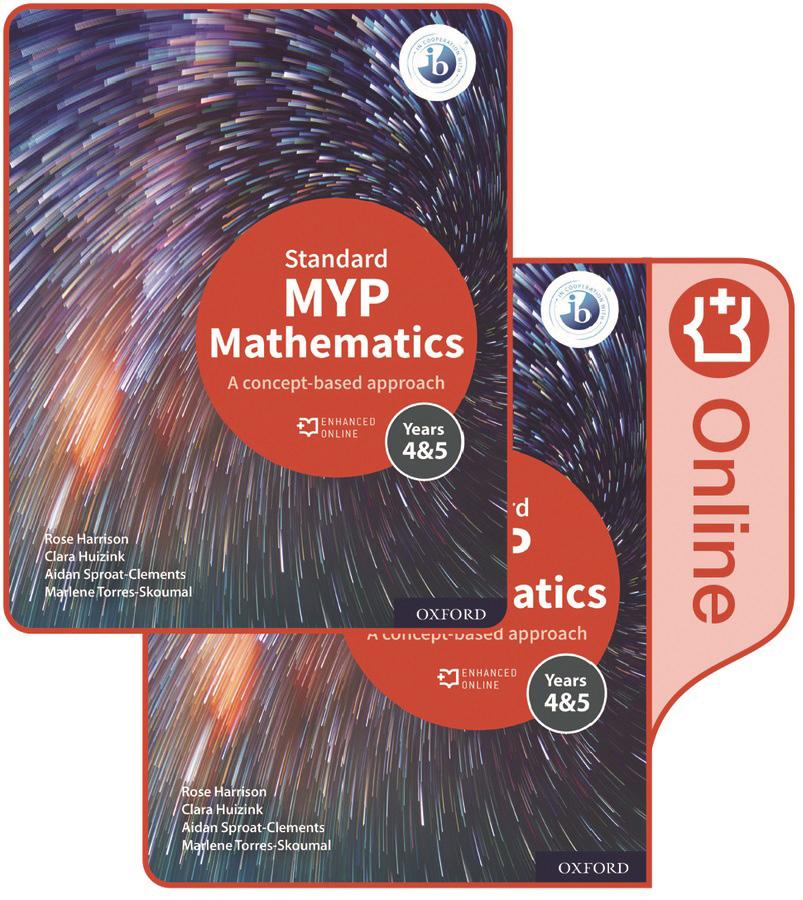
Using the [Oxford] MYP Math book series has been a game changer for our teams to incorporate all the aspects of the IB and our IB unit planners. The learning experiences are extremely engaging for the students and truly captures the inquiry process. I highly recommend the series.
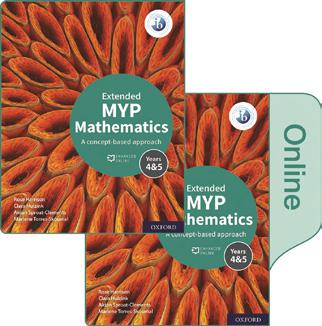
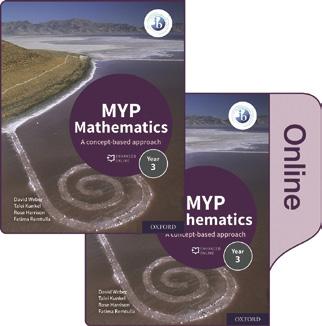
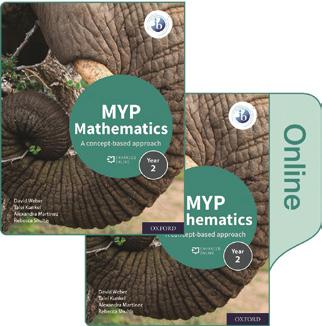
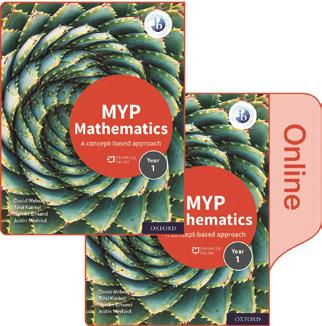
 Jennifer Burgraff, IB Coordinator Wisconsin USA
Jennifer Burgraff, IB Coordinator Wisconsin USA

Years 1–3 Years 4 & 5 Mathematics 1 Mathematics 2 Mathematics 3 Print and Enhanced Online Course Book Pack 978 019 835625 7 Enhanced Online Course Book 978 019 835620 2 Print and Enhanced Online Course Book Pack 978 019 835626 4 Enhanced Online Course Book 978 019 835621 9 Print and Enhanced Online Course Book Pack 978 019 835627 1 Enhanced Online Course Book 978 019 835622 6 Mathematics 4&5 Standard Mathematics 4&5 Extended Print and Enhanced Online Course Book Pack 978 138 201098 6 Enhanced Online Course Book 978 138 201102 0 Print and Enhanced Online Course Book Pack 978 138 201091 7 Enhanced Online Course Book 978 138 201094 8
Sign up for your FREE trial at www.myimaths.com MYP 24
Embed understanding through practice
Build skills and knowledge through inquiry
1 Being specific
Statement of inquiry:
Representing numbers in different forms to simplify them can help understand human-made systems.
Key concept:
Form is the understanding that the underlying structure and shape of an entity is distinguished by its properties.









F What is an approximation? What is a human-made system?














An approximation is a quantity or a representation that is nearly, but not exactly, correct. Quantity is an amount or number.
Estimating
Using a model can help you calculate reasonable estimates. The average human body is about 60% water.















● Modelling your body as a cylinder, calculate an estimate for the volume of water in your body.

● How could you improve your model to make your estimate more accurate?
C How does simplifying lead to better results?
Simplification is the process of reducing something to a less complicated form.


Simplified Chinese
Many traditional characters in the Chinese language are very complex, making the written language hard to learn. From 1949, in an effort to increase literacy, simplified Chinese was introduced. Simplified Chinese is probably easier to learn, because it has fewer strokes per character. Pinyin is the conversion of Chinese characters to a Roman script, based on pronunciation.
The table here shows the Pinyin, Simplified and Traditional characters for three nouns and three verbs.
D Can approximations ever be exact? Do more representations make understanding easier?















Representation is the manner in which something is presented.
Representation in symbols



they ones that are used in places other than maps?
Launch additional digital resources for this unit.
MYP Mathematics 4 & 5 Standard Print and Enhanced Online Course Book
MYP Mathematics 1 Print and Enhanced Online Course Book 3 Algebraic expressions and equations 113 112 Unit review Key to Unit review question levels: Level 1–2 Level 3–4 Level 5–6 Level 7–8 1 What are the next two terms in each of the following sequences? Explain your reasoning. a 5 10 20 40 80 ___ ___ b 1 6 11 16 21 ___ ___ c 31 28 31 30 31 ___ ___ d 96 48 24 12 6 ___ ___ e 10 20 30 40 50 ___ ___ 2 Identify the core of the each pattern. a b c 3 Translate each of the following phrases into a mathematical expression. Use whatever letter or symbol you like for the original number. a 28 divided by a number b A number decreased by 4 c 4 more than a number d 17 times a number e A number added to 12 f A number multiplied by 13 g 6 less than a number h 3 more than twice a number 4 Translate these mathematical expressions back into words. a 4x b a 63 c y 15 d 61 + z e 3x + 7 Not all sequences follow a mathematical pattern. In part c look carefully at the numbers and think about what might come in groups of 31, 30, etc. criteArion Launch additional digital resources for the chapter 5 Substitute the given number into each expression to find the value of the expression. a x 12, when x 20 b 15 3x, when x 2 c x 4 6 + , when x 20 6 Solve each equation. a x + 25 40 b 7x 56 c m 10 11 d p 8 3 e 9b 63 f w 14 6 g h + 52 61 h z 19 21 i d 10 = 15 j 12x = 96 k m + 25 = 44 l n 7 = 7 m g 15 23 n 5y 55 o a 71 43 p 36 − x 12 7 a Draw the next two shapes in the sequence below. Explain the pattern in words.
c Will the number
sequence? Explain why or why not. d Write down a rule to find the next term of the sequence if you know the one before it. 8 a Draw the next two shapes in the pattern and explain the pattern in words.
b Determine what the 10th term in the sequence would be, without drawing it. How do you know?
78 be in this
20th term in the
it. How do you know? c Will the number 46 be in this sequence? Explain why or why not. d Write down a rule to find the next term of the sequence if you know the one before it.
b Determine what the
sequence would be, without drawing
p C p Northern Territory South Australia New South Wales Queensland Victoria Western Australia ACT Tasmania Lake Eyre PACIFIC OCEAN INDIAN OCEAN N 1 2 5 3 (aluminium) Copper Gold Iron ore Lead and zinc Silver Mineral resources Energy resources Natural gas Solar power station Wind power station Hydro power station KEY Weipa Gove Ranger Merlin Blacktip Toms Gully Jabiru Bayu-Udan Puf n Challis Mount Isa Century Ernest Henry Cannington Balcooma Pajingo Ipswich Twin Hills Wilpena Pound Endeavour CSA Tritton Hunter Newcastle Singleton Gunnedah Southern Northparkes Cadia Bendigo Ballarat Beacons eld John Butters Reece Gordon Poatina La Trobe Valley Snowy Mountains Eildon Kiewa Henty Mt Lyell Savage River Woolnorth Rosebery Stawell Challicum Hills Beverley Moomba-Gidgealpa Jackson Leigh Creek Collie Darling Range Paraburdoo Yarrie Cockatoo Island Argyle Lajamanu Coyote Granites Kings Canyon Hermannsburg Palm Valley Mereenie Deepdale Brockman West Angelas Telfer Nifty Orebody 29 Plutonic Magellan Lawlers Super Pit Koolyanobbing Dongara Walkaway Tallering Peak Olympic Dam Challenger Middleback Range Cathedral Rocks Lake Bonney-Canunda Snowtown Bowen Basin Bass Strait Global context: Globalization and sustainability Exploration: Explore different ways of measuring human-made systems
3
English Pinyin Simplified character(s) Traditional character(s) Mathematics shù xué 数学 數學 To count shù 数 數 To learn xué 学 學 Book shu 书 書 Horse ma 马 馬 To thank xiè 谢 謝 2 MYP 25
English Language Acquisition Capable
(Phases 3&4)
Build fluency and confidence
Developed directly with the IB to be fully integrated with the revised MYP framework, for first teaching in 2020. This comprehensive resource equips learners to acquire and practice essential language skills while developing wider conceptual and contextual awareness.
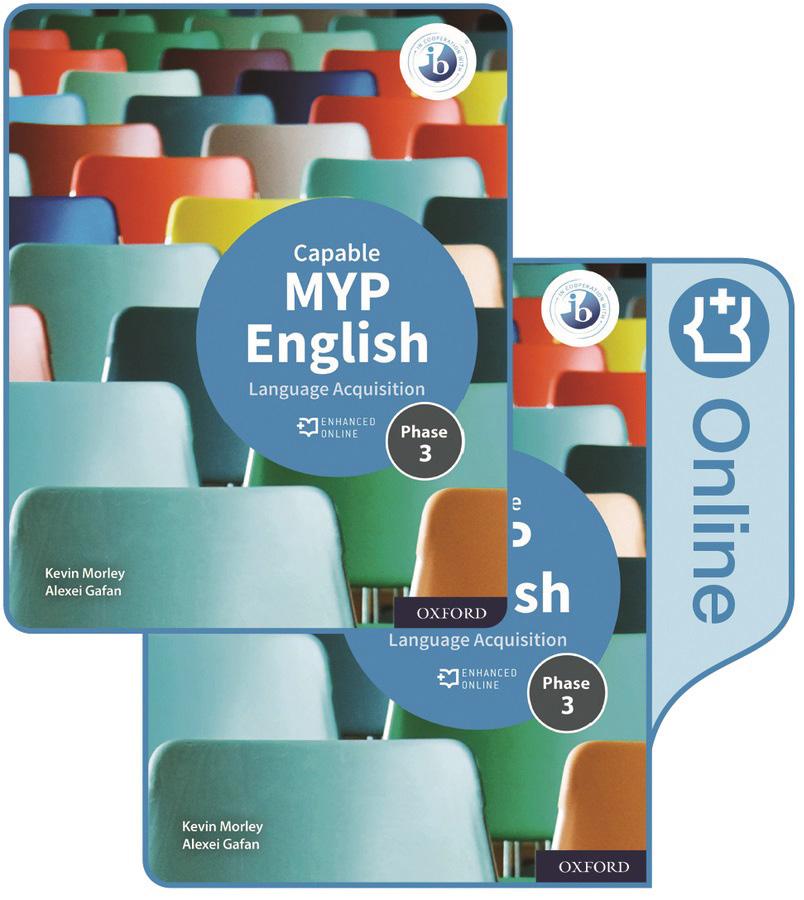
• Build the high levels of English fluency central to student success in the IB Diploma Programme

• Connect learning material and objectives with the latest MYP curriculum structure
• Frame English language learning within the context of key and related concepts, statements of inquiry, global contexts and approaches to learning
• Facilitate inquiry-based learning that drives reflection on big picture questions as students develop language skills
• Develop confident language learners with new listening comprehension audio clips and accompanying activities embedded in the Enhanced Online Student Book
Onward https://www.youtube.com/ watch?v=A5Z7QsRGxGo
understanding of explicit and implicit information, and the conventions and connections in the text.
• The Reading assessment requires you to respond to a multimodal text. It assesses your understanding of explicit and implicit information, and the conventions and connections in the text.
• The Speaking assessment requires you to respond to a multimodal text and the following debatable question. Debatable question 1: Does the function of a quest story depend on what the writer wants to communicate?
• The Writing assessment requires you to respond to a multimodal text and the following debatable question. Debatable question 2: Is the way we communicate a story affected by our word choice?
Summative assessment A: Listening

A: Listening
Assessment criterion
At the end of the capable level, you will be able to:
i. identify explicit and implicit information (facts, opinions, messages and supporting details)
ii. analyse conventions
iii. analyse connections.
Watch and listen to the following text and then answer the questions.
Listening activities: notes on marking The listening recordings are short. Each recording is assessed using two activities which are made up of eight questions in total.
1. In an MYP summative assessment, grade using the Grading criteria given on the left.
2. If using this assessment for MYP eAssessment practice (MYP 5 only): 16 marks is the maximum score for the listening component of the MYP eAssessment. Award 2 marks for each correct answer. This mark scheme gives the Listening section the same weighting as the equivalent reading, speaking and writing assessments in the eAssessment.
Search words: onward trailer november disney
Answer these questions.
1. What is the content of the video?
A. A short version of a quest story.
B. A trailer for a film about a quest.
C. A review of a film about a quest.
2. What does the narrator do during the video?
A. Tells the viewers what to expect from the film.
B. Describes the journey that the seekers will take.
C. Explains where the audience can see the film.
3. What is the purpose of the final written instruction: “Make some magic”?
A. To make the viewers think they are taking part in the quest.
B. To help the viewers understand the plot and the characters.
C. To teach the viewers how to take part in a quest. Tick one option for each of the following statements.
Additional Listening practice for Summative assessments Click on the icon below for further listening practice on the topic for this chapter.
Here you will find both an additional video and an additional Summative listening assessment.

Who says . . ? The voiceoverThe older brotherThe younger brother
4. Long ago the world was full of wonder.”
5. “Dad was a wizard.”
6. “We are going on a quest.”
7. The expressway is faster.”
8. This place may be boobytrapped.”
MYP English Language Acquisition Capable (Phases 3&4) Print and Enhanced Online Course Book Pack 978 138 201075 7 Enhanced Online Course Book 978 138 201079 5 26 ORIENTATION IN TIME AND SPACE: QUESTS Summative assessments: Orientation in time and space Statement of inquiry Statement of inquiry One of the functions of storytelling is to communicate a sense of time and space and this can be achieved through word choice In these summative assessments you will be assessed on your use of the four communication skills you have developed in this chapter: Listening, Reading, Speaking and Writing. In each assessment, you will also have an opportunity to show your understanding of the topic for this chapter, Quests • The Listening assessment requires you to respond to a video. It assesses your
230 231 MYP
MYP
English Capable Print and Enhanced Online Course Book
English Language Acquisition Proficient (Phases 5&6)
Build the language confidence learners need for DP
Developed directly with the IB to be fully integrated with the revised MYP Language Acquisition framework, for first teaching in 2020. This comprehensive, inquiry-based resource hones the understanding and skills needed to confidently progress to the IB Diploma Programme.
• Build the high levels of English fluency central to student success in the IB Diploma Programme

• Connect learning material and objectives with the latest MYP curriculum structure

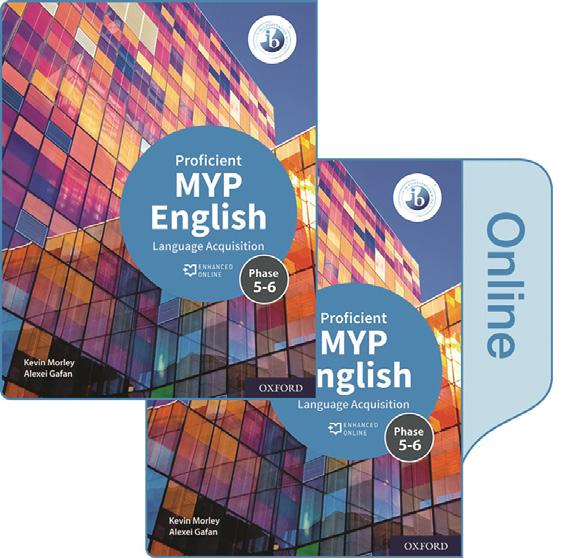
• Frame English language learning within the context of key and related concepts, statements of inquiry, global contexts and approaches to learning
• Facilitate inquiry-based learning that drives reflection on big picture questions as students develop language skills
• Develop confident language learners with new listening comprehension audio clips and accompanying activities embedded in the Enhanced Online Student Book
Chinese Language Acquisition
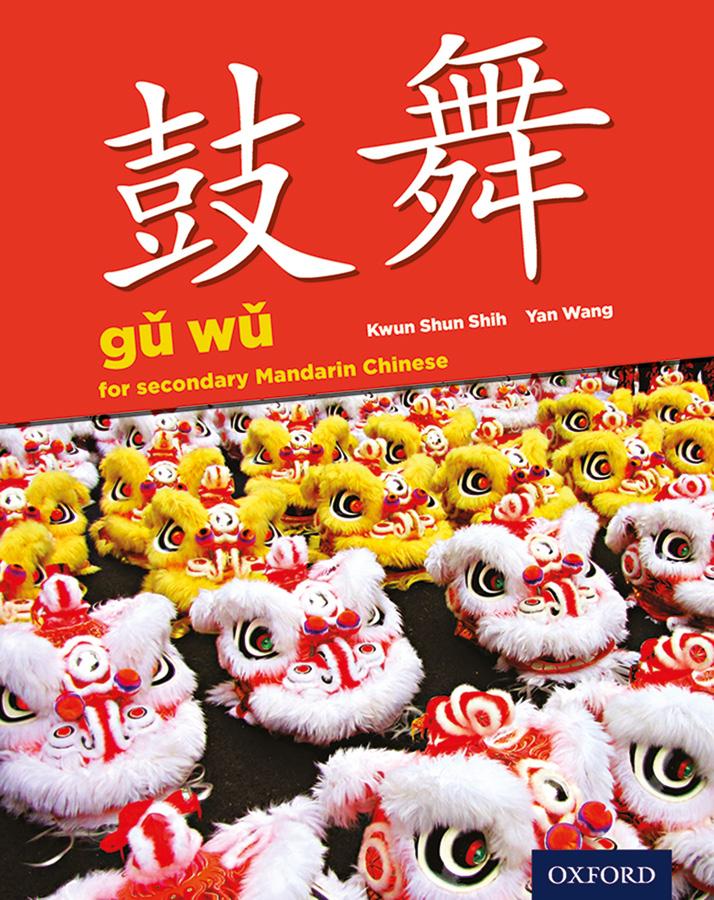
Achieve in Secondary Mandarin Chinese
Suitable for MYP Language Acquisition (Phases 1-3) and IB DP Ab Initio frameworks, this thematic Student Book is accompanied by a Teacher Pack.
• Build and evaluate language skills with clear grammatical explanations, glossaries, theme-based activities and assessment tasks
• Tailor your teaching to the MYP framework with lesson resources, differentiation ideas and syllabus-specific support, via the Teacher Pack
Gǔ Wǔ for Secondary Mandarin Chinese Student Book 978 019 840832 1 Teacher Pack 978 019 840835 2 MYP English Language Acquisition Proficient (Phases 5&6) Print and Enhanced Online Course Book Pack 978 138 201083 2 Enhanced Online Course Book 978 138 201087 0 27 MYP
Spanish Language Acquisition Emergent (Phases 1&2)
Secure the Spanish language foundations central to success

Developed directly with the IB, to be fully integrated with the revised MYP Language Acquisition framework, for first teaching in 2020. This comprehensive, inquiry-based resource applies key and related concepts to relevant learning material, helping you fully deliver the MYP approach.

• Build a strong foundation of Spanish skills and comprehension, preparing MYP learners to progress
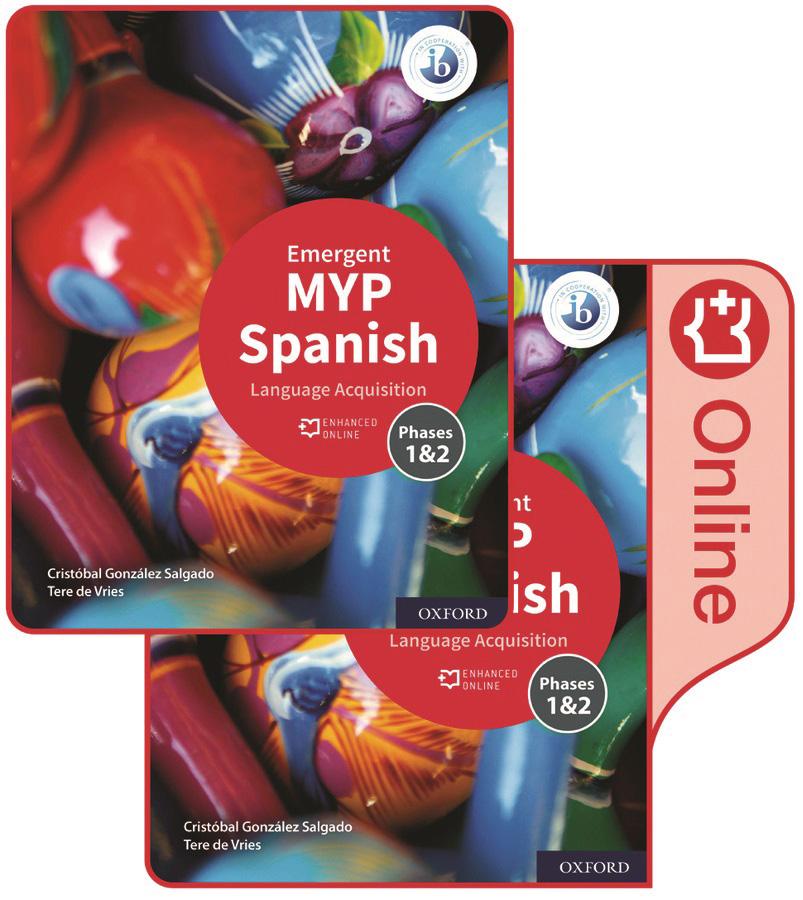
• Fully integrate concept-based learning with an inquiry-based unit structure that drives independent thinking
• Build interpreting, listening, speaking reading and writing skills framed within key and related concepts
• Develop vital Language Acquisition skills via new listening comprehension audio clips with accompanying activities embedded in the Enhanced Online Student Book
• Measure progress using updated formative and summative assessment tasks that are clearly linked to the new MYP eAssessment criteria
12.2 ¿Qué sabes de la geografía del mundo hispano?
a. Trabaja en grupos de 3 o 4. ¿Cuántos países hispanohablantes conoces? Escribe una lista. Contesta también las preguntas siguientes SIN usar la tecnología.
1. ¿En cuántos continentes hay países hispanohablantes? ¿Cuáles son?

2. ¿Cuántos países hispanohablantes hay?
3. En el año 2050, ¿qué país del mundo va a tener probablemente el mayor número de hablantes de español?
b. Luego, compara tu lista con la lista de otros grupos.
c. Finalmente, usa la tecnología para buscar la información y chequear tus resultados.
d. ¿Saben ustedes dónde están los países hispanohablantes?
Miren los mapas y traten de establecer la ubicación de esos países.
Escuchamos
e. Escucha el concurso “El lugar misterioso” y contesta las preguntas.
Criterio Ai
1. ¿Cuántos concursantes participan en el concurso?
2. ¿De qué país son los concursantes?
3. ¿Qué información es verdadera?
● Se come una sopa sólida.
● El guaraní es la única lengua oficial.
● La bandera es blanca, roja y azul, y tiene dos escudos diferentes.
● El país tiene la mejor carne del mundo.
● La bebida nacional se llama tereré.
● El país está rodeado un 70% por agua del mar.
4. ¿De qué país se trata?
● Argentina
● Brasil
● Bolivia
● Paraguay

5. ¿Qué convenciones de un concurso tiene este texto?
Criterio Aii
6. Relaciona las imágenes con la información del texto. ¿Qué crees que representan las imágenes?
12.3 Costa Rica, pura vida
dónde está qué es clima capital otra información
b. Lee el texto y comprueba.
Leemos a. ¿Qué sabes de Costa Rica? Habla con tus compañeros/-as. http://www.encostarica co.cr/

Información sobre Costa Rica

Costa Rica es un país pequeño, pero rico por su gente, por su nivel de educación, por su capacidad de aprendizaje y por su especialización. Su riqueza natural consiste en su fauna, su flora, sus ríos, sus playas en ambos océanos (el Atlántico y el Pacífico), su tierra y su clima diverso los doce meses del año. No existen preocupaciones políticas ni sociales que mantengan inestable al país. En Costa Rica no hay un ejército. El ejército de Costa Rica lo constituyen sus maestros y su gran masa trabajadora, desde un obrero hasta un biotecnólogo, todos conviviendo en paz. El pueblo costarricense se caracteriza por su legendaria cordialidad y su naturaleza amistosa. La gran mayoría de la población desciende de los colonizadores españoles y europeos.
El idioma oficial es el español, no obstante, un porcentaje creciente de la población habla el inglés.
División política
El territorio del país está dividido administrativamente en siete provincias: San José, la capital; Alajuela, Cartago, Heredia, Guanacaste, Puntarenas y Limón.
Ubicación
Costa Rica tiene una extensión de 51.100 km2
Limita al Norte con Nicaragua, al Sur con Panamá, al Este y al Oeste con los océanos Atlántico y Pacífico, respectivamente. Su costa Atlántica mide 255 kms, mientras que el litoral Pacífico se extiende 1.103 kms. Ambas costas gozan de una abundancia de playas de primera clase y con una vegetación exuberante.
L A DIVERSI DAD GEOGR ÁF ICA Y CULT UR A L D EL M UNDO H IS PANO
A B C Criterio
global Globalización y sustentabilidad Indagadores Informados e intruidos 290 291 MYP Spanish Emergent Print and Enhanced Online Course Book MYP Spanish Language Acquisition Emergent (Phases 1&2) Print and Enhanced Online Course Book Pack 978 138 201106 8 Enhanced Online Course Book 978 138 201110 5 28 MYP
Aiii Contexto
Spanish Language Acquisition Capable (Phases
3&4)
Grow and develop sophisticated language skills

Developed directly with the IB to be fully integrated with the revised MYP Language Acquisition framework for first teaching in 2020. This comprehensive, inquiry-based resource hones the understanding and skills needed to confidently progress to the IB Diploma Programme.

• Grow and develop sophisticated language skills and comprehension, preparing MYP learners to progress
• Fully integrate concept-based learning with an inquiry-based unit structure that drives independent thinking
• Build interpreting, listening, speaking reading and writing skills framed within key and related concepts
• Develop sophisticated Language Acquisition skills via new listening comprehension audio clips with accompanying activities embedded in the Enhanced Online Student Book
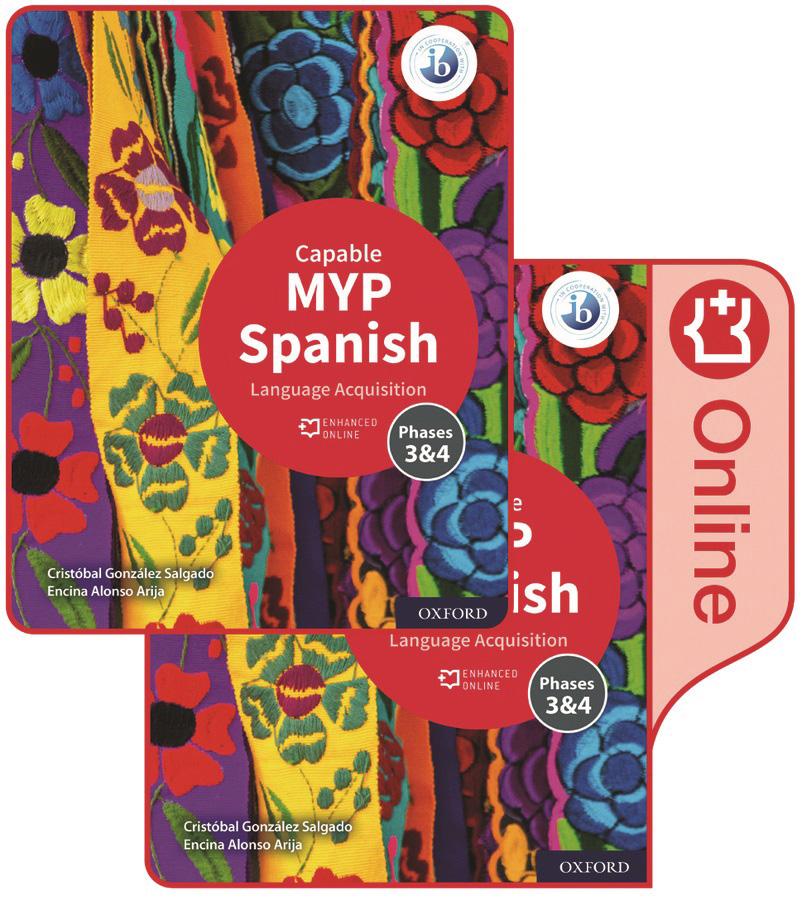
• Connect activities with the MYP assessment criteria, preparing learners for summative assessment
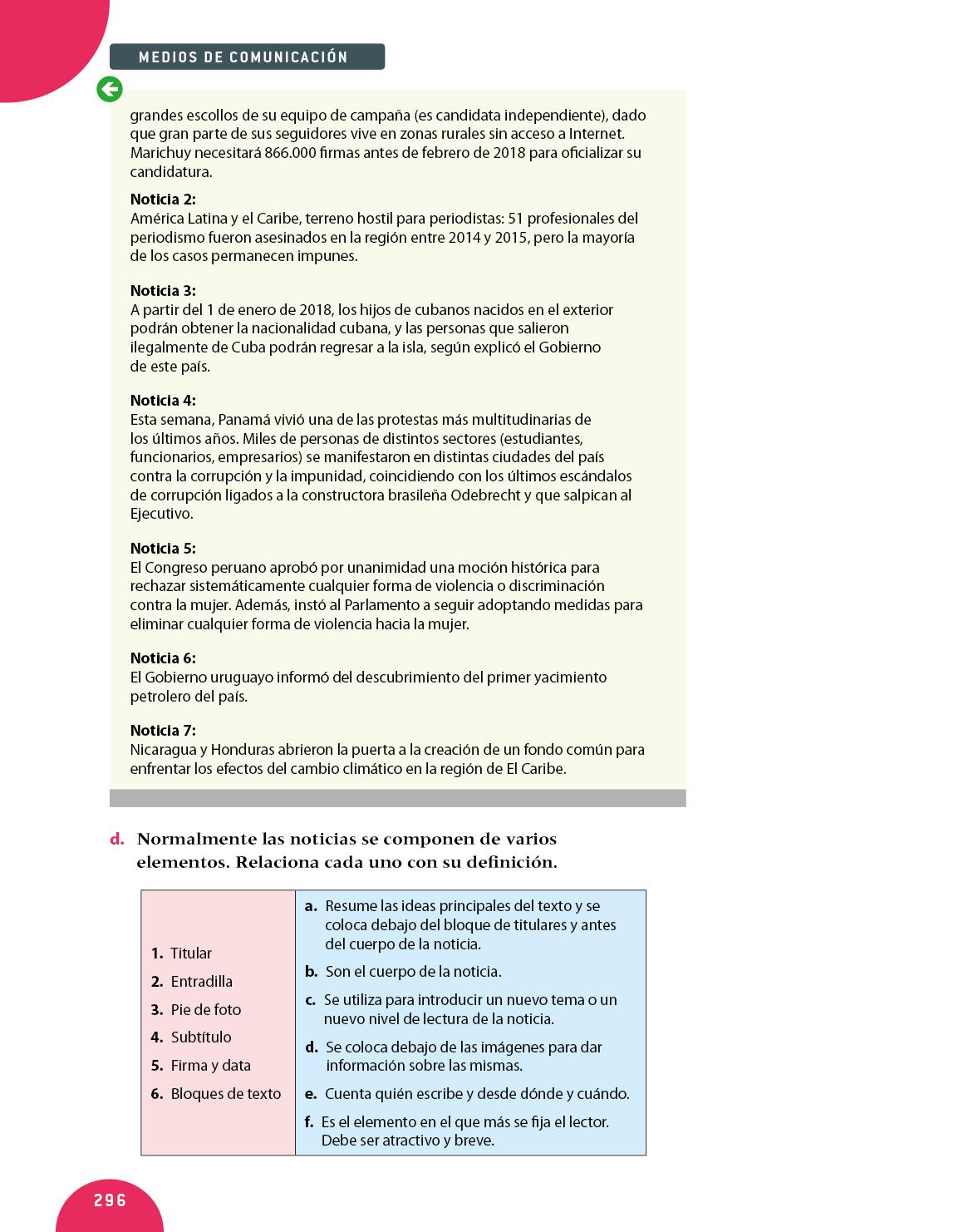
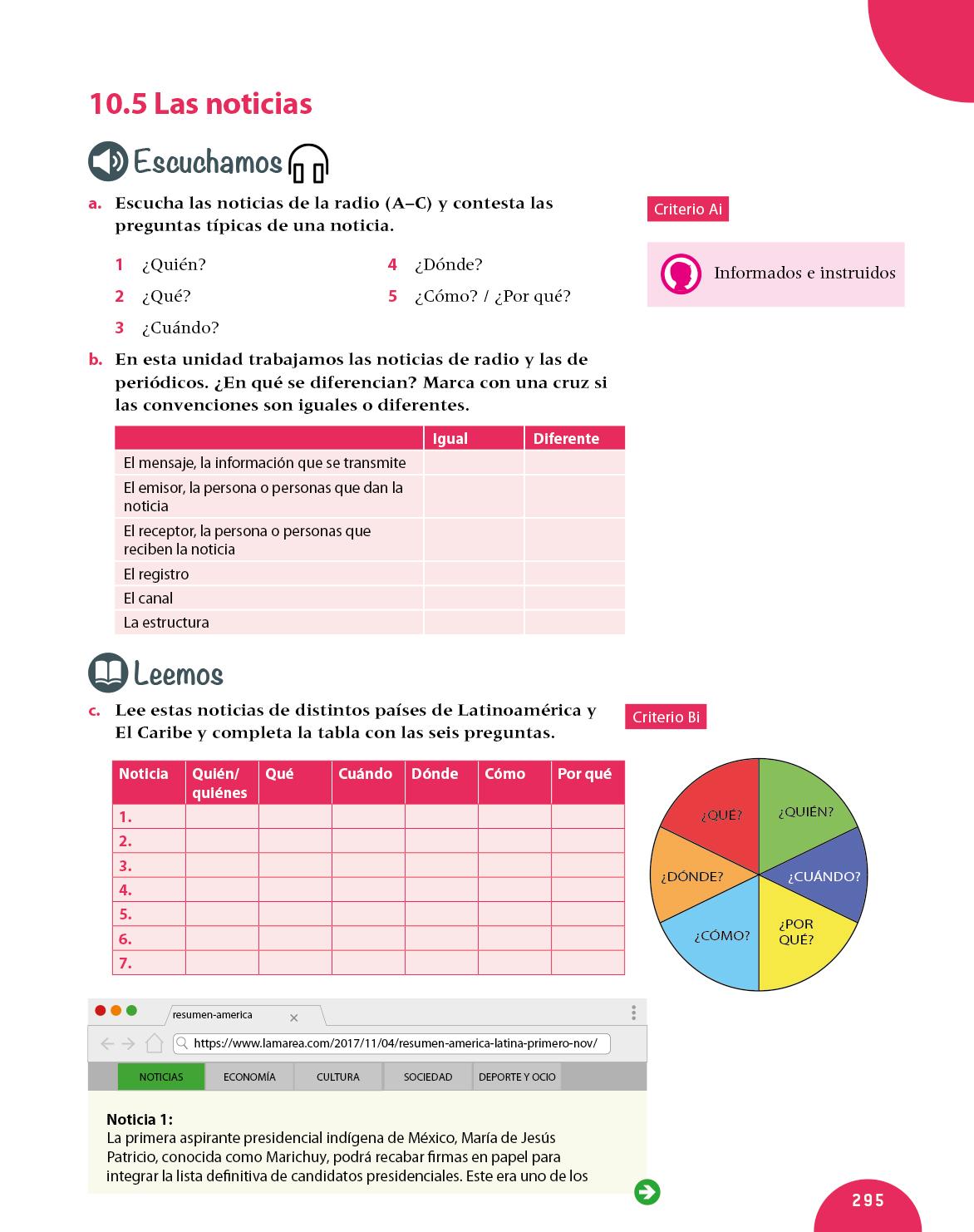
29
MYP Spanish Capable Print and Enhanced Online Course Book MYP Spanish Language Acquisition Capable (Phases 3&4) Print and Enhanced Online Course Book Pack 978 138 201114 3 Enhanced Online Course Book 978 138 201118 1 MYP
Primary Years Programme

















Mathematics

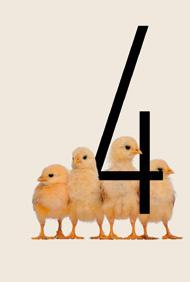




























Explore inquiry-based resources


























Fully supporting the PYP approach, these inquiry-based resources provide comprehensive coverage of the PYP Mathematics scope and sequence.



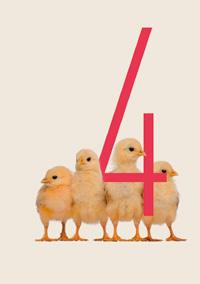
• Cover the five strands of mathematics using the PYP methodology of constructing, transferring and applying meaning


• Build knowledge and skills and explore the PYP transdisciplinary themes via inquiry-based activities that are rooted in relevant, real-life contexts
• Ensure all learners are supported with guidance on differentiation, suggestions for group activities, and pre- and post-assessments for every topic

30
Student BookPYP Oxford Mathematics Annie
Primary Years Programme k Student Books 978 019 031219 0 978 019 031220 6 978 019 031221 3 978 019 031222 0 978 019 031223 7 978 019 031224 4 978 019 031225 1 Practice and Mastery Books 978 019 031226 8 978 019 031227 5 978 019 031228 2 978 019 031229 9 978 019 031230 5 978 019 031231 2 Teacher Books 978 019 031232 9 978 019 031233 6 978 019 031234 3 978 019 031235 0 978 019 031236 7 978 019 031237 4 978 019 031238 1 Year 6 Year 5 Year 4 Year 3 Year 2 Year 1 Year K Oxford Mathematics Primary Years Programme k Oxford Mathematics Primary Years Programme 1 Oxford Mathematics Primary Years Programme 3 Annie Facchinetti Oxford Mathematics Primary Years Programme Oxford Mathematics Primary Years Programme 5 Oxford Mathematics Primary Years Programme Brian Murray Brian Murray Oxford Mathematics Primary Years Programme Oxford Mathematics Anita Green Primary Years Programme 1 Brian Murray Oxford Mathematics Primary Years Programme 3 Oxford Mathematics Primary Years Programme Oxford Mathematics Primary Years Programme 5 Oxford Mathematics Primary Years Programme Brian Murray Oxford Mathematics Primary Years Programme Oxford Mathematics Primary Years Programme k Brian Murray Oxford Mathematics Annie Facchinetti Primary Years Programme 1 Brian Murray Oxford Mathematics Primary Years Programme 3 Brian Murray Oxford Mathematics Primary Years Programme Oxford Mathematics Primary Years Programme Annie Facchinetti 5 Oxford Mathematics Primary Years Programme Brian Murray Brian Murray Oxford Mathematics Primary Years Programme
Facchinetti
PYP
Nurture independent, confident learners
Primary MyiMaths is a digital maths resource for use in the classroom and at home, with dedicated support for PYP.
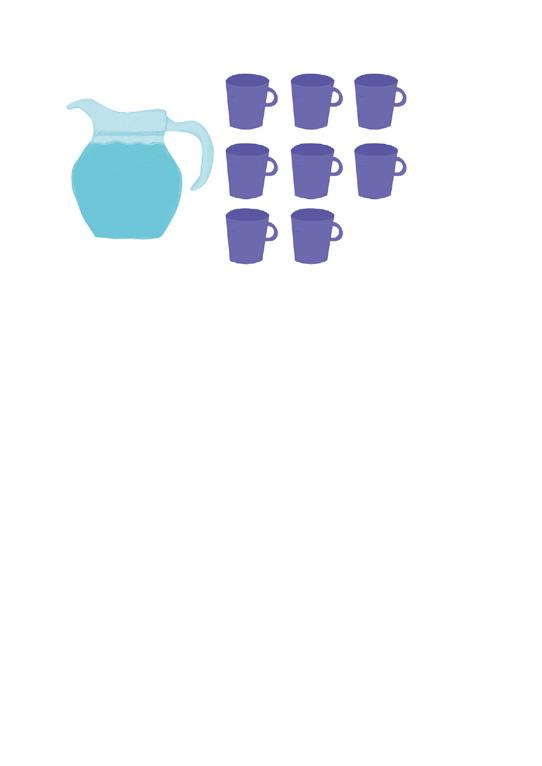
• Easily demonstrate concepts with hundreds of interactive, ready-made lessons
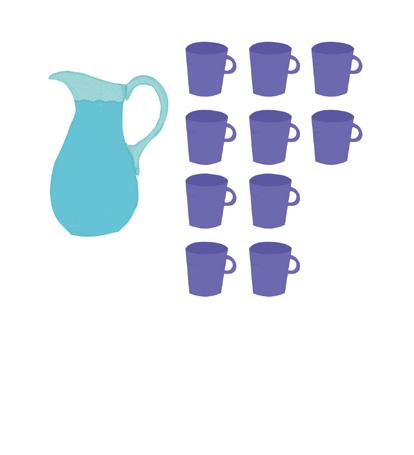
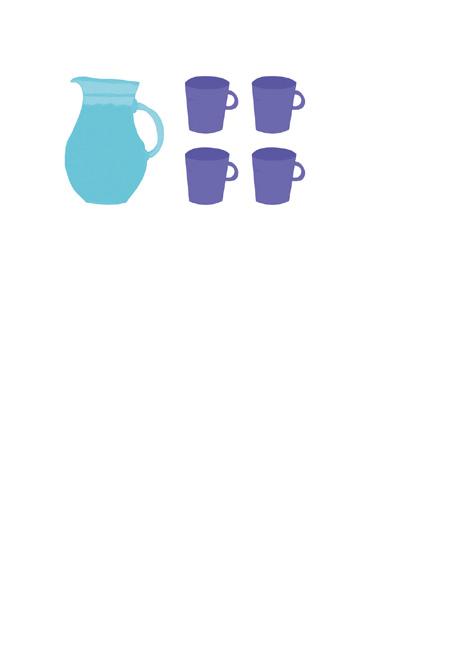


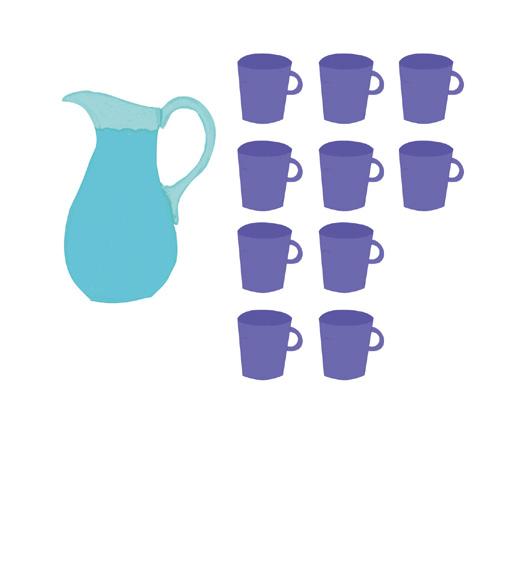

• Build fluency through fun maths games



















• Save time and track progress with auto marking and assessment tools
Facilitating an active, multi-sensory approach, Numicon allows learners to explore mathematics using structured imagery, apparatus and step-by-step activities.
• Build learners’ confidence when problem-solving by showing how and why they arrived at their answers
• Develop understanding by applying real-life contexts to activities

• Effectively monitor learners’ progress using flexible assessment tools

For more information about Numicon, please visit: www.oxfordprimary.com/numicon
To download a guide that explores how to use Numicon to teach the PYP Mathematics scope and sequence, visit: www.oxfordprimary.com/pyp
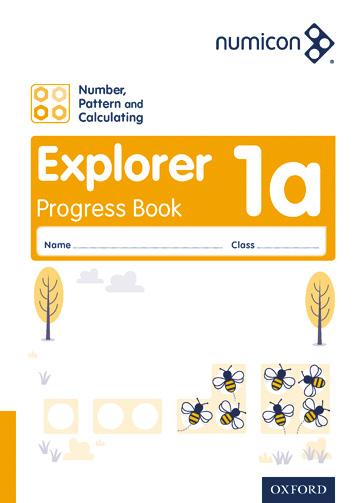
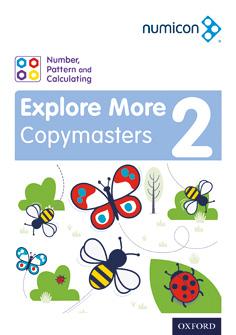
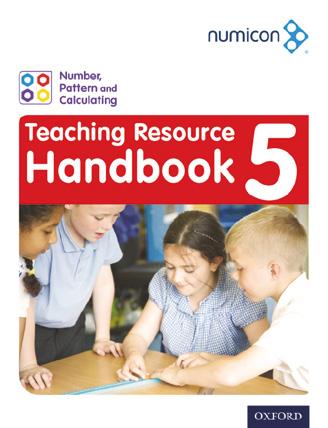
31 PYP
Independent practice Circle the unit you would use to measure the capacity of the items. c 2 Draw an item with capacity. b Draw an item with a smaller c Circle the unit you would use to measure the capacity of the items you drew. 71 OXFORD UNIVERSITY PRESS OX_MATH_PYP_SB1_12206_TXT_4pp.indb 71 30-May-18 12:13:03 PM
Oxford Mathematics Primary Years Programme Student Book 1 cups This
Capacity is how much a container can hold. 70 OXFORD UNIVERSITY PRESS OX_MATH_PYP_SB1_12206_TXT_4pp.indb 70 30-May-18 12:12:31 PM
bowl has a capacity of 10 cups.
Sign up for your FREE 30-day trial at www.myimaths.com
Oxford Resources for IB: Evaluation
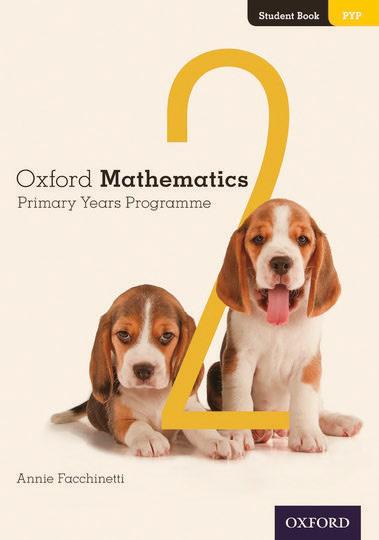
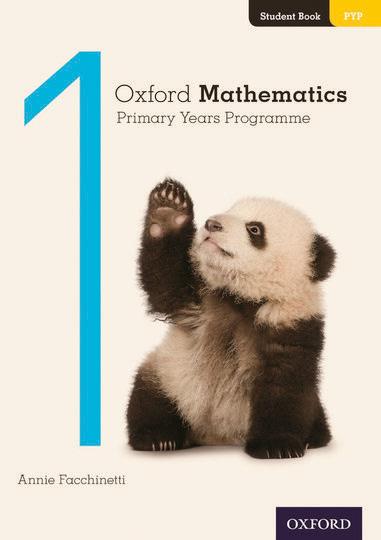
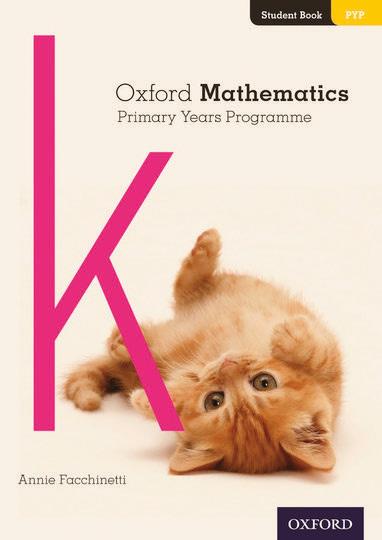
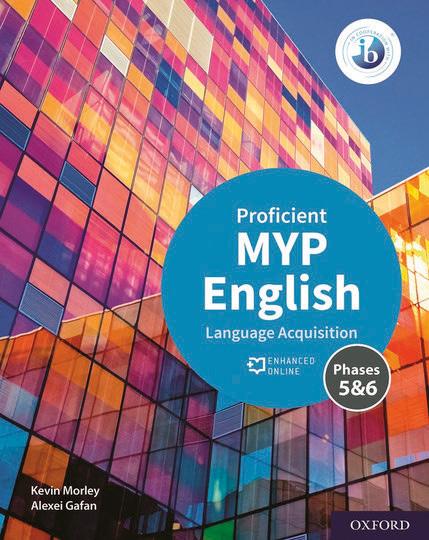
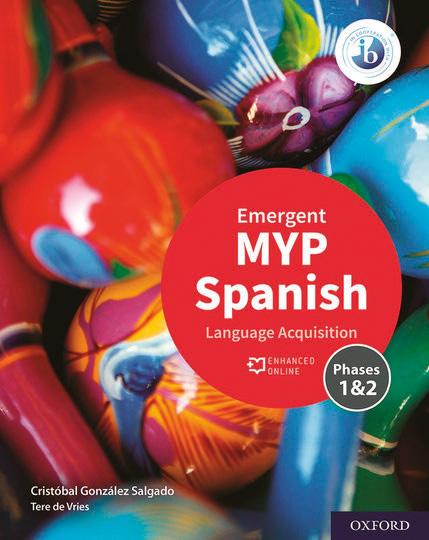
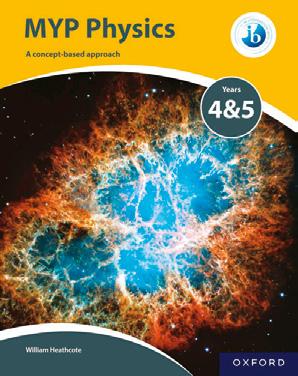
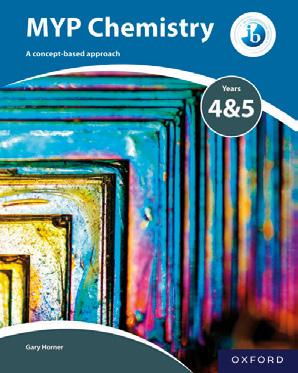
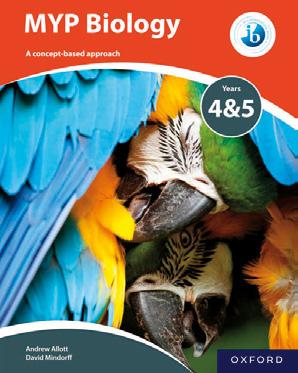
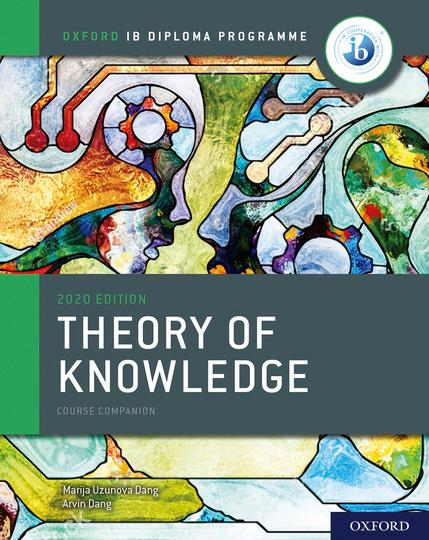
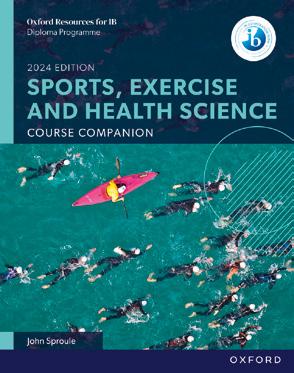
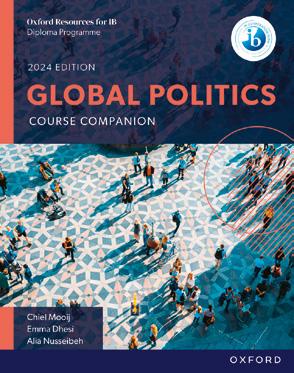

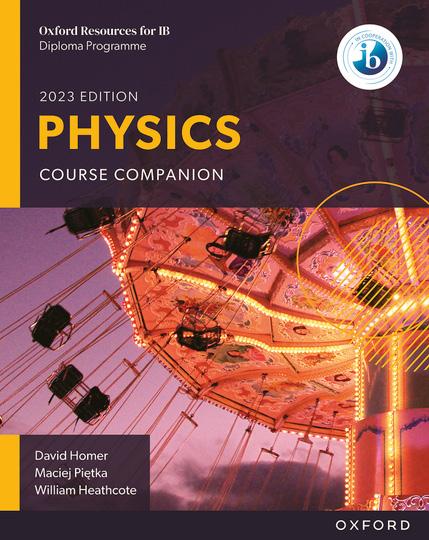
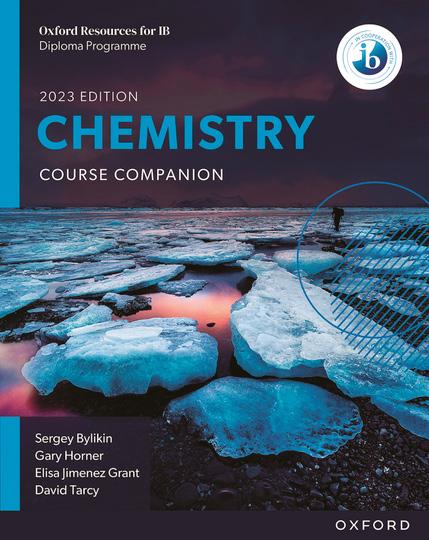
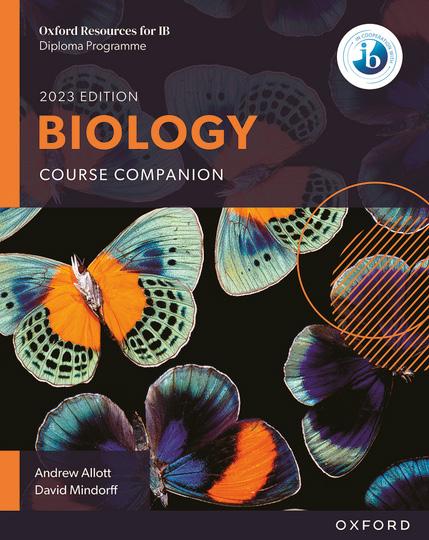
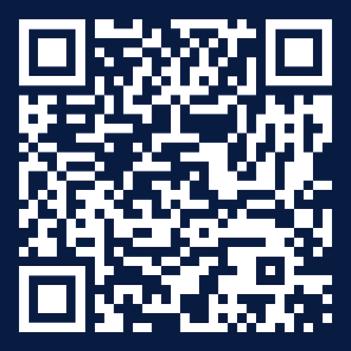
Access free online evaluation of our resources, to ensure they suit you and your students.
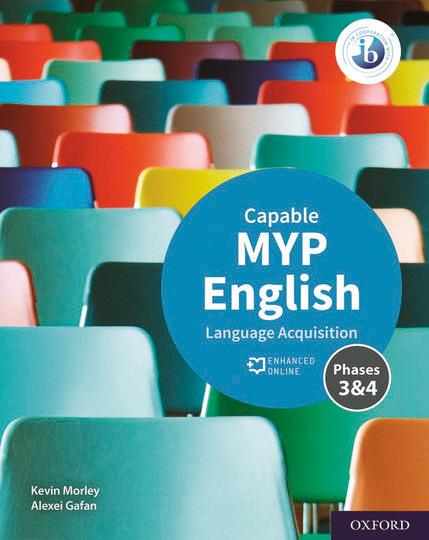
Evaluation for all of the following titles and more is available on our website! Visit
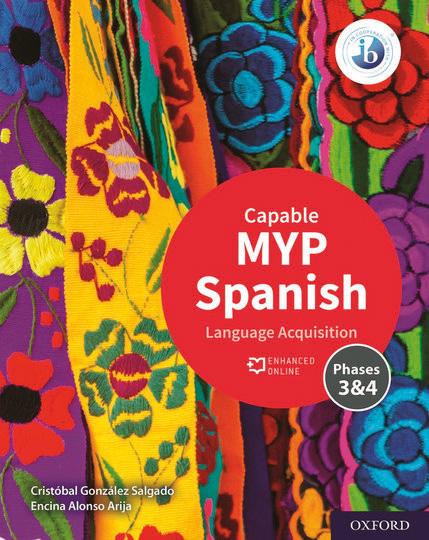
the webpage now!
We’re here to help you make a difference through...
Support
We’reheretohelpyouensureeverystudentreachestheirfullpotential viacompleteIBsyllabussupport,accessibleprofessionaldevelopment andaknowledgableteamofEducationalConsultants.
Expertise
WeworkwithexperiencedIBteachersandeducatorstoensureOxford IBresourcesarefullyalignedtothelatestcurriculumandreflectthe IB’sapproachtoteachingandlearning.
Stronger results
Ourassessment-focusedresourcesconsolidateessentialexamskills andknowledge,buildingfoundationsforfuturesuccessby encouragingstudentstothinkindependently.
Oxford Impact
Our evidence-based resources make it easy for you to select those that make the greatest impact. Find out more at www.oup.com/oxfordimpact
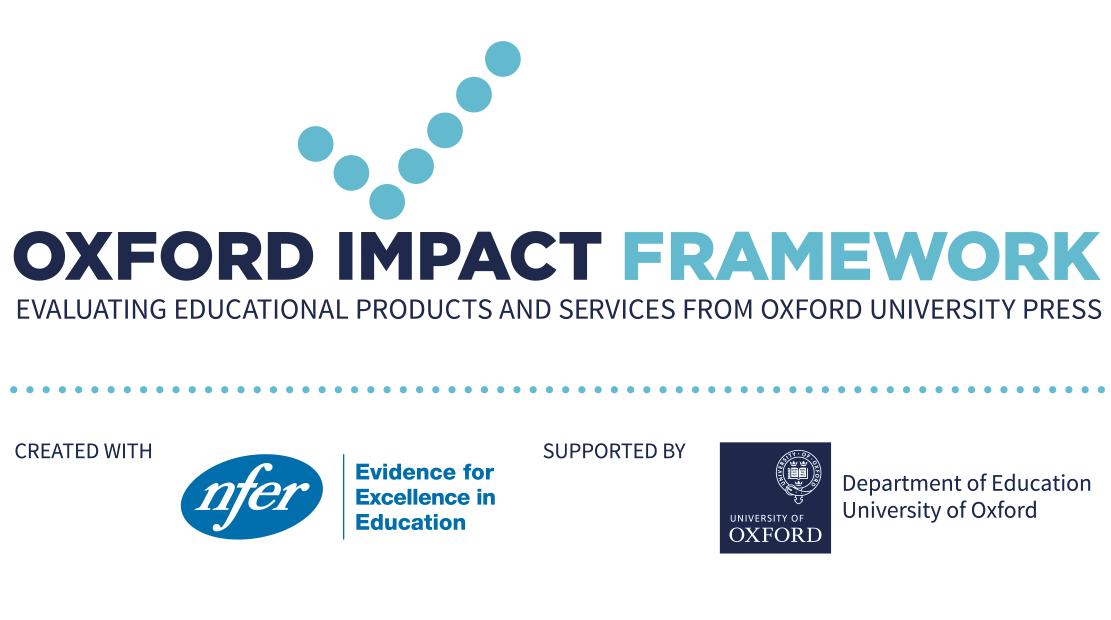

www.oup.com.au/ib K45982
all starts here
B Diploma Programme
Middle Years Programme
Primary Years Programme Oxford IB resources support: Your next steps Get support from your local Educational Consultant: www.oup.com.au/contact Place an order: Call: 1300 650 616 Email: cs.au@oup.com Find out more: www.oup.com.au/ib facebook.com/oupanz @OxfordAustraliaNZ oxford-university-press-australia-new-zealand www youtube.com/@OxfordUniversityPressANZ
It
I
IB
IB


























































































































 Markus Mattila, DP Maths teacher, Thailand
Markus Mattila, DP Maths teacher, Thailand

















































 Jennifer Burgraff, IB Coordinator Wisconsin USA
Jennifer Burgraff, IB Coordinator Wisconsin USA




















































































































































